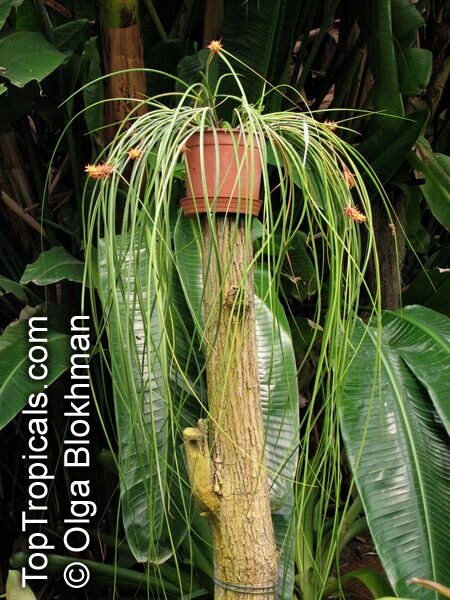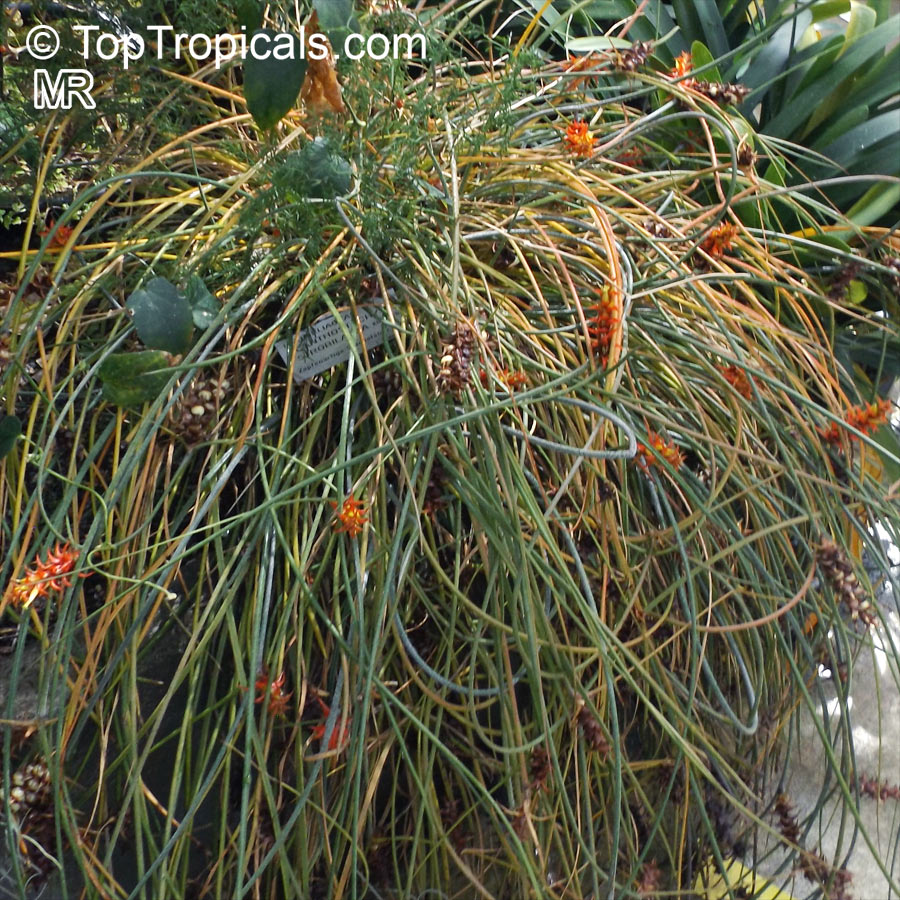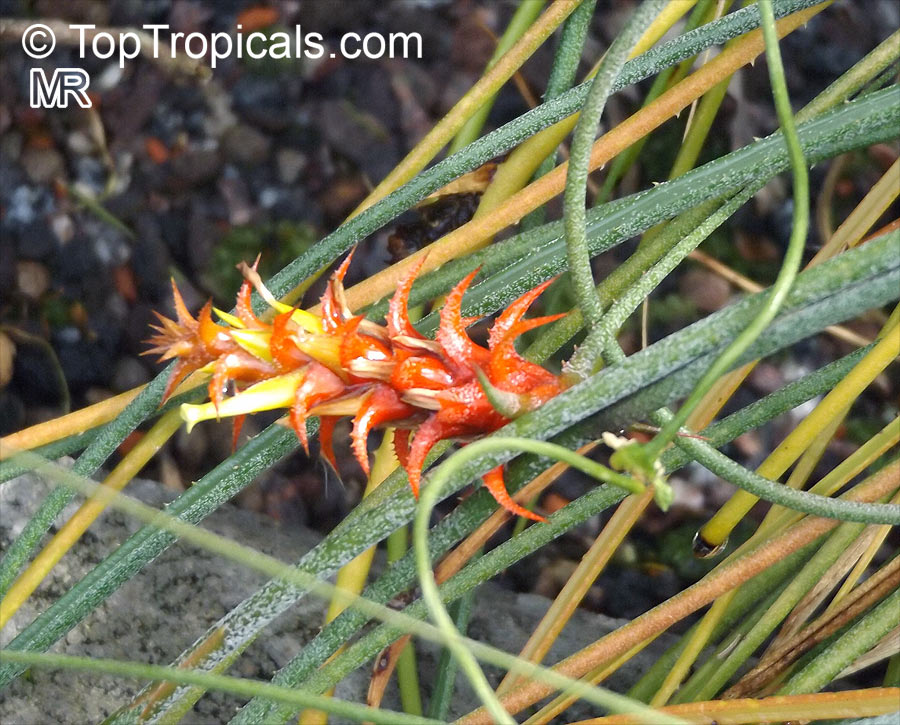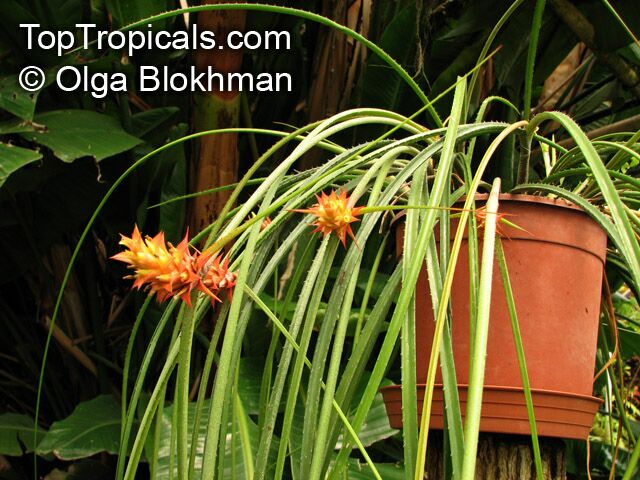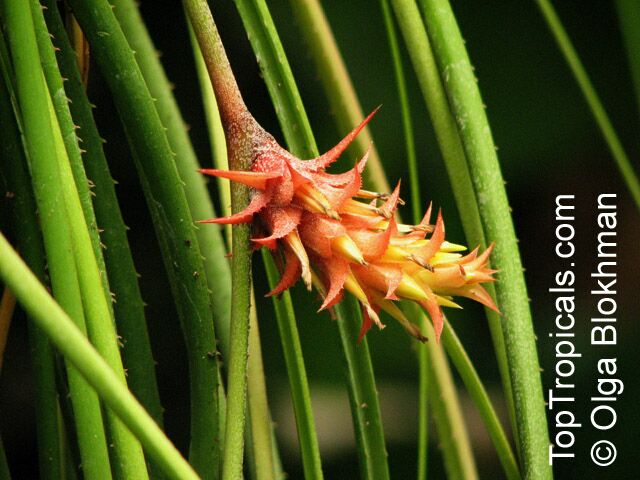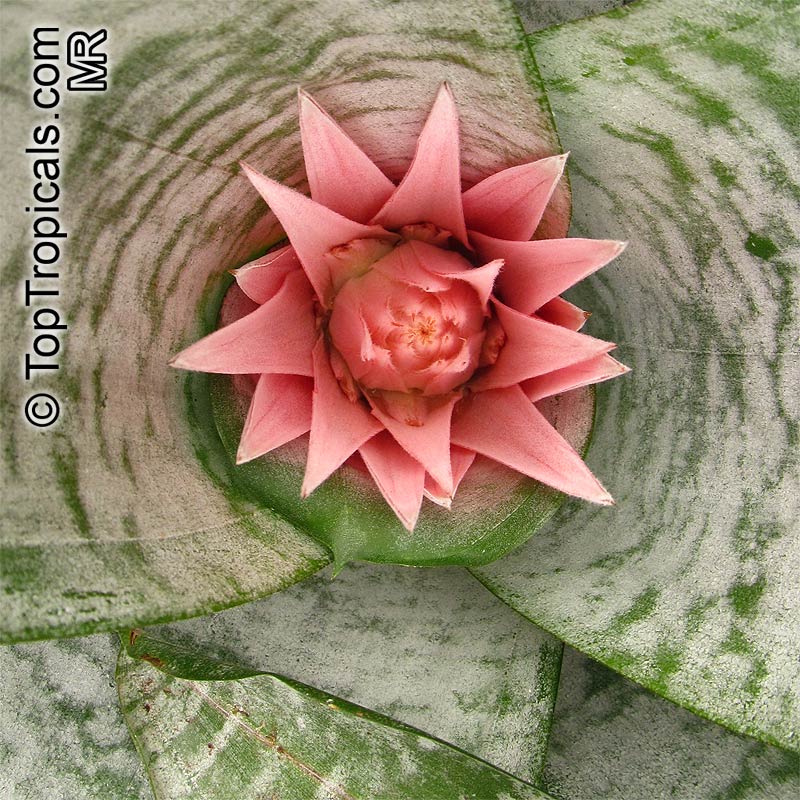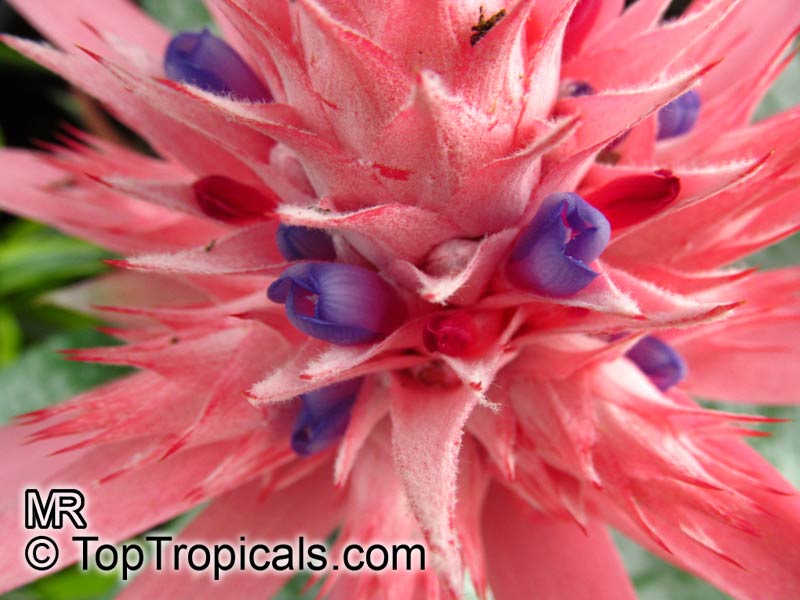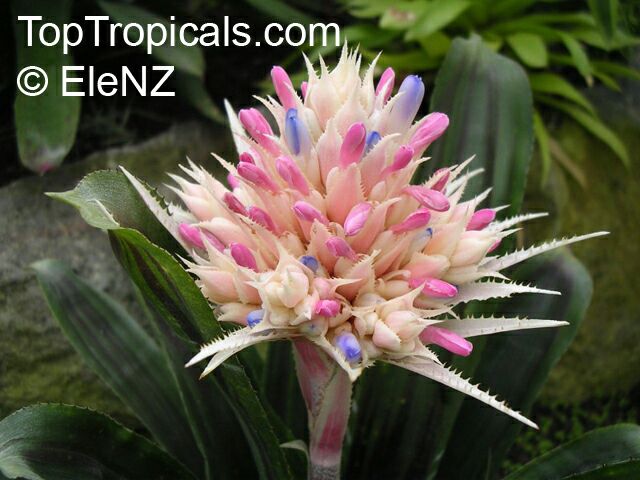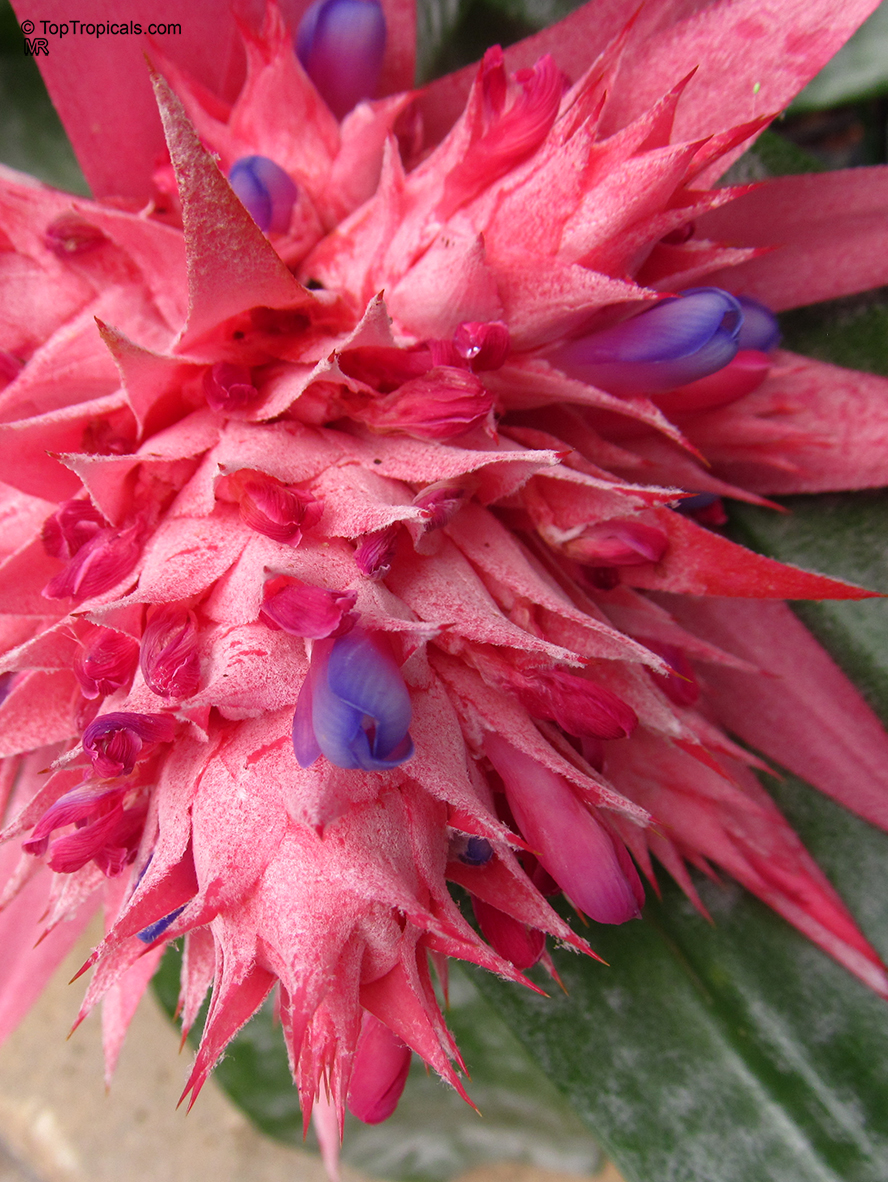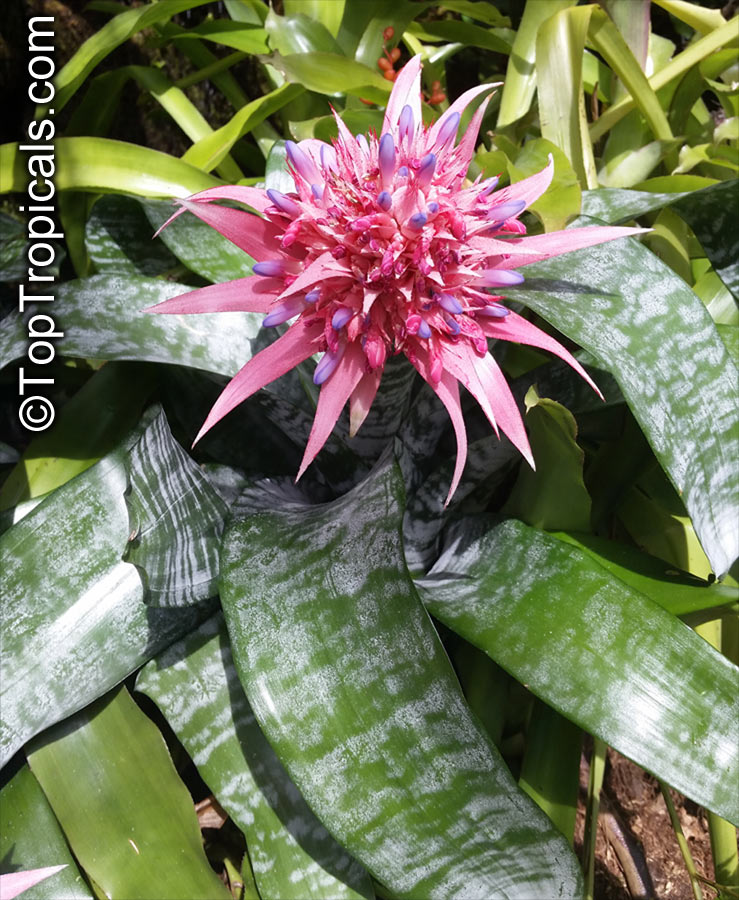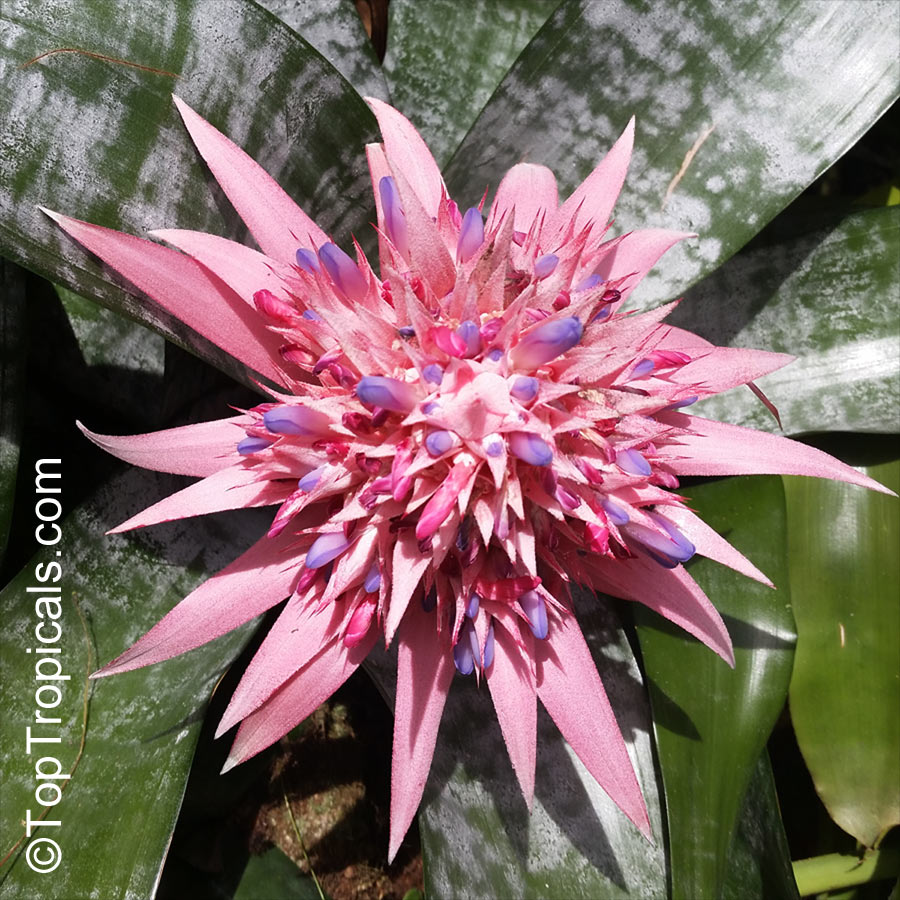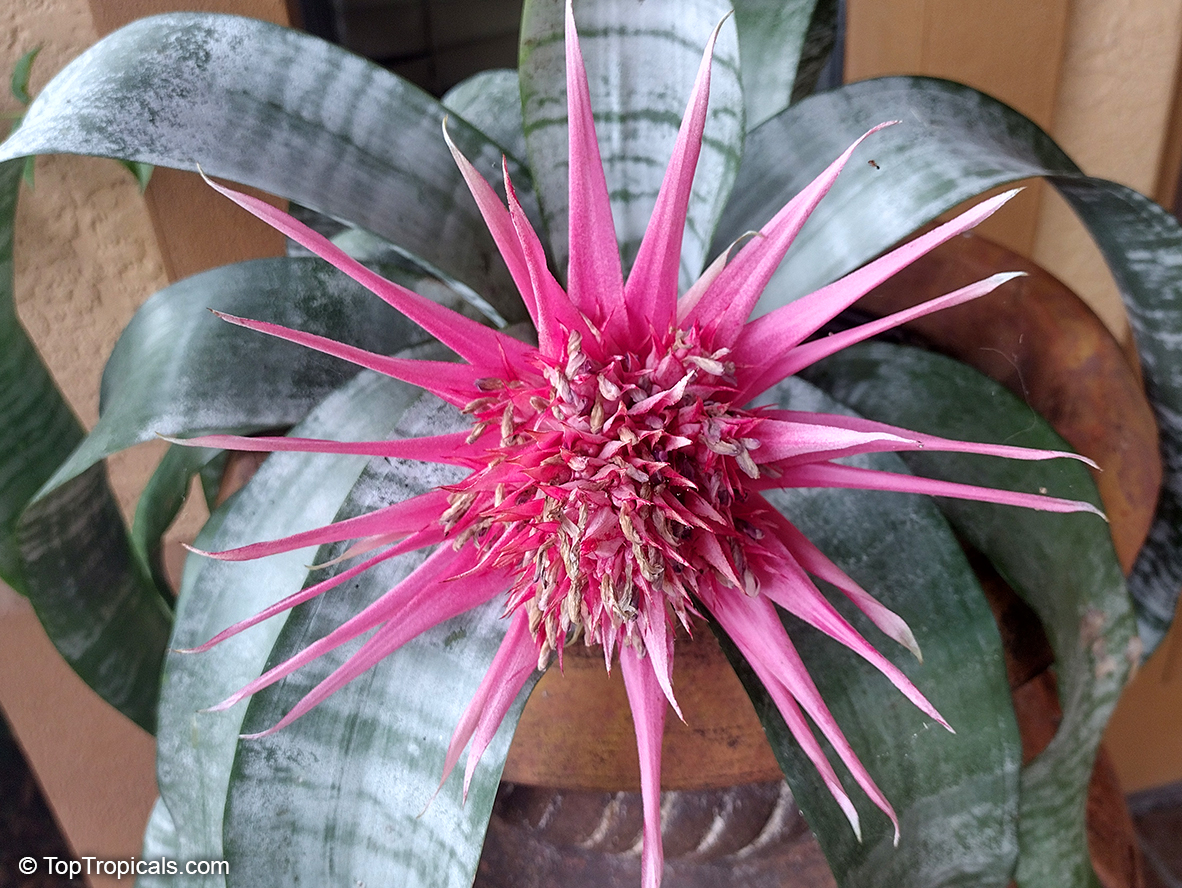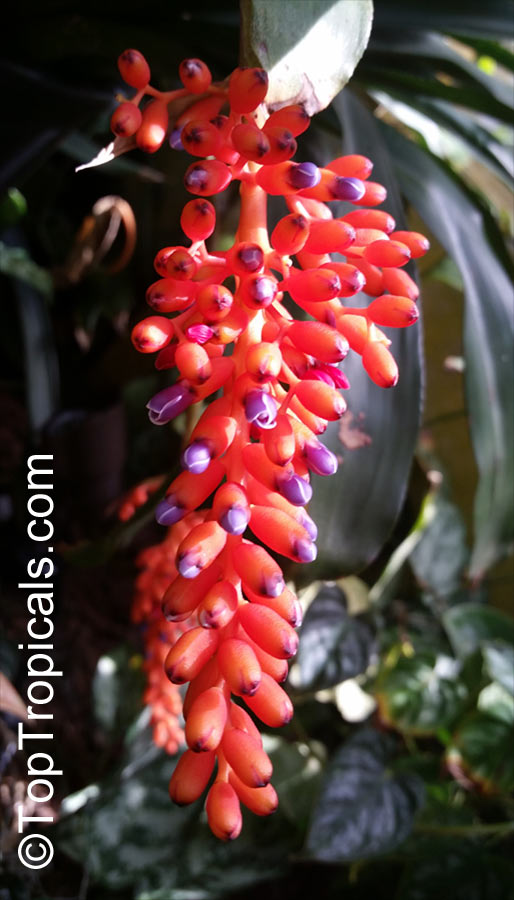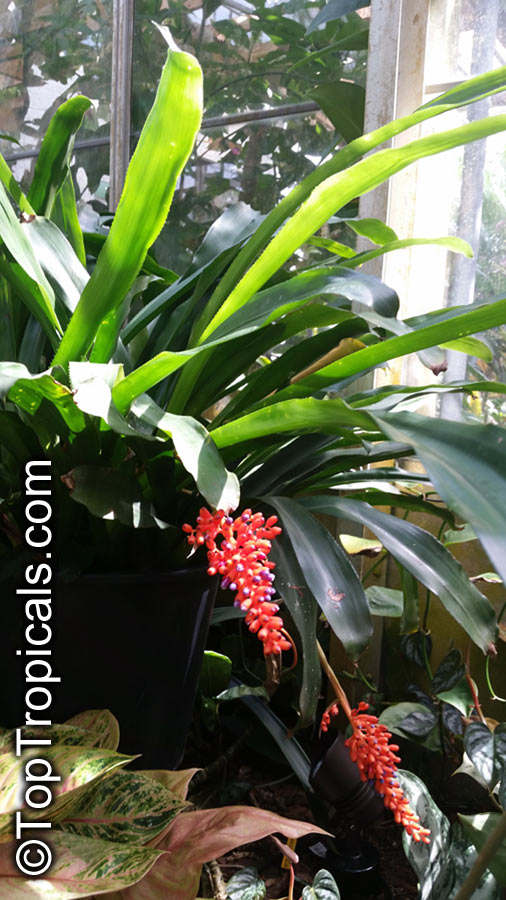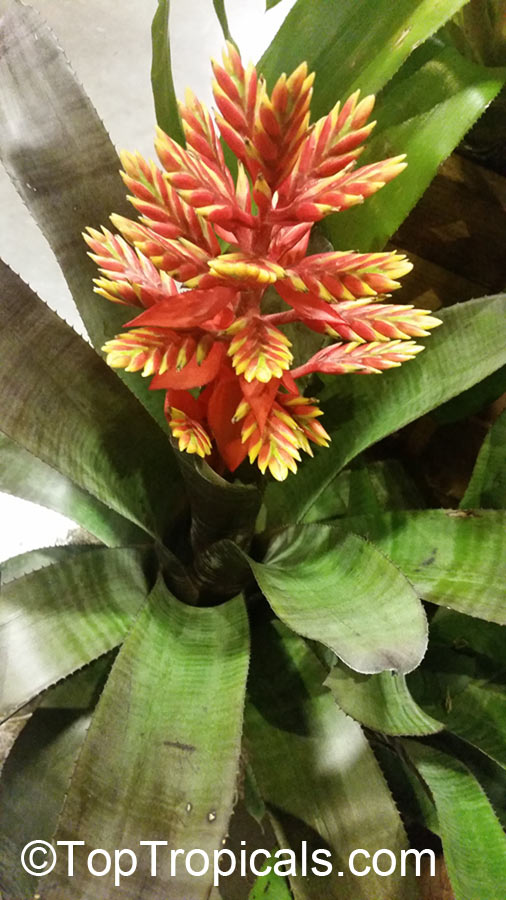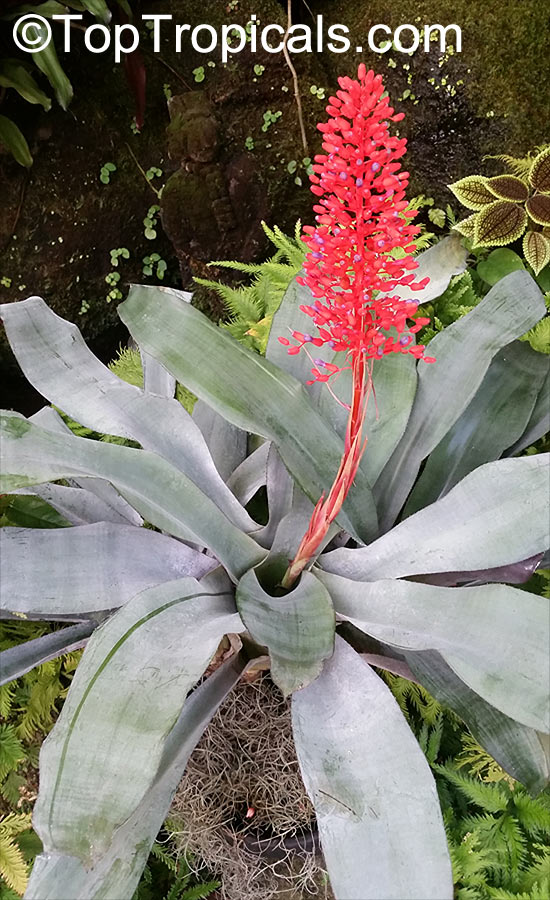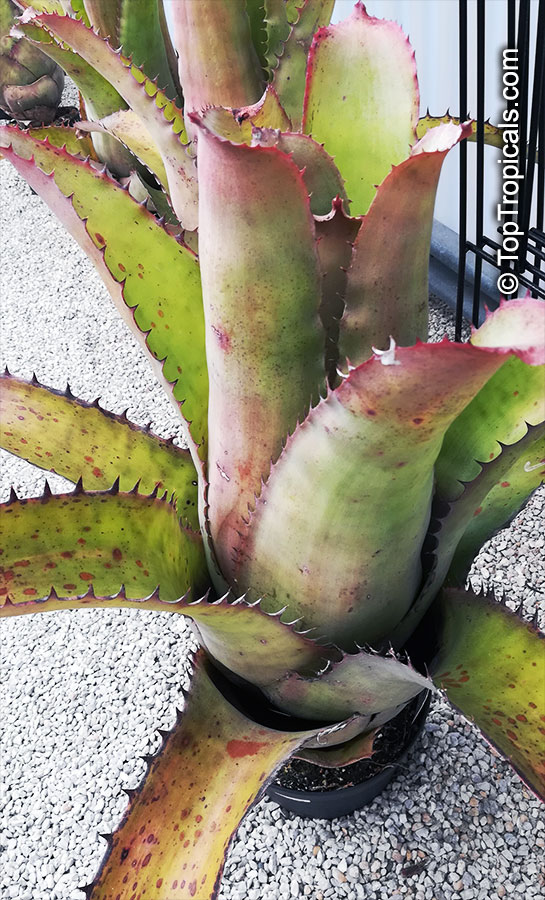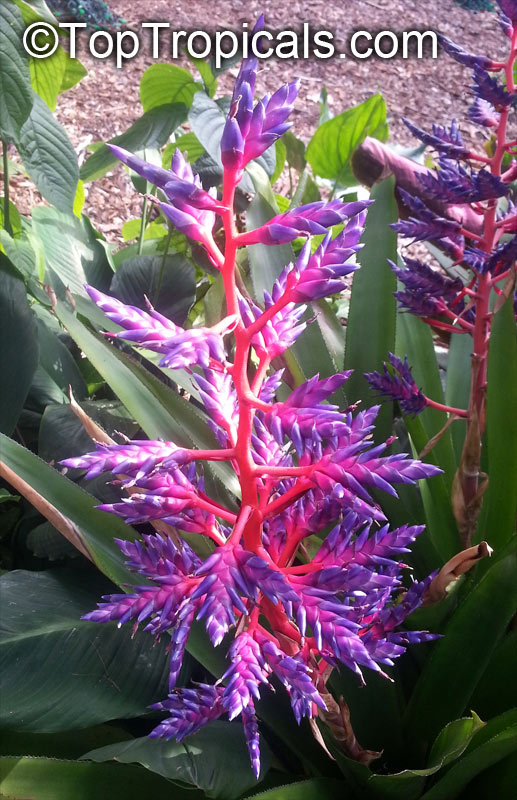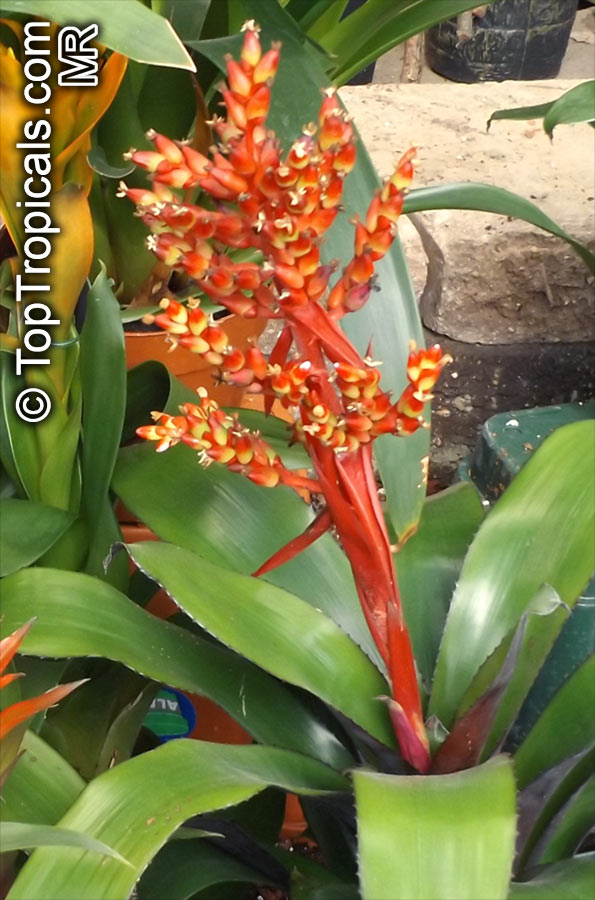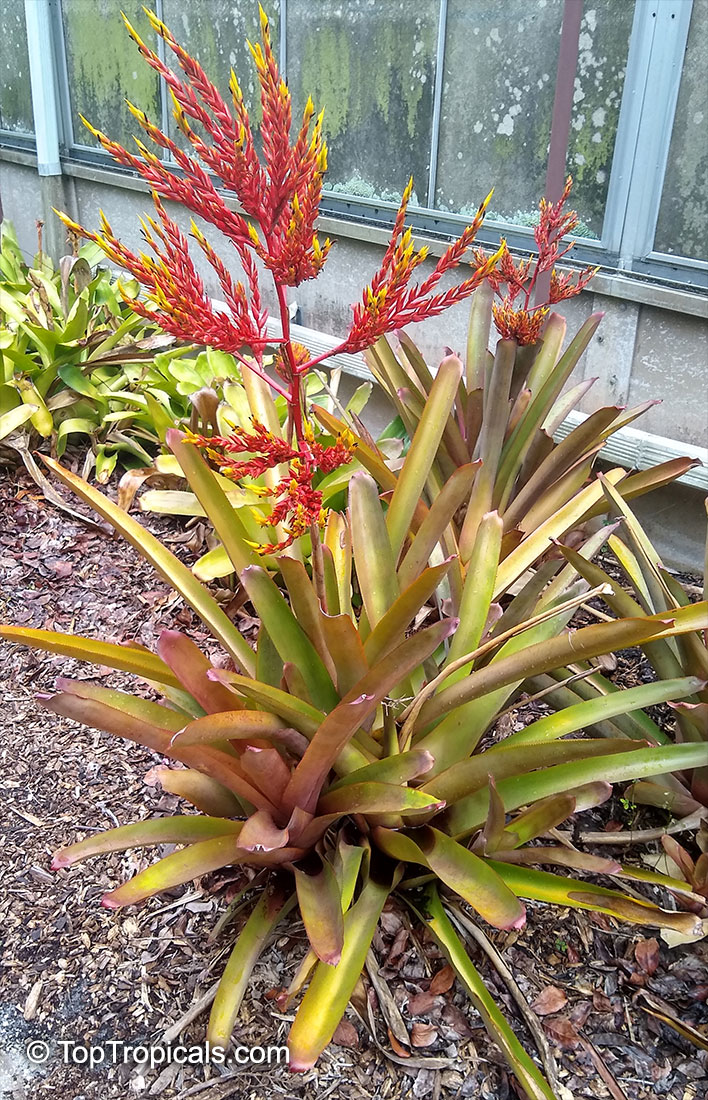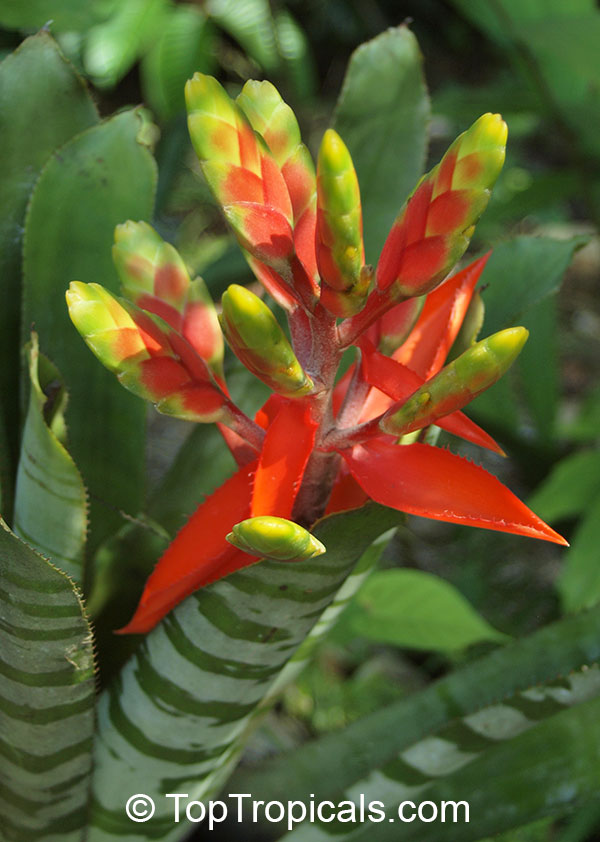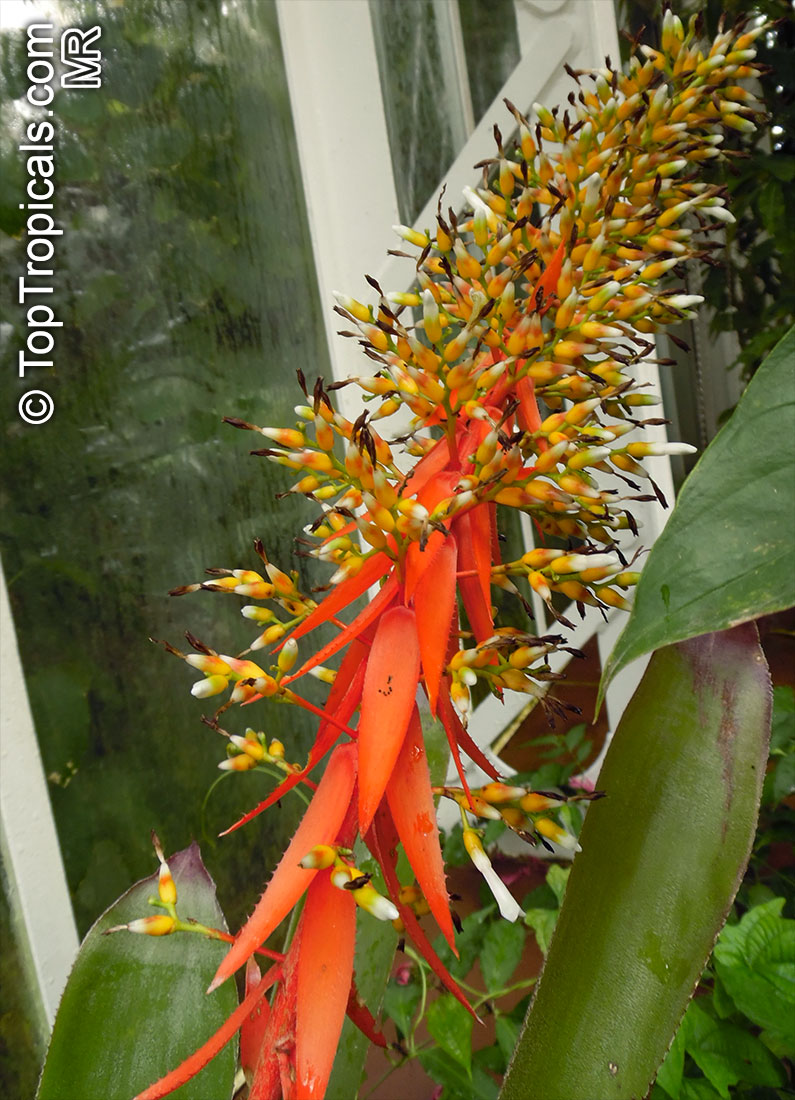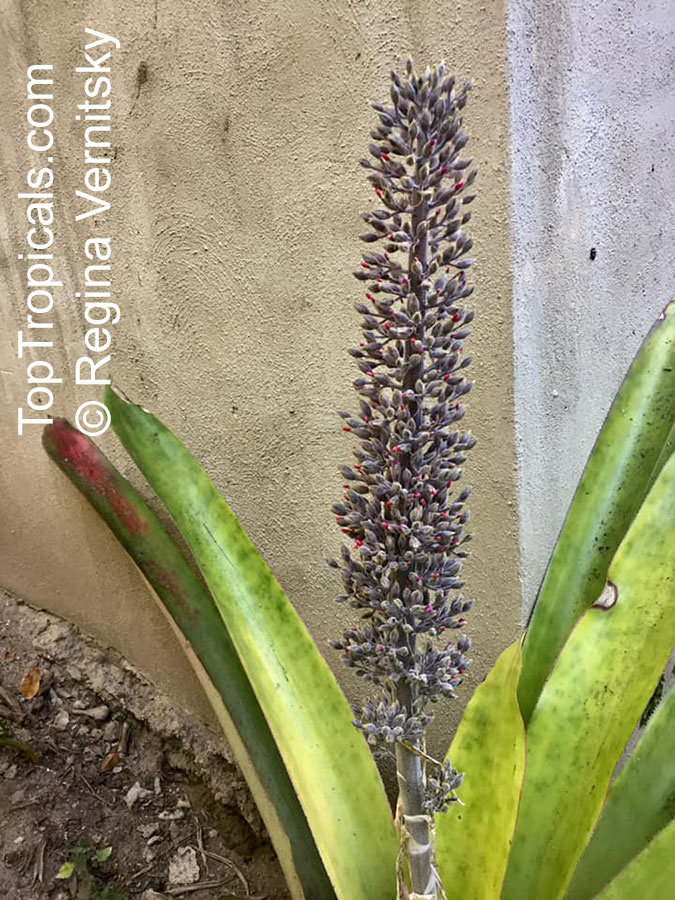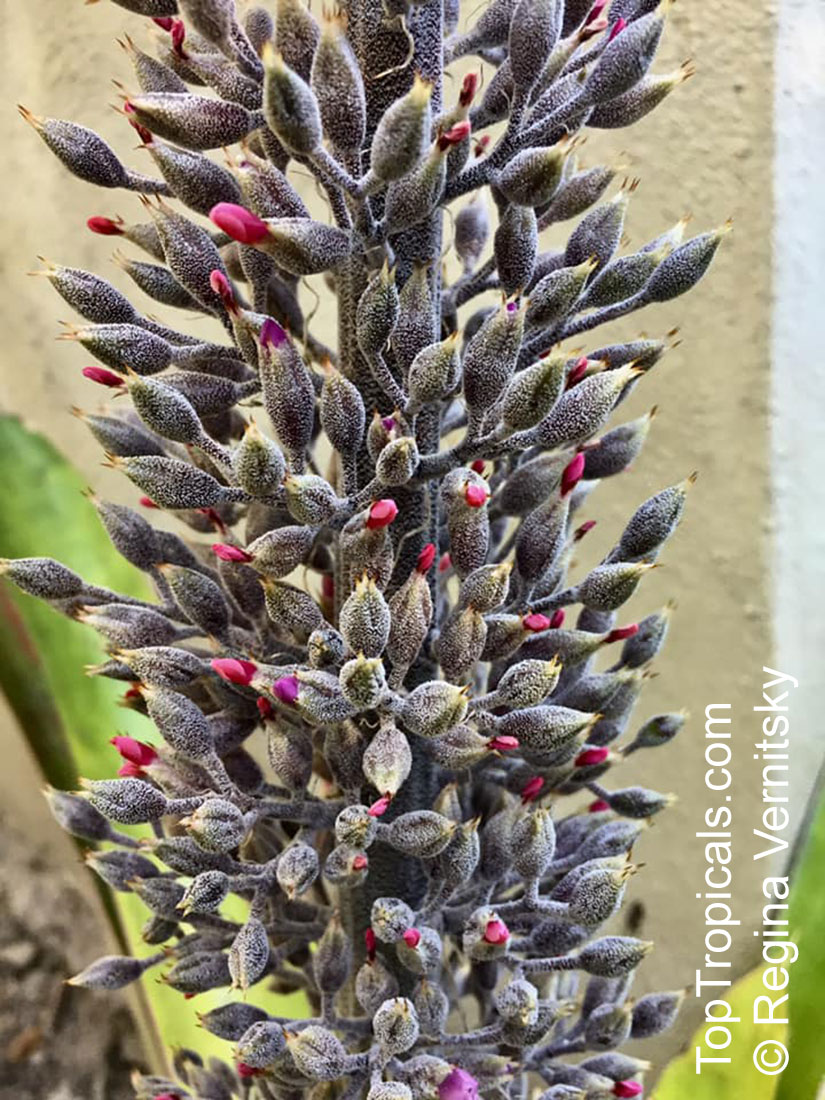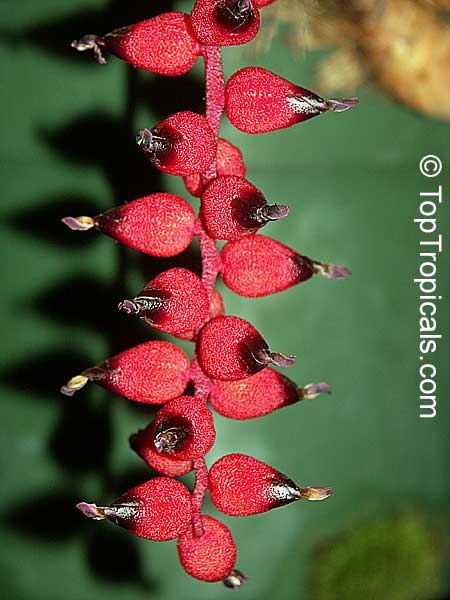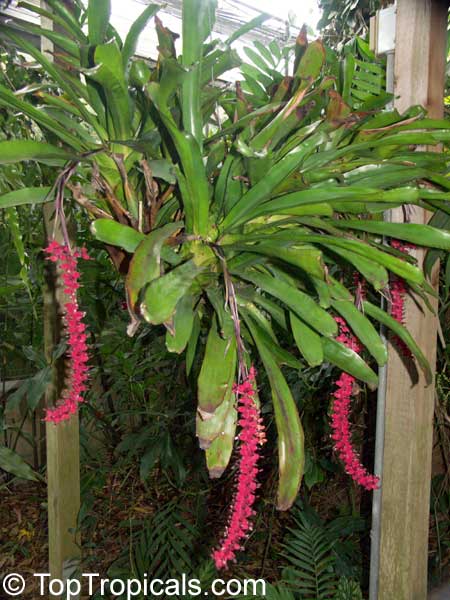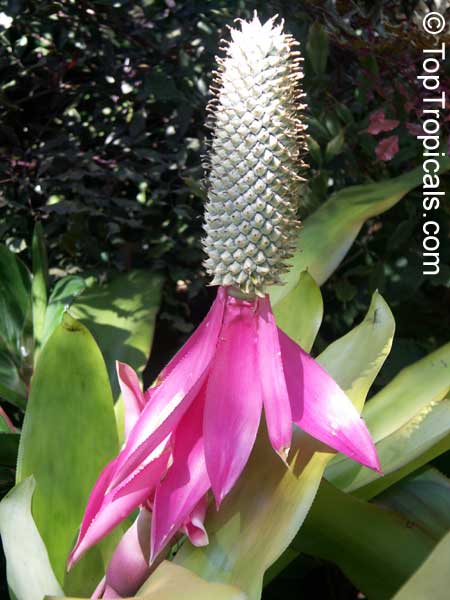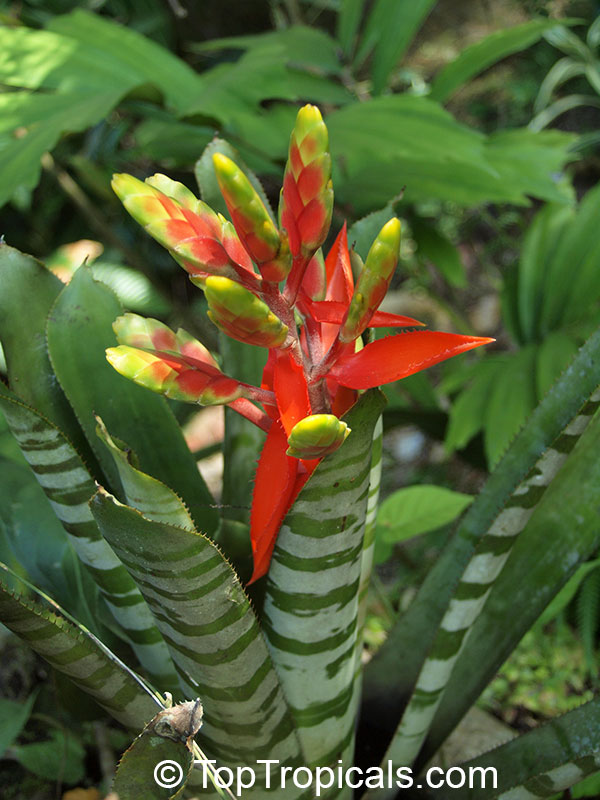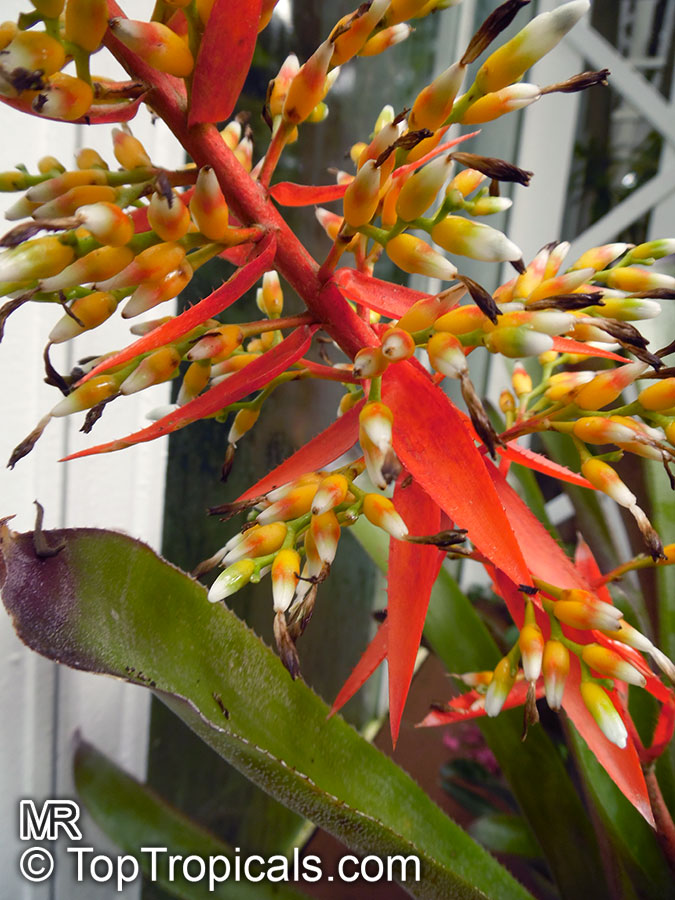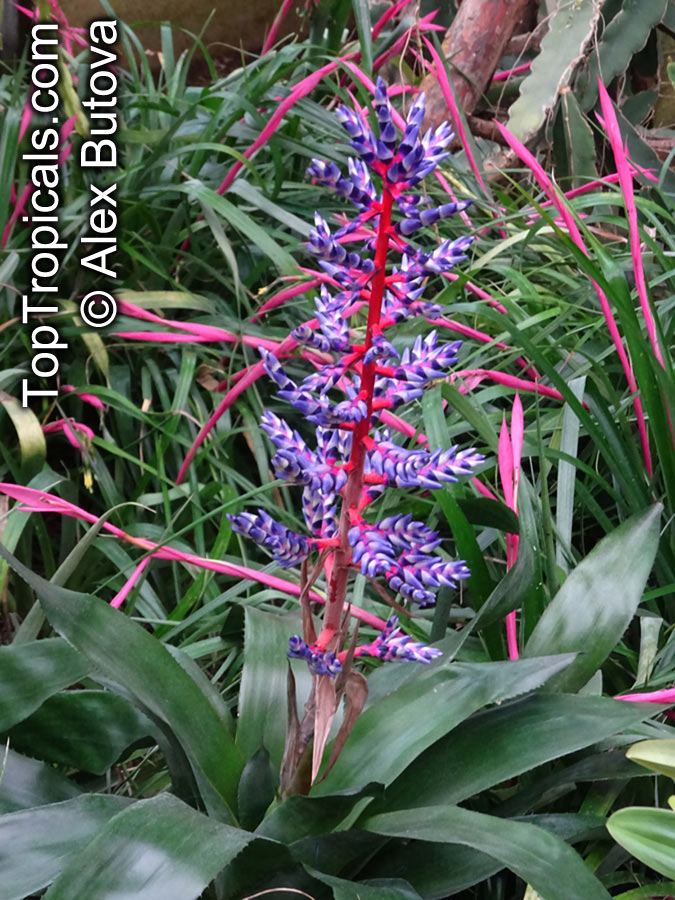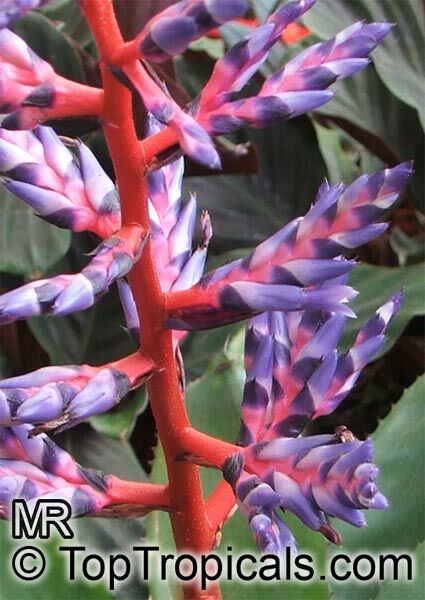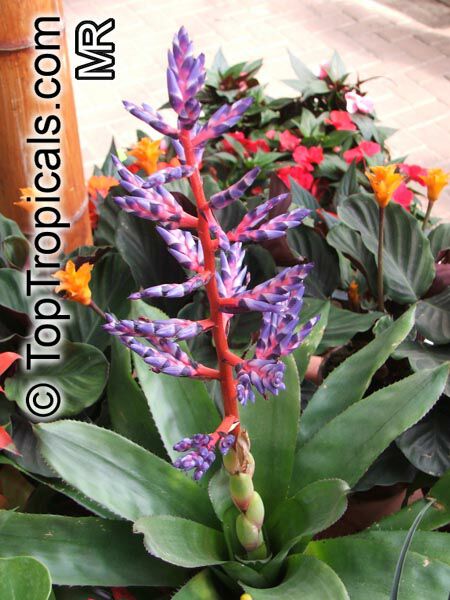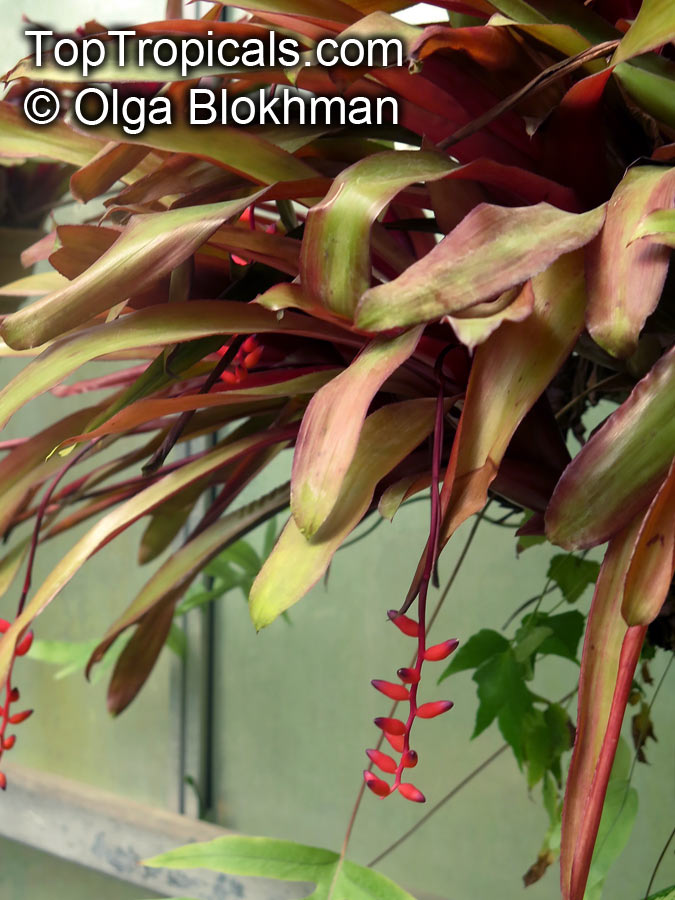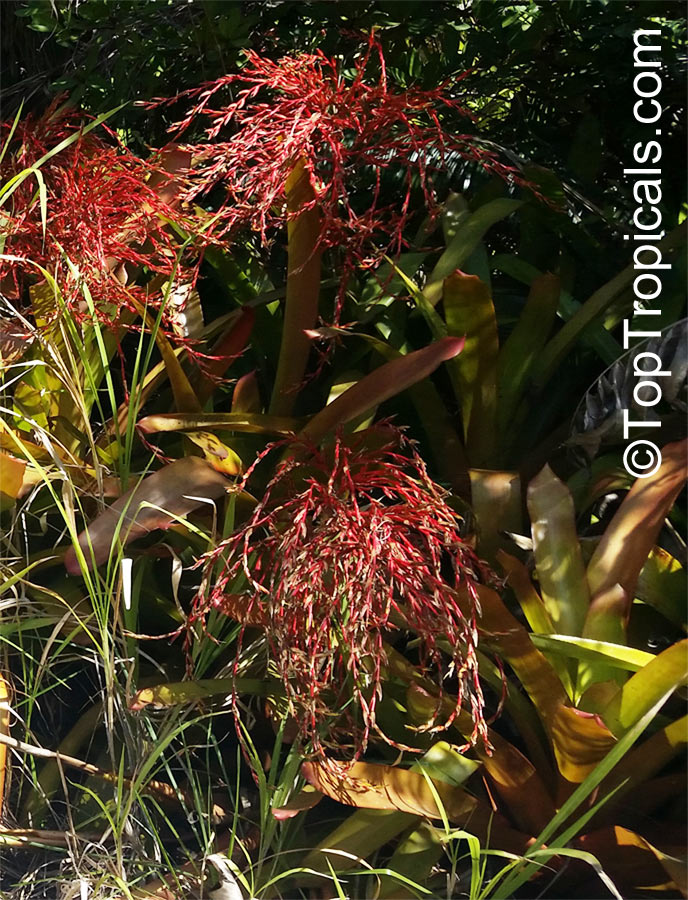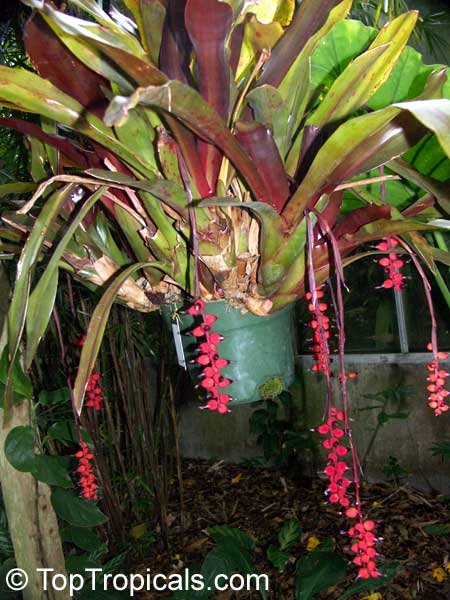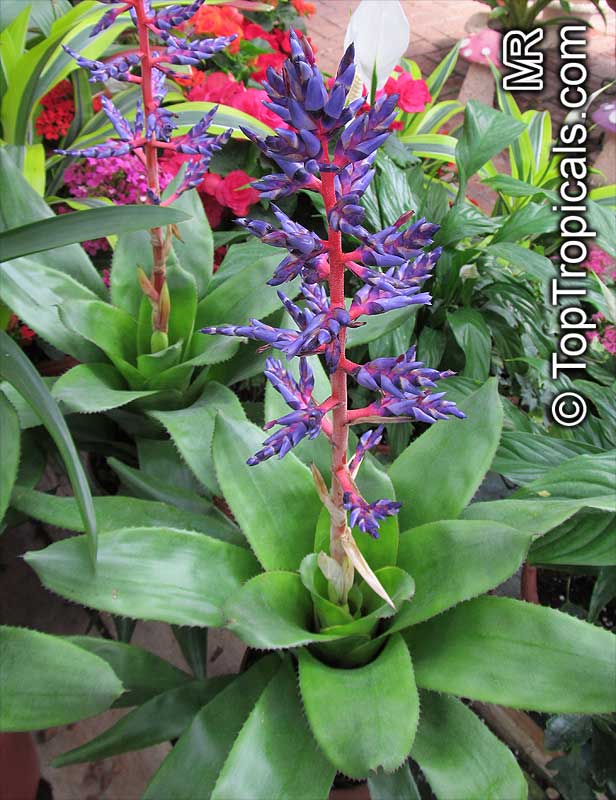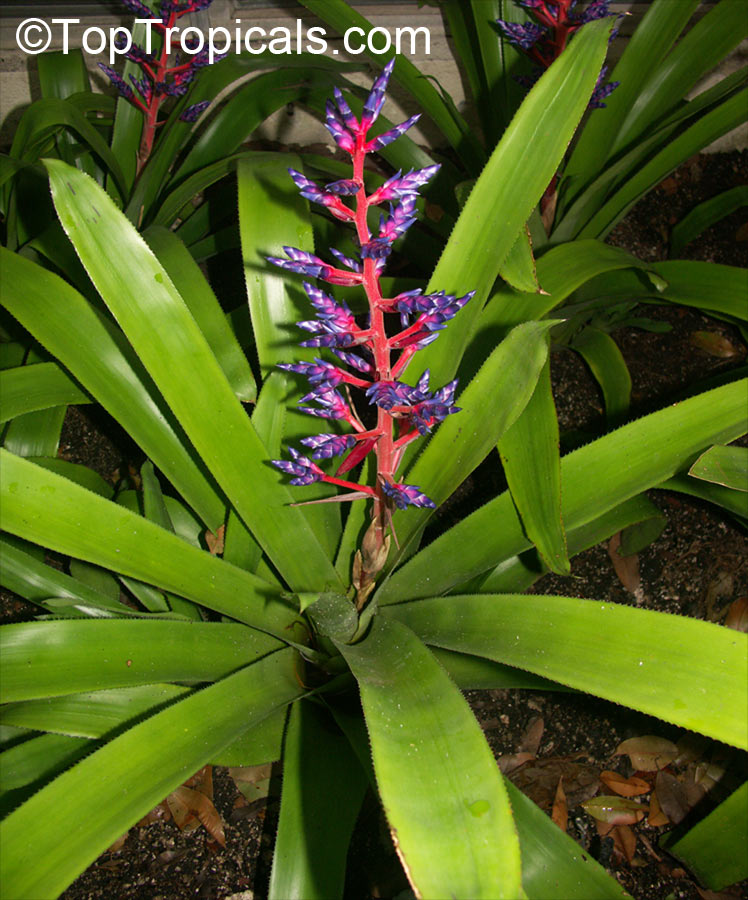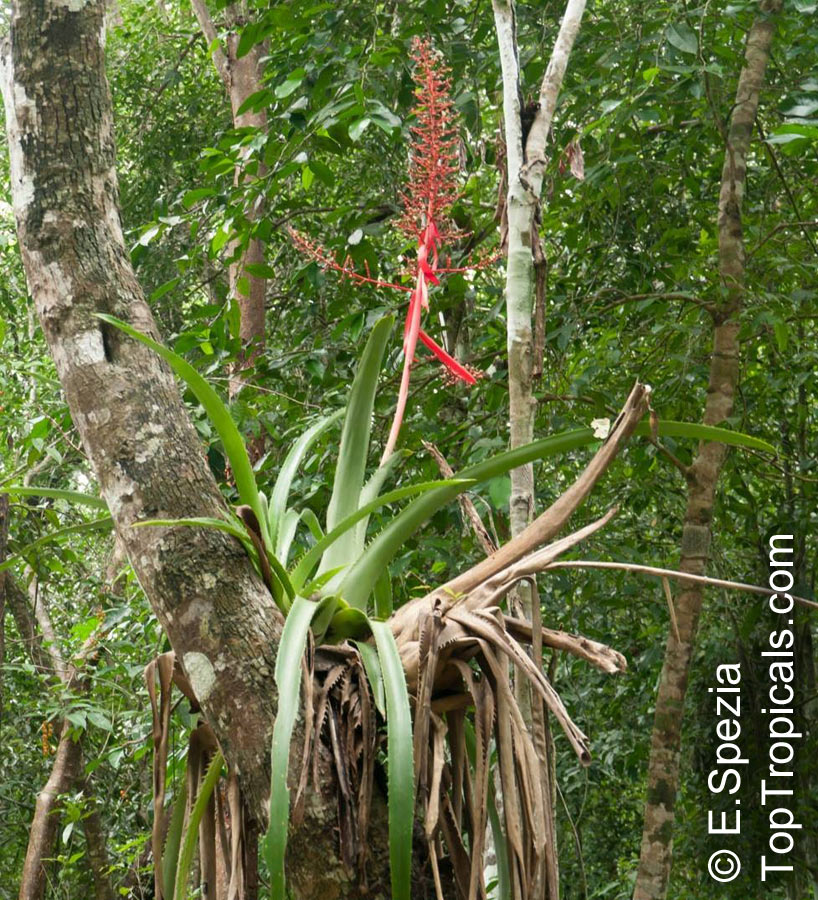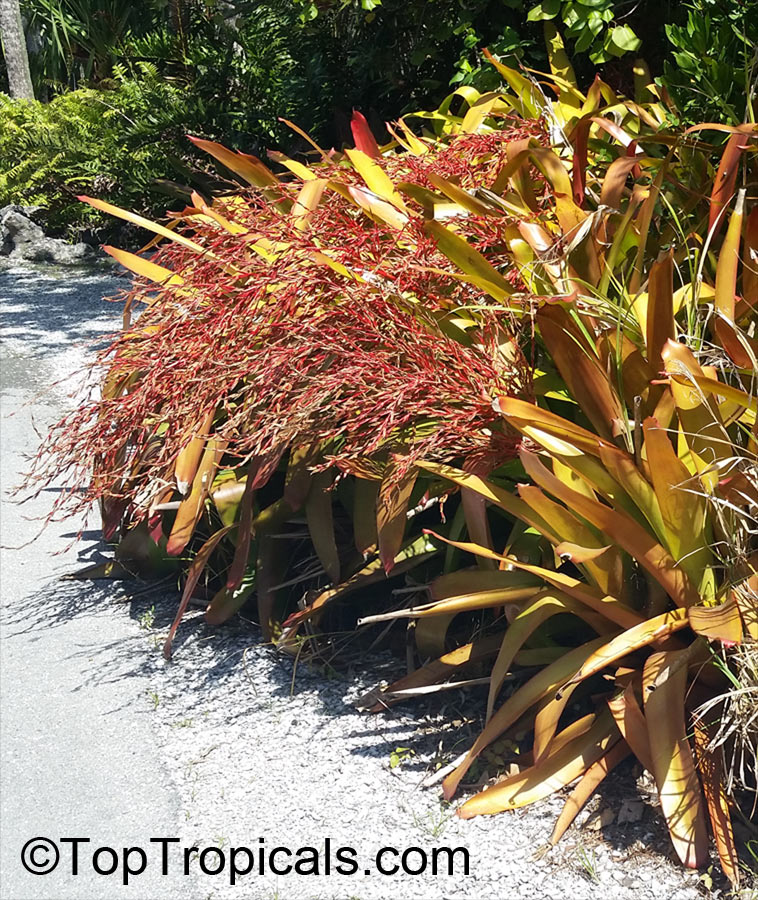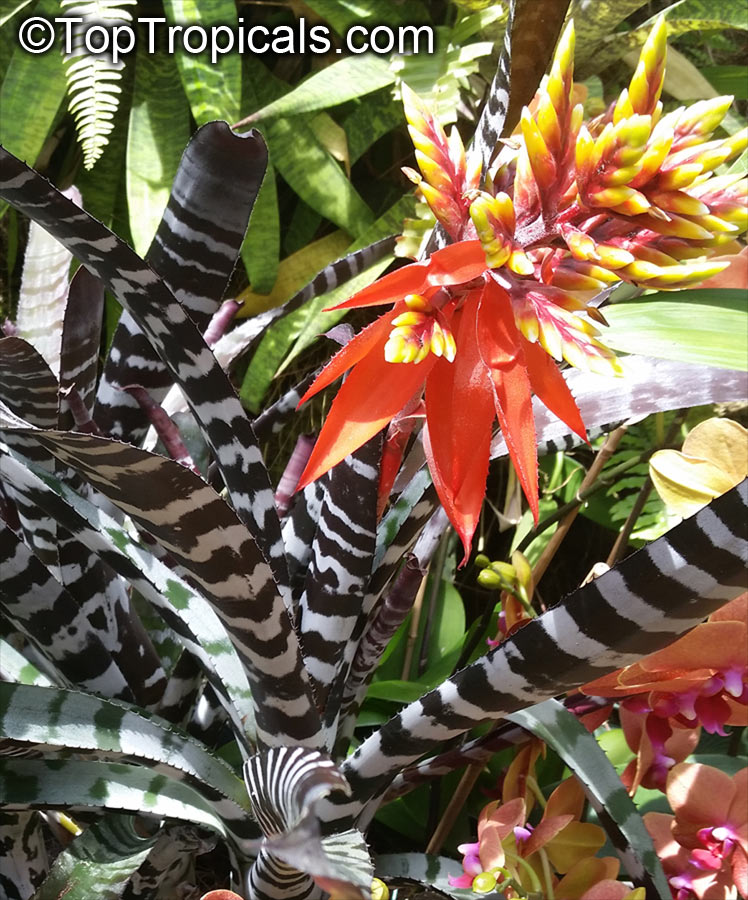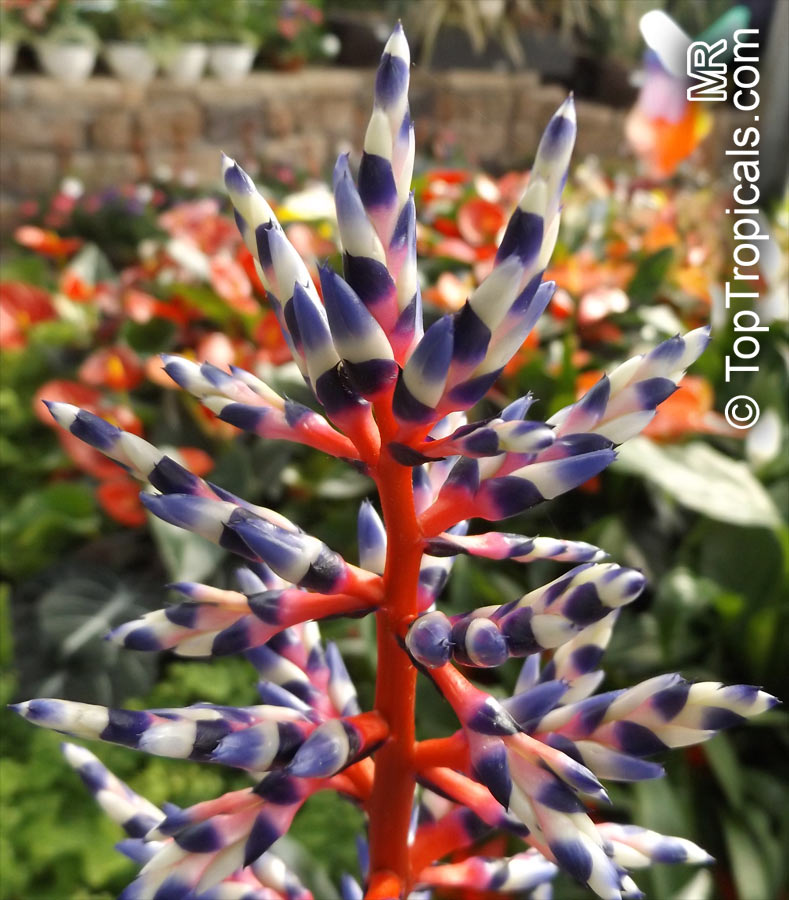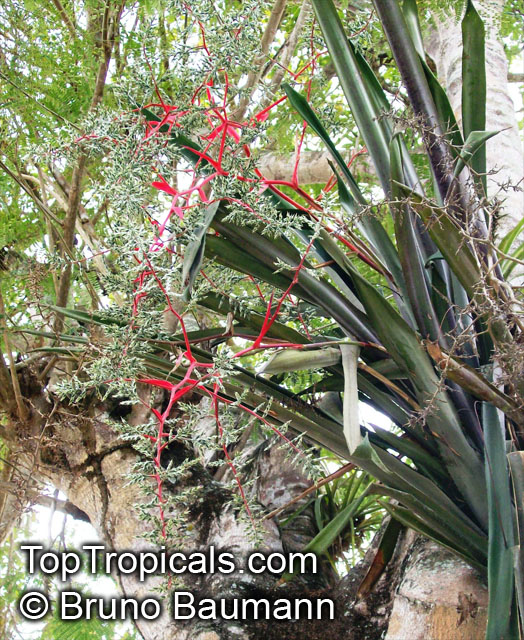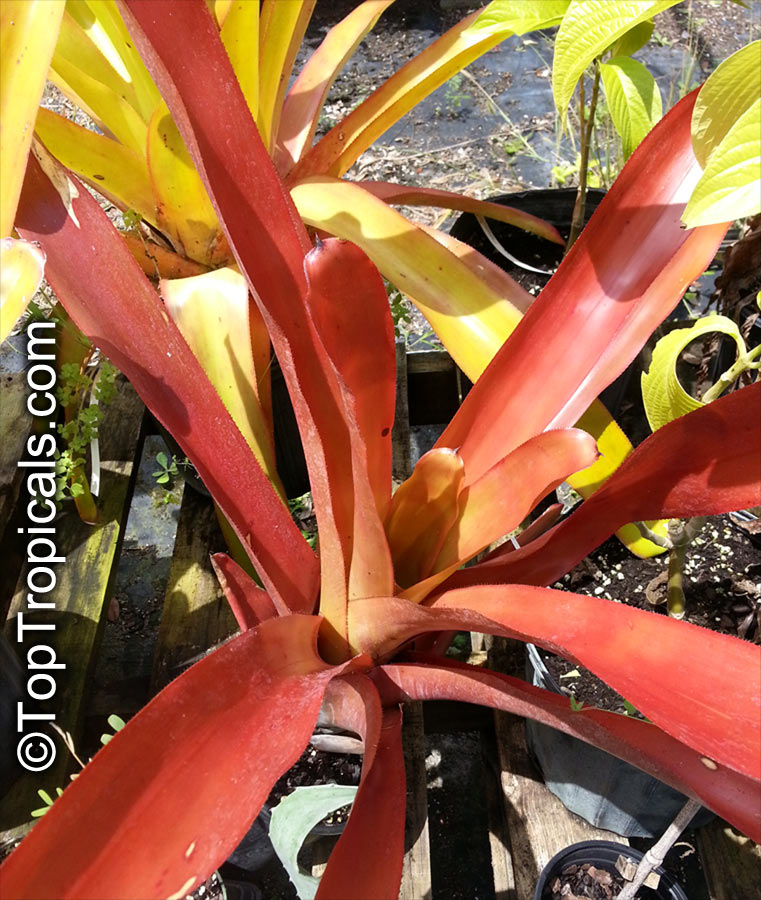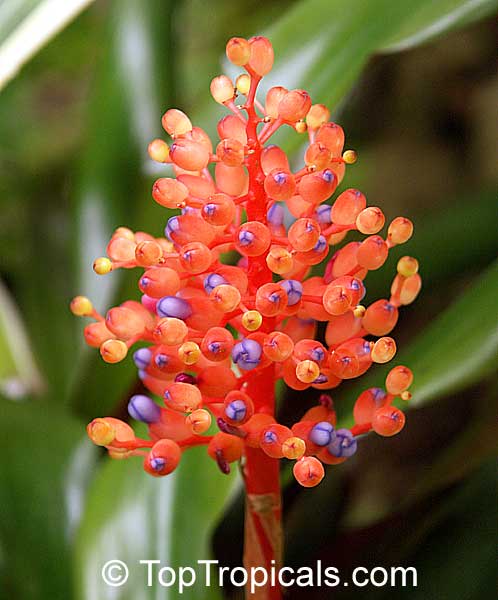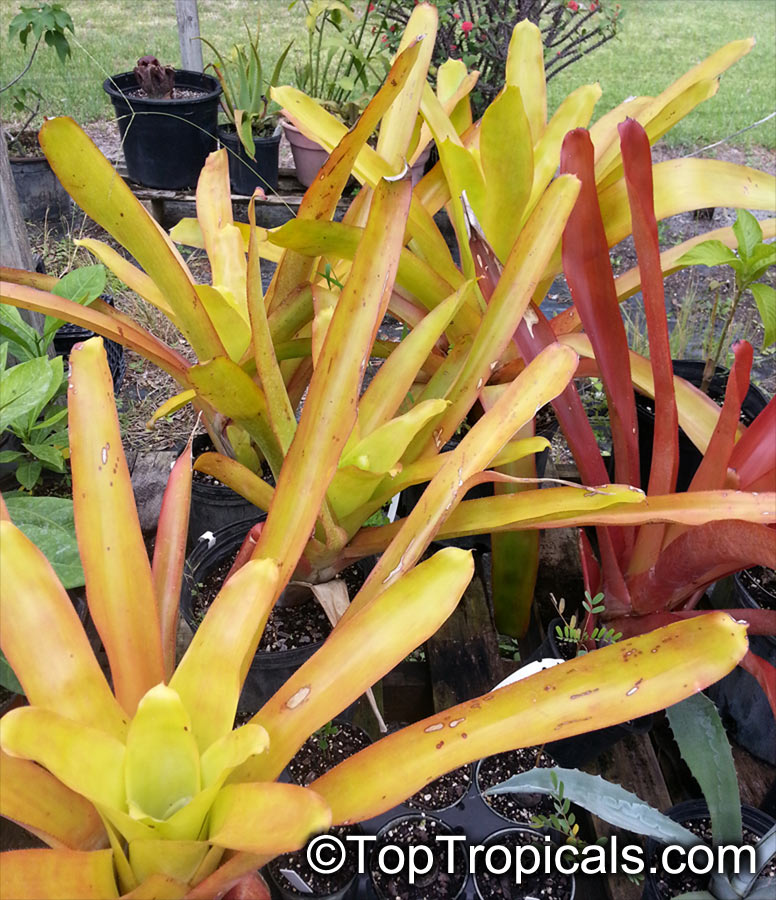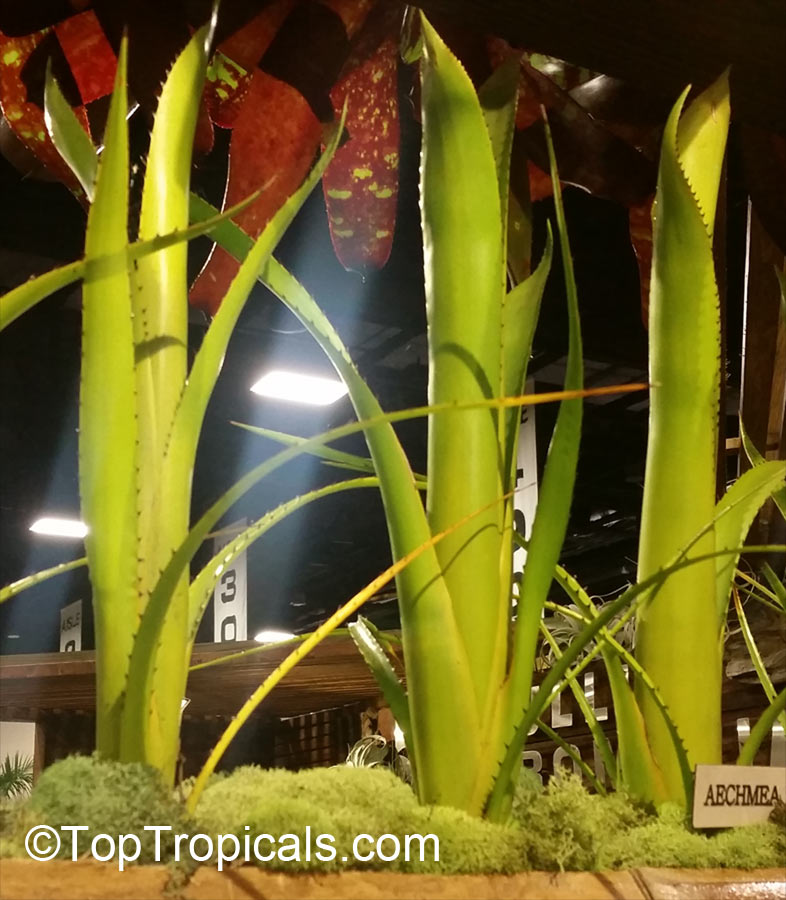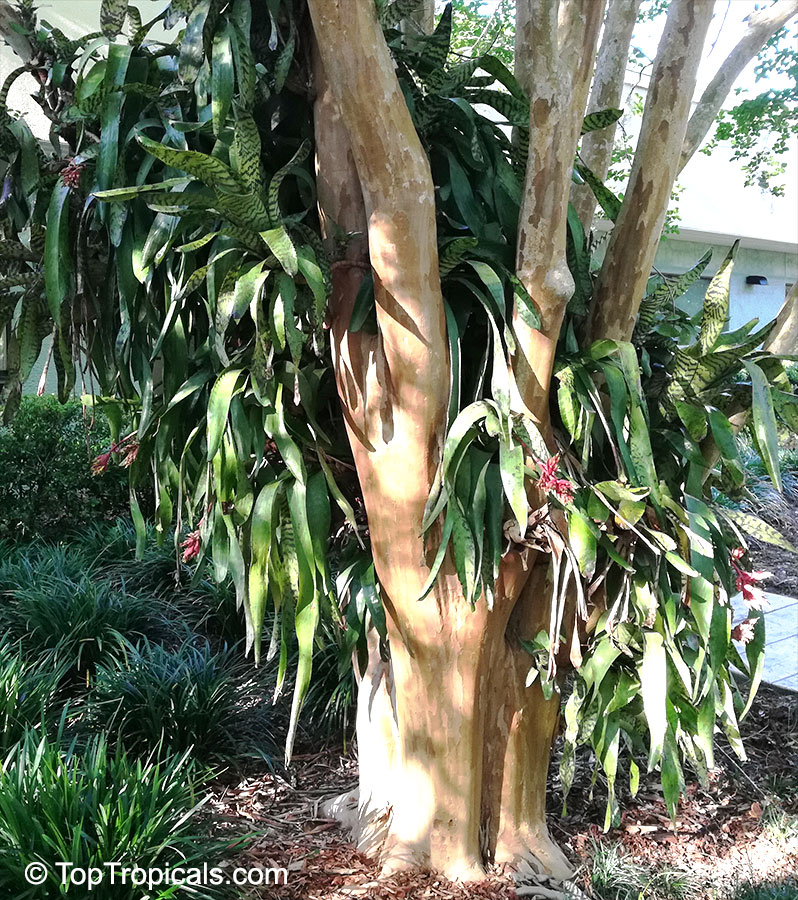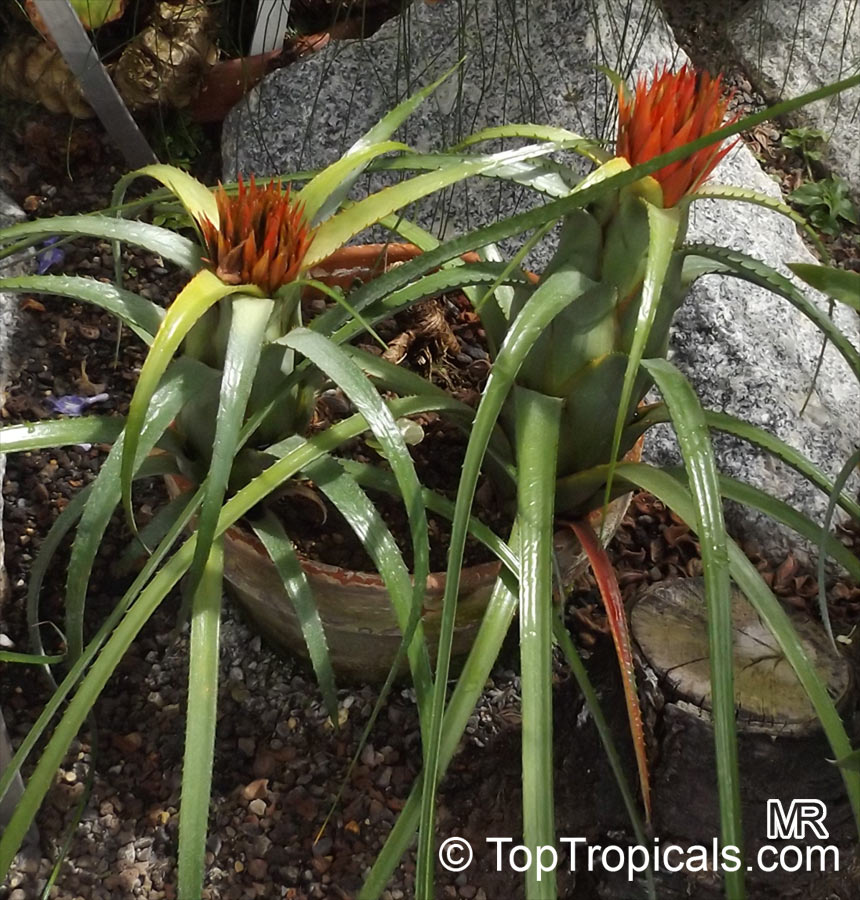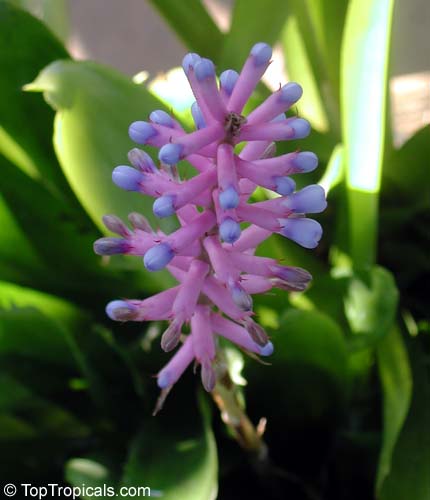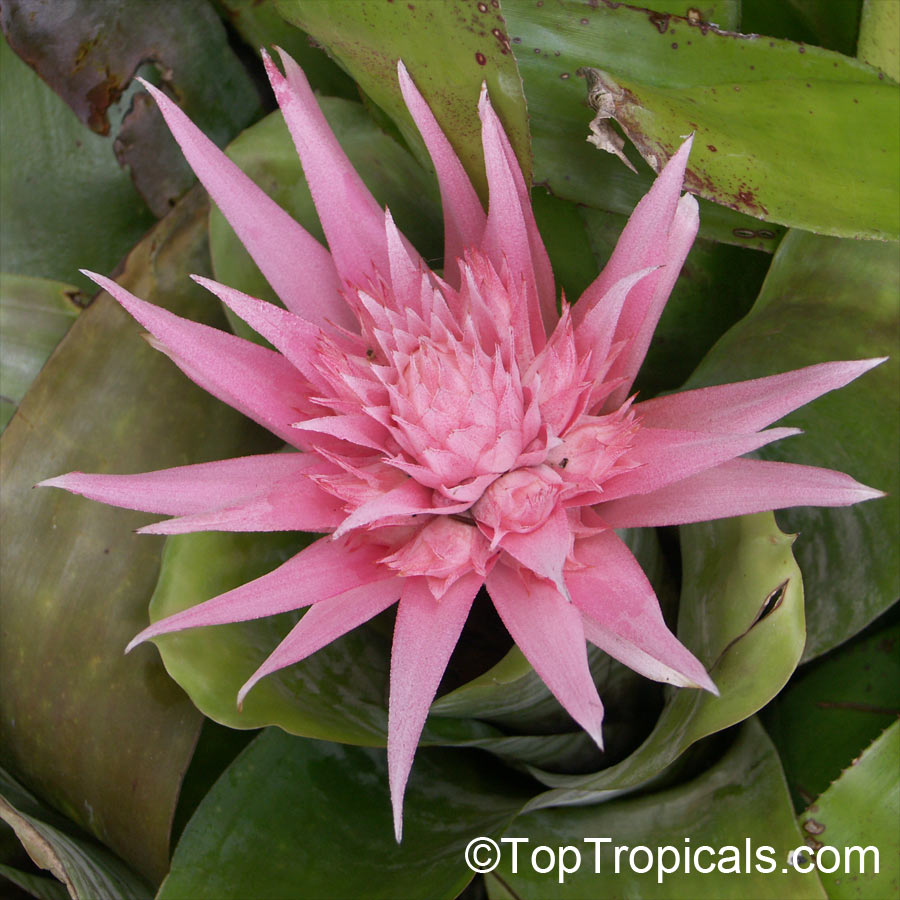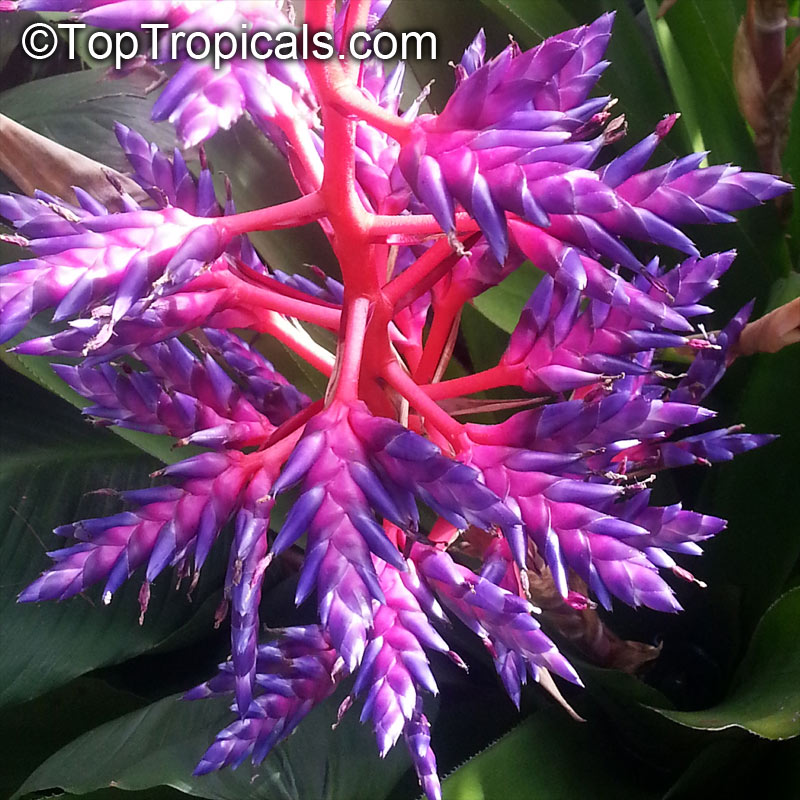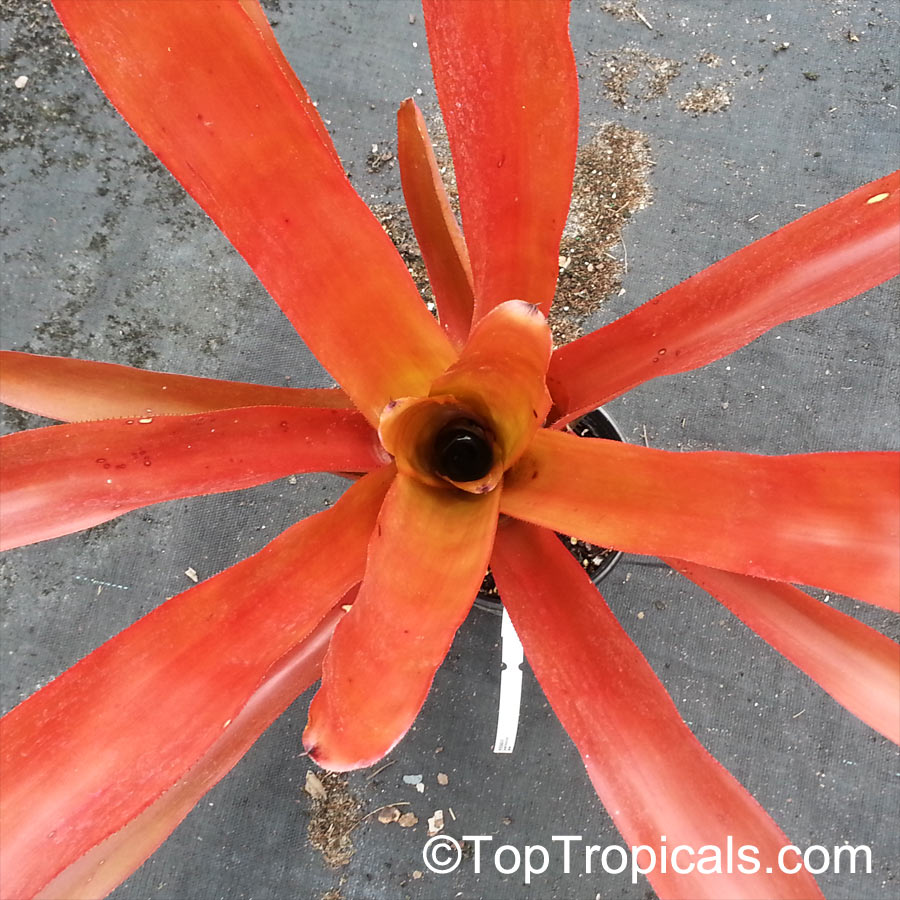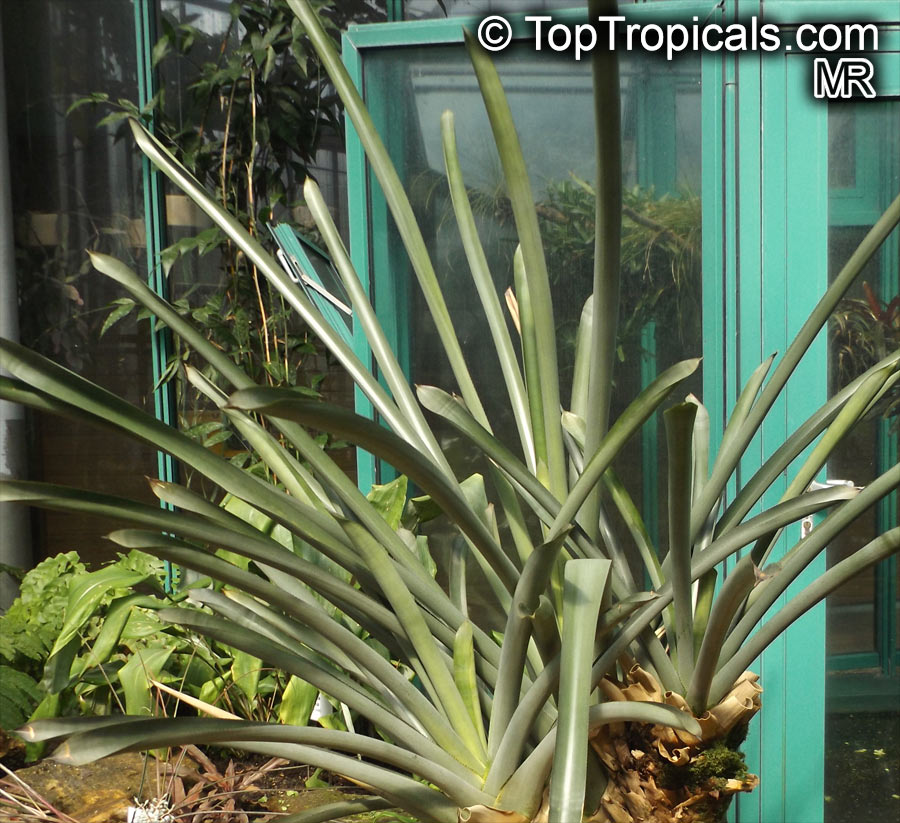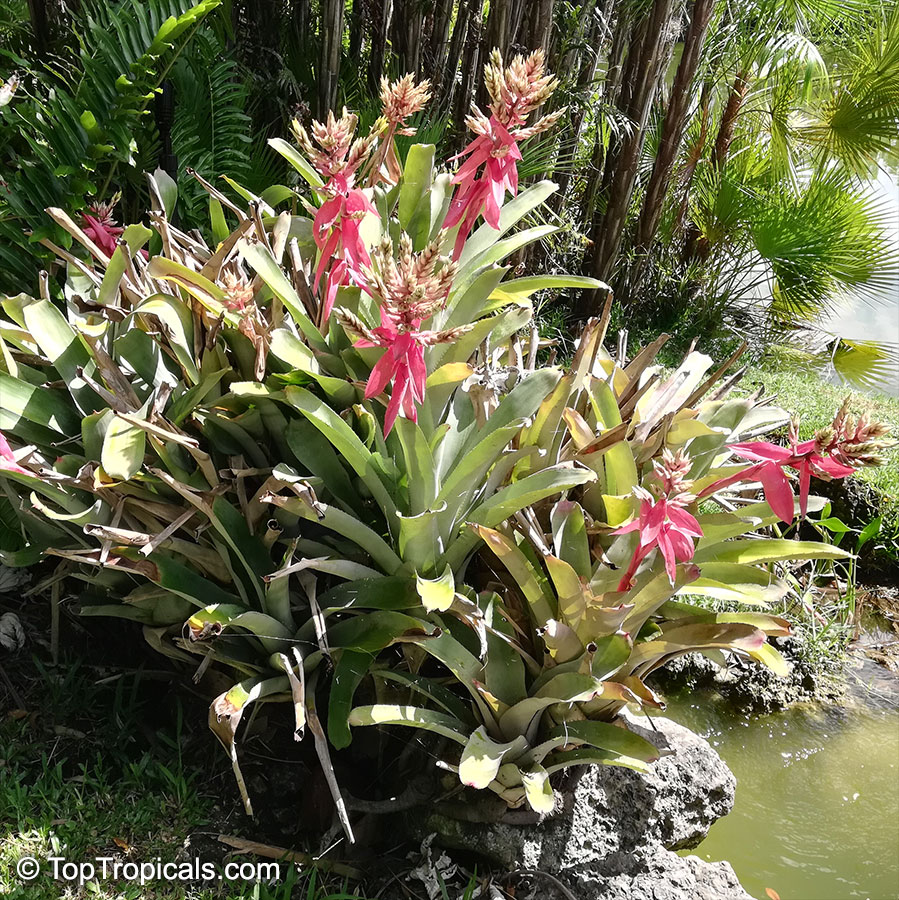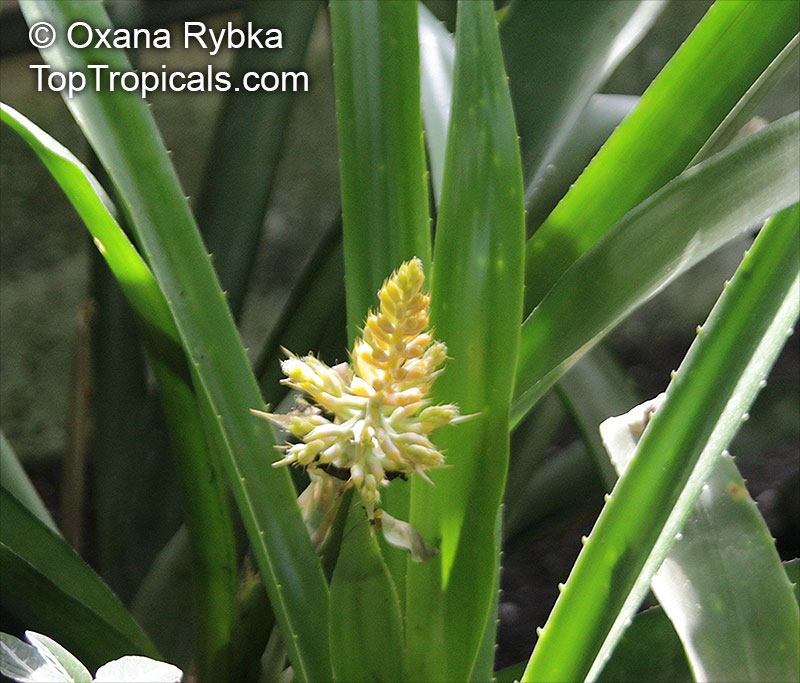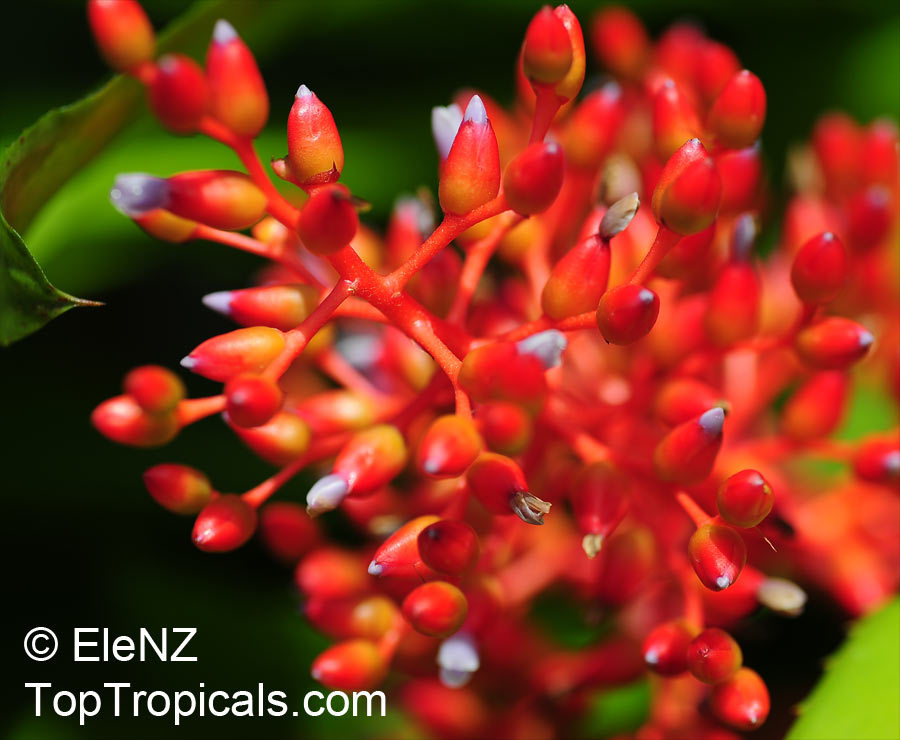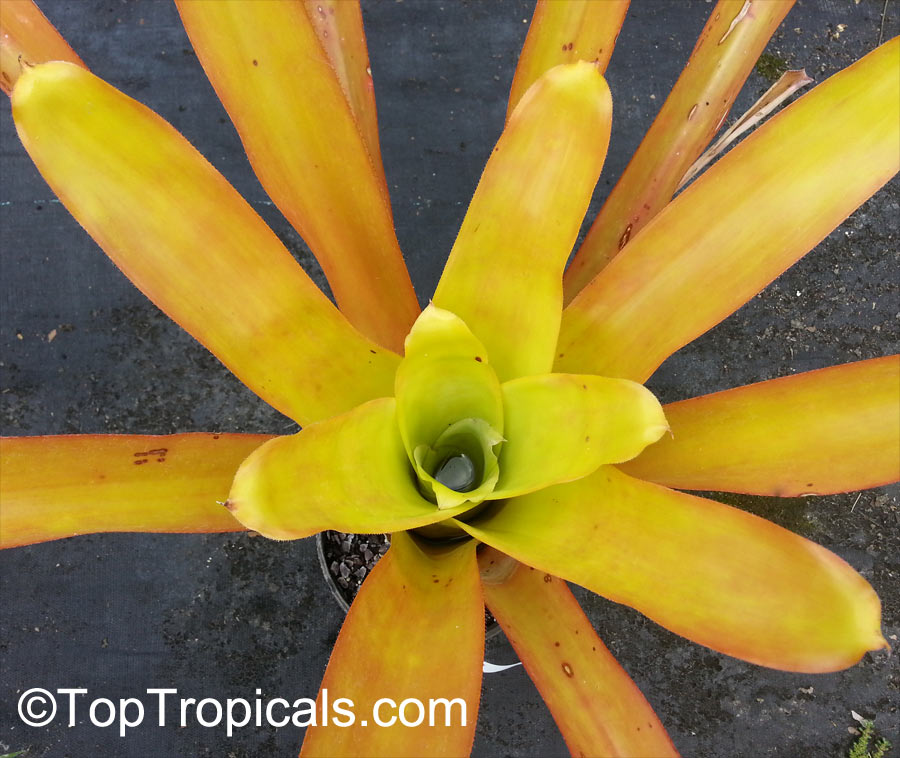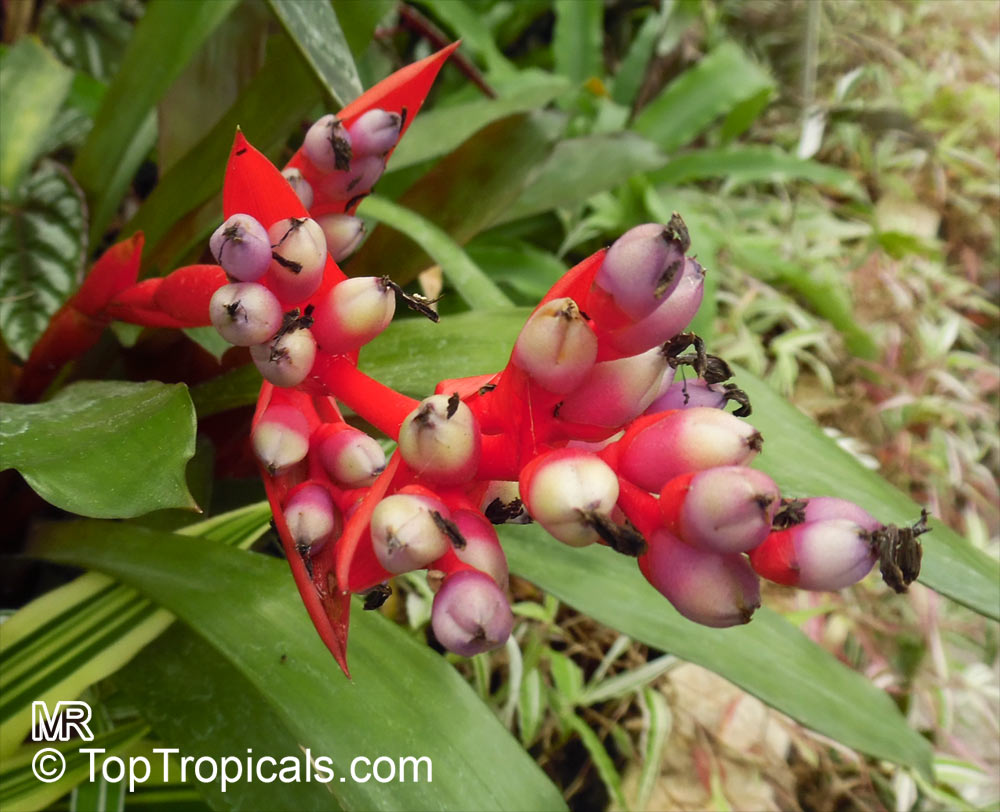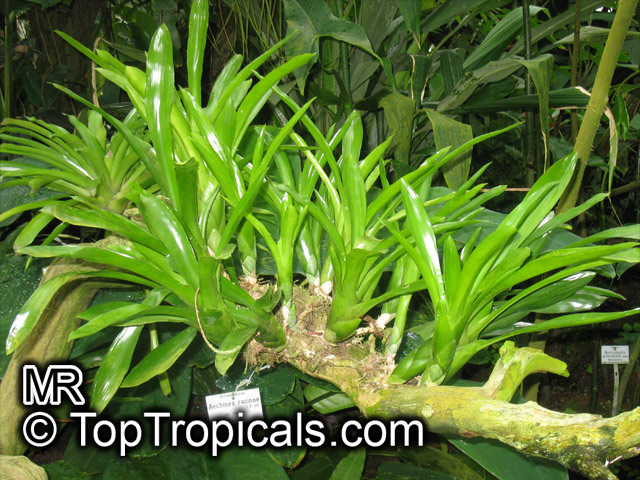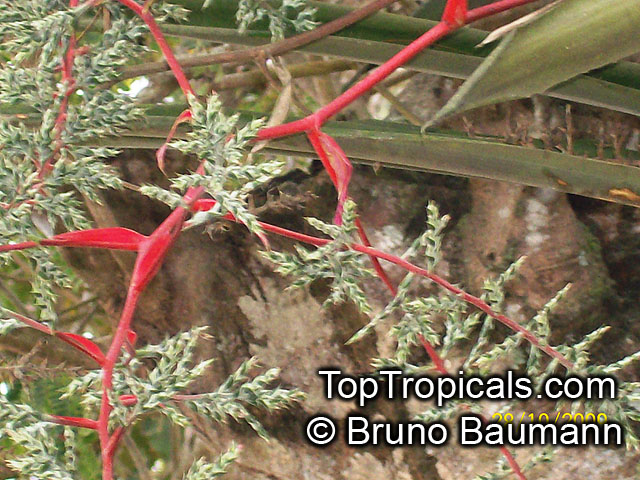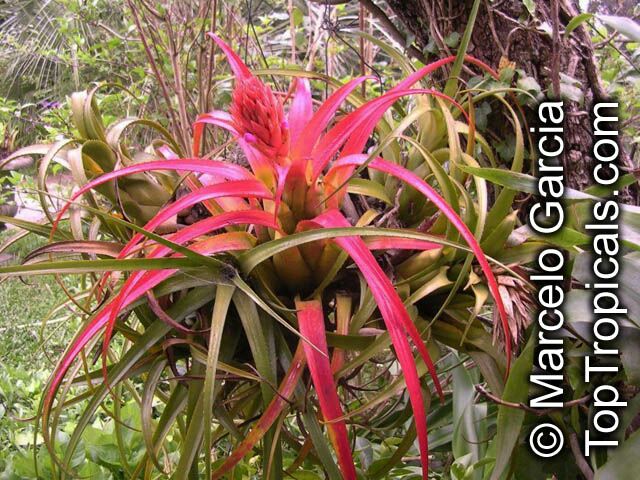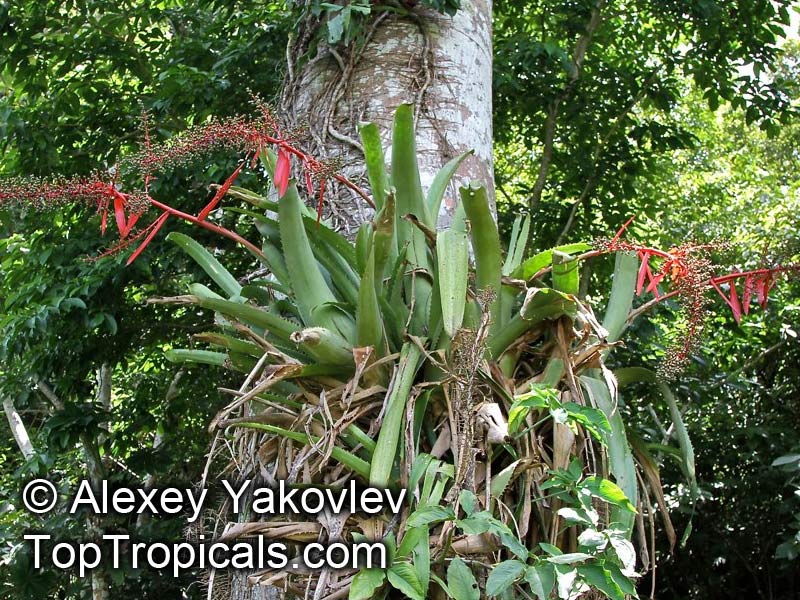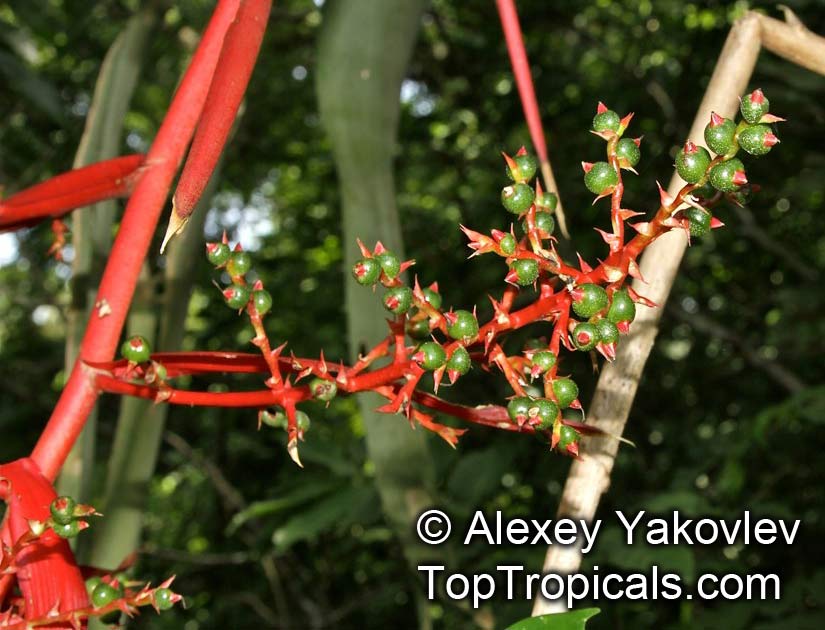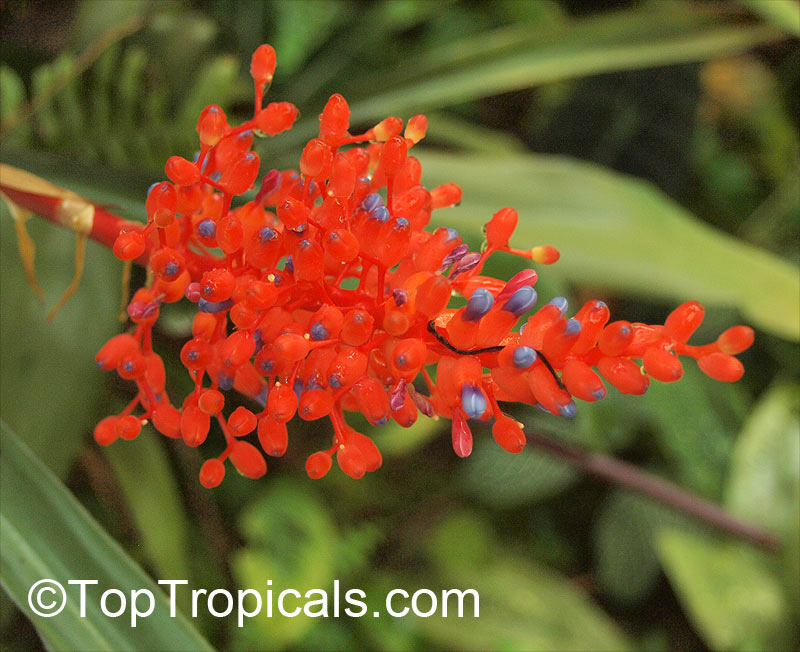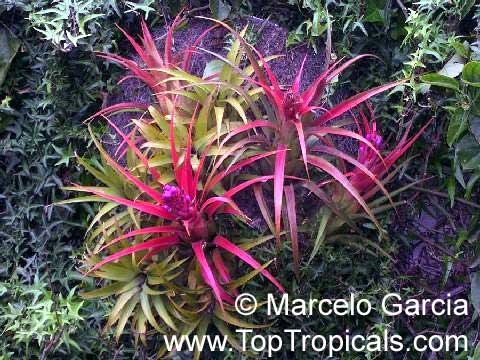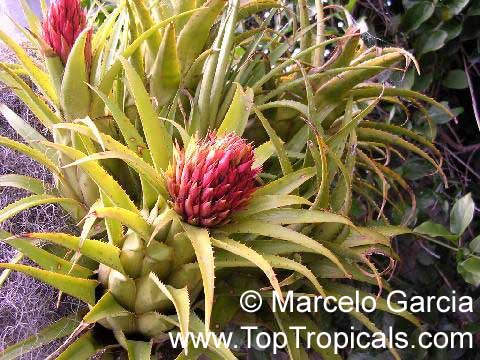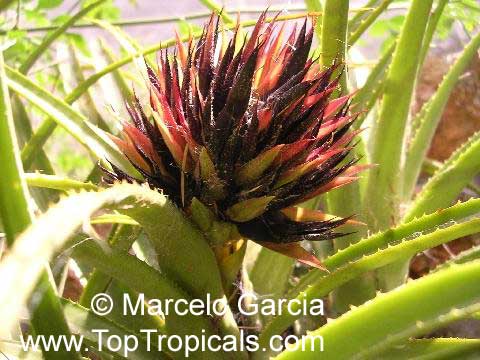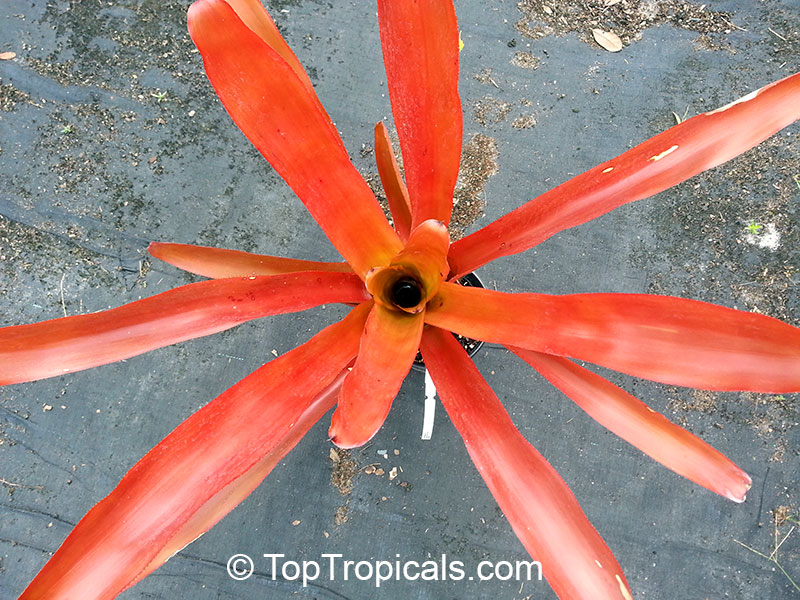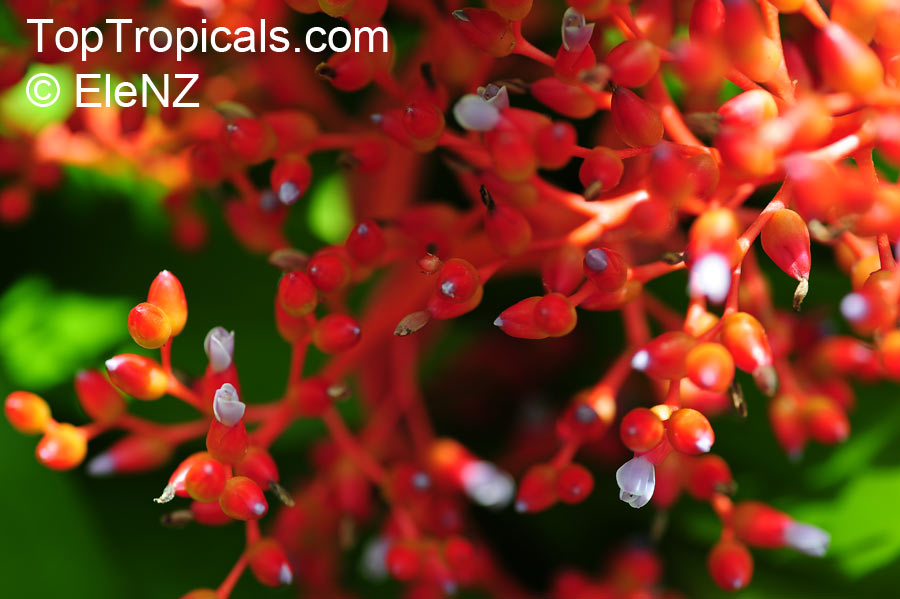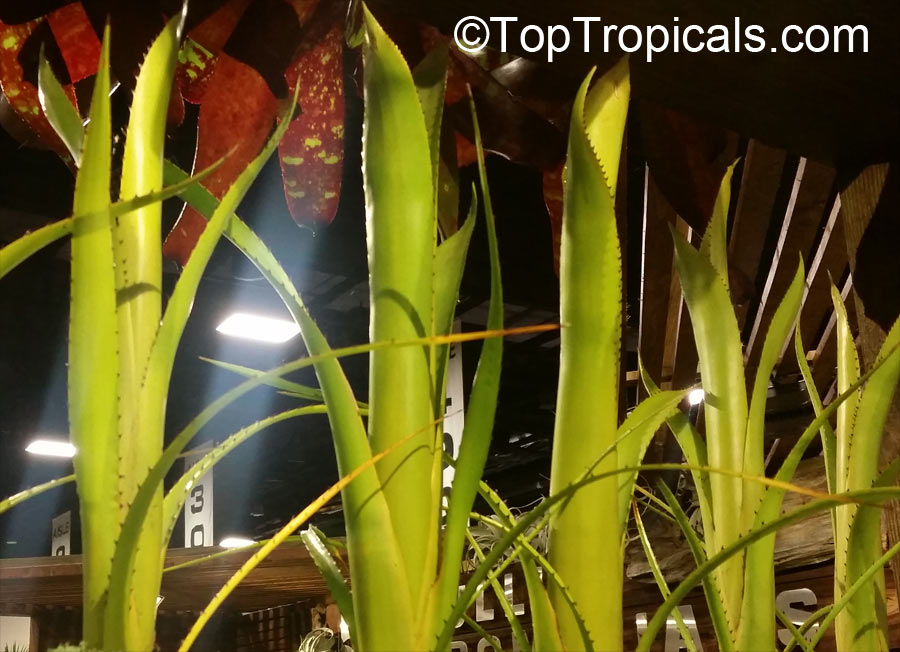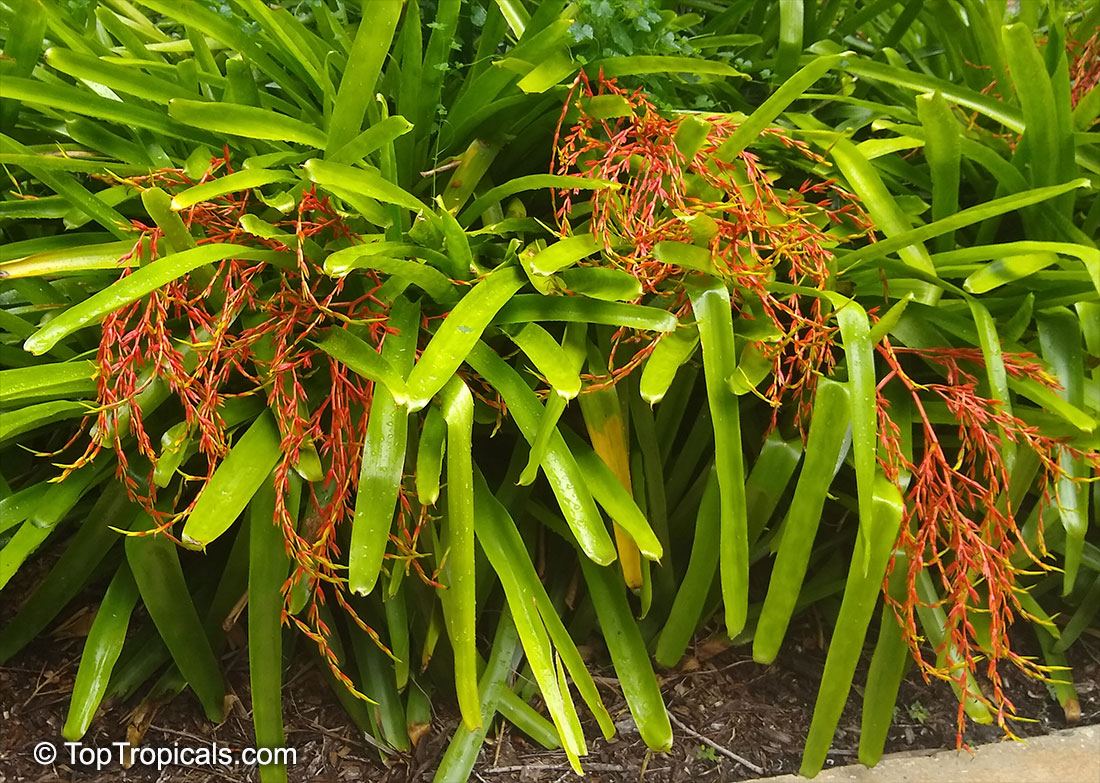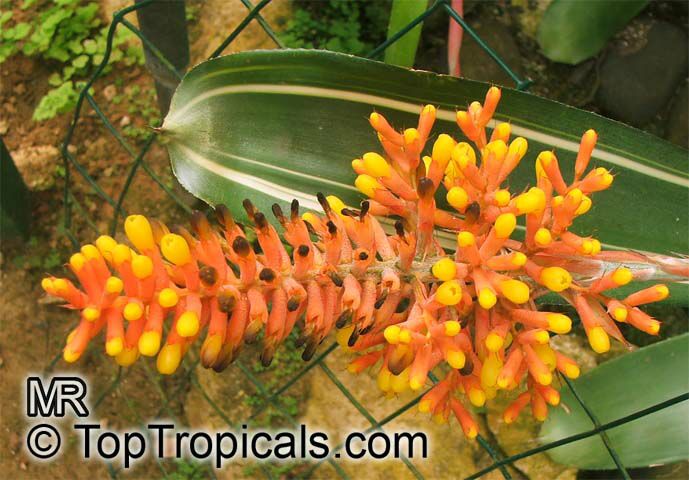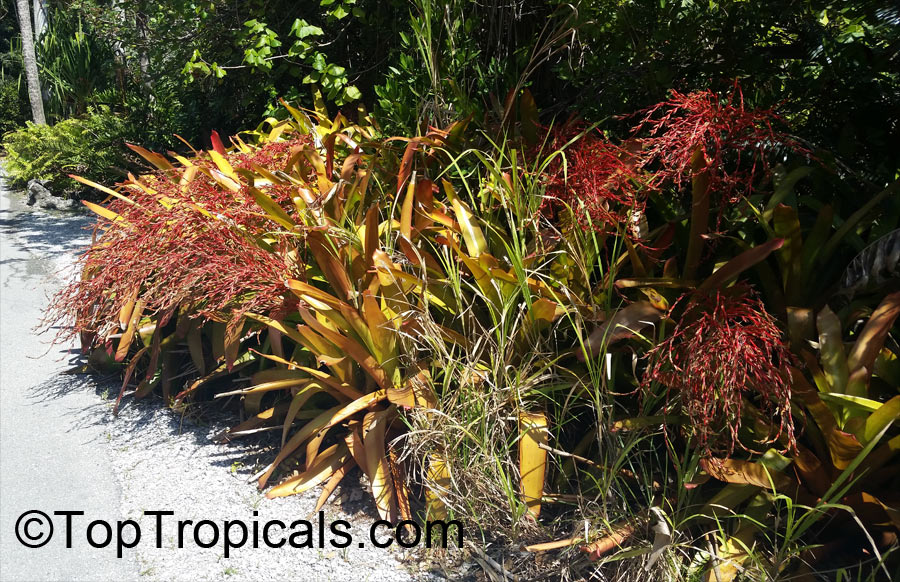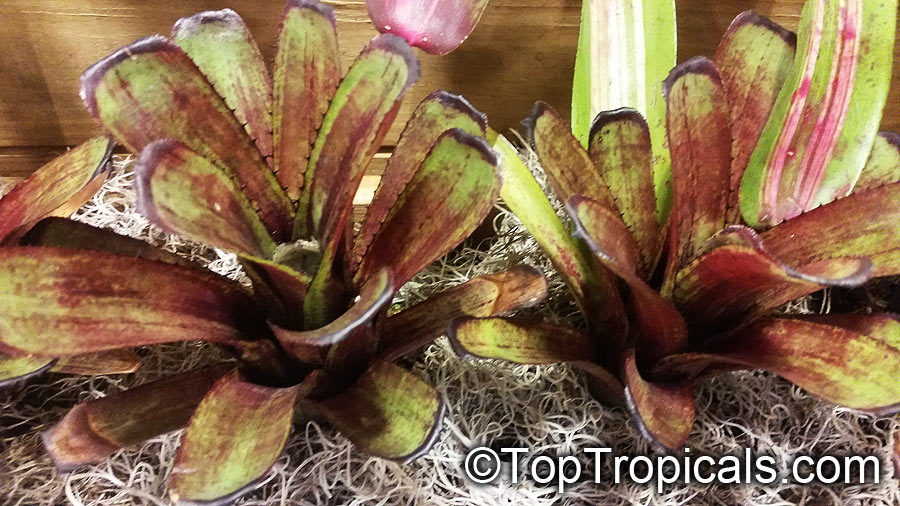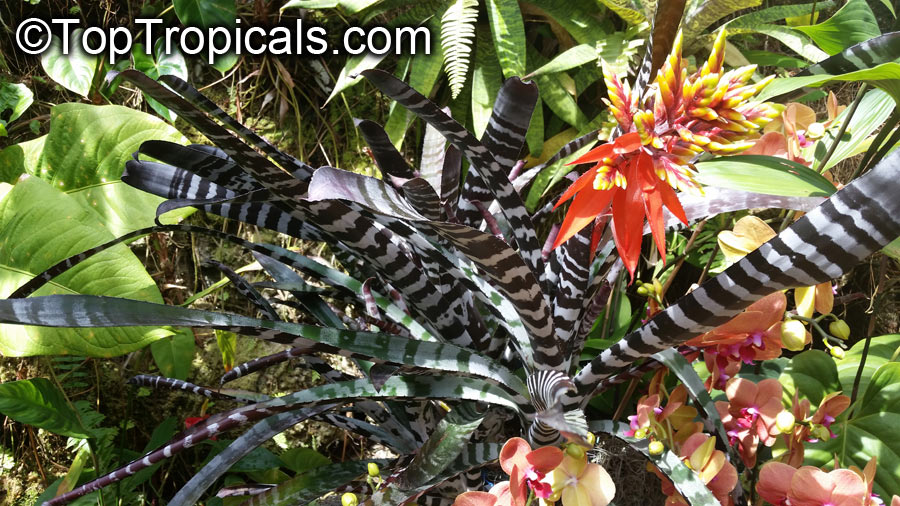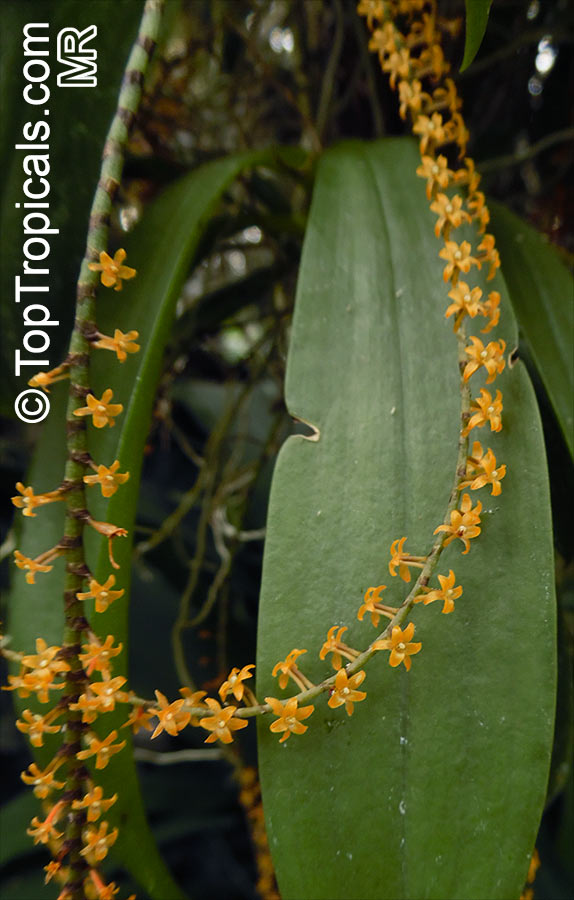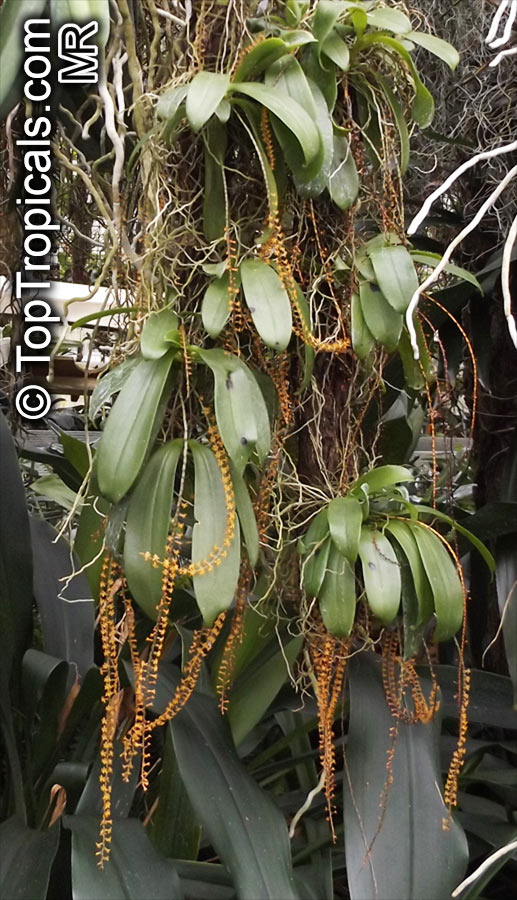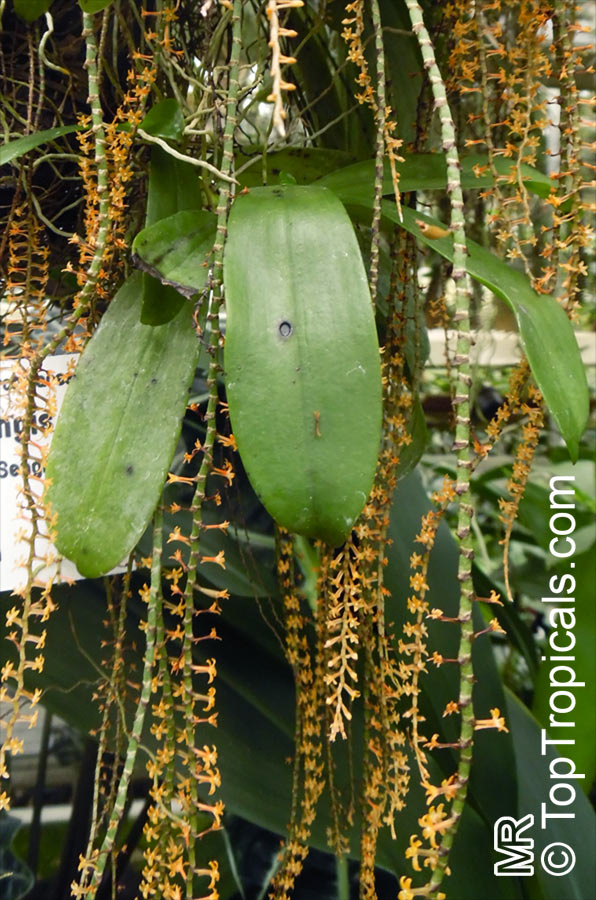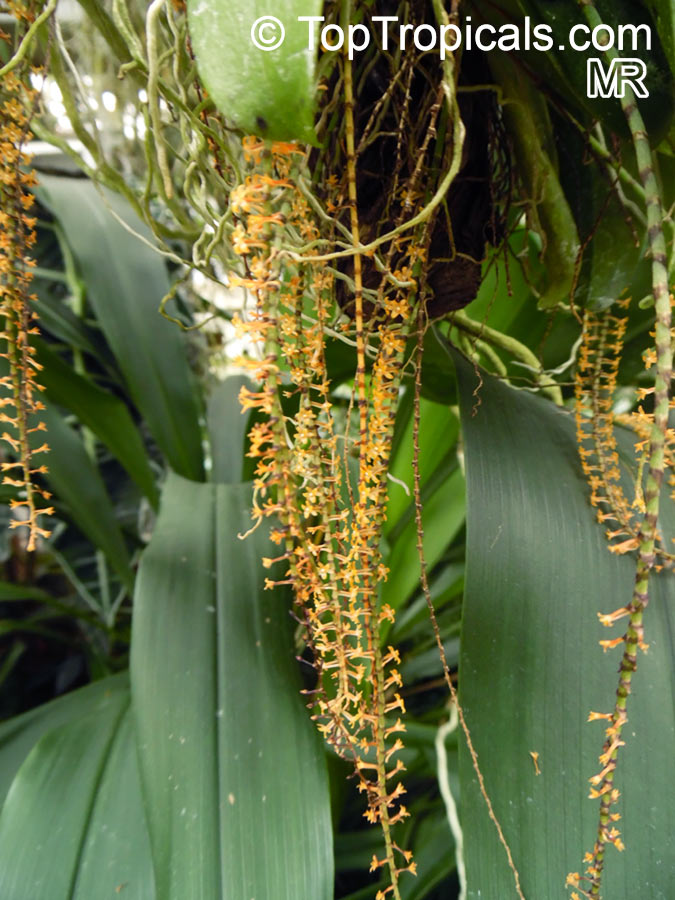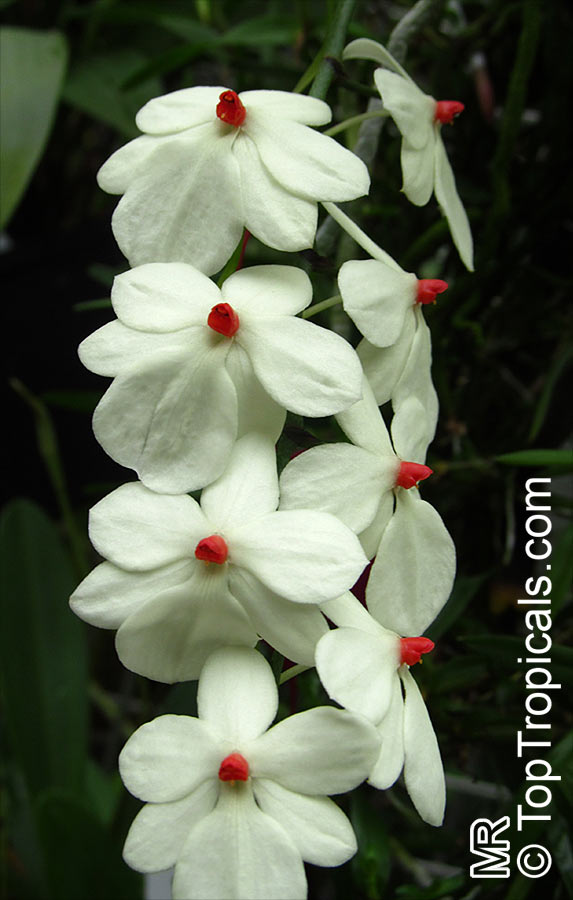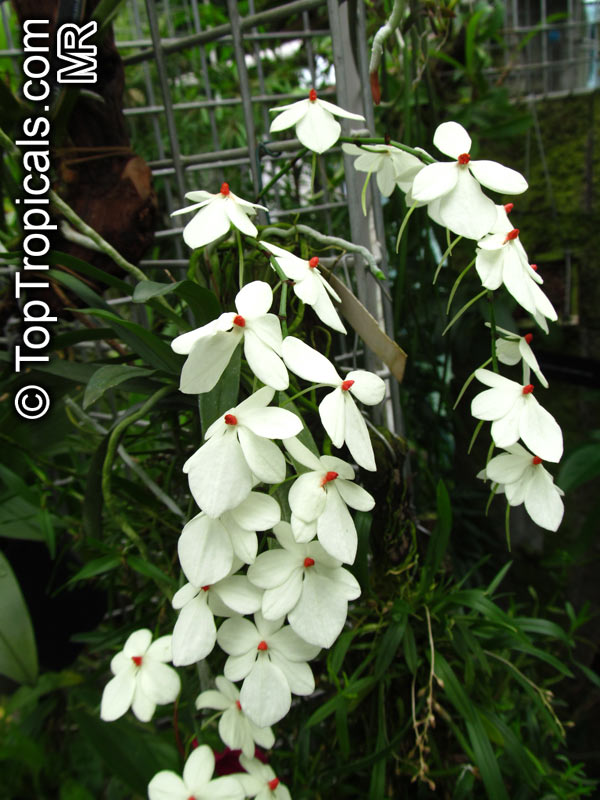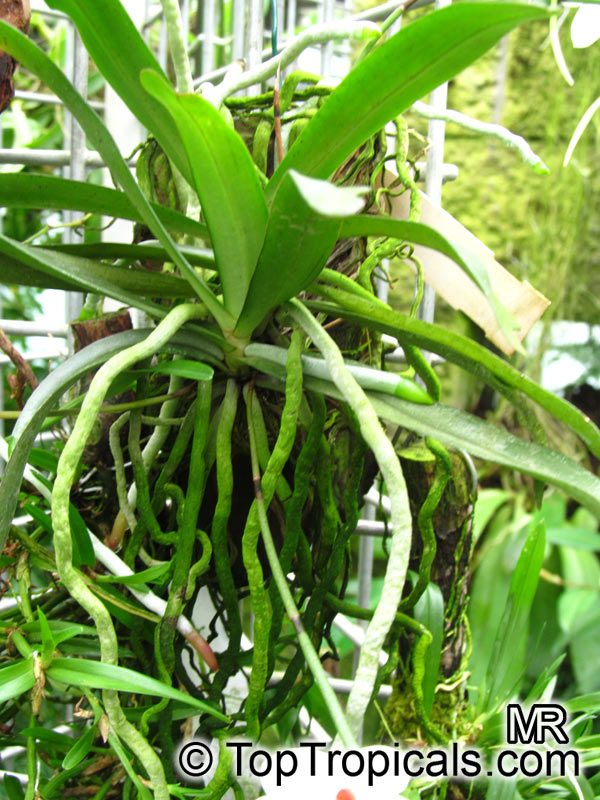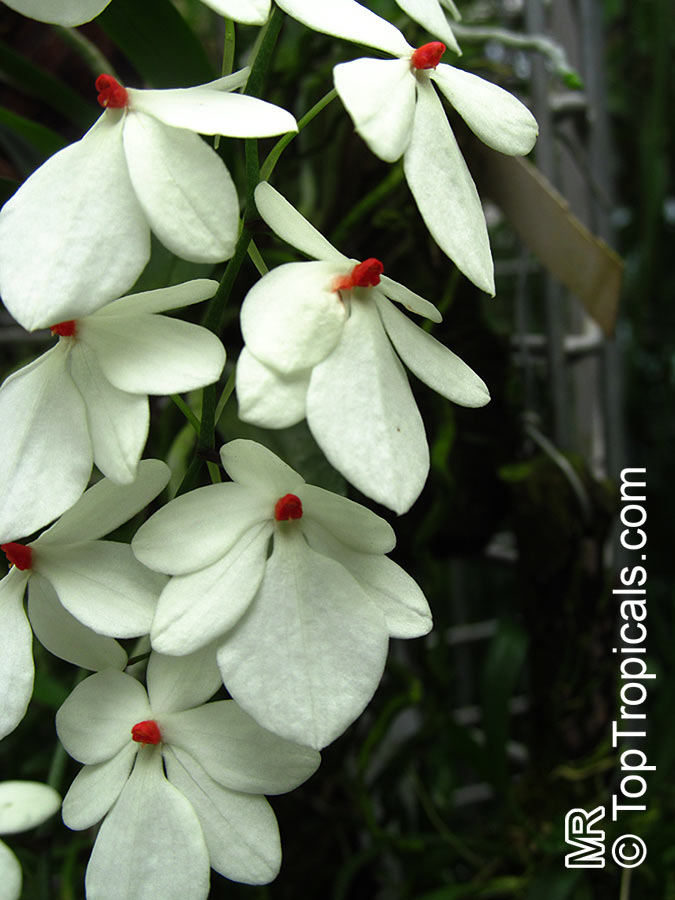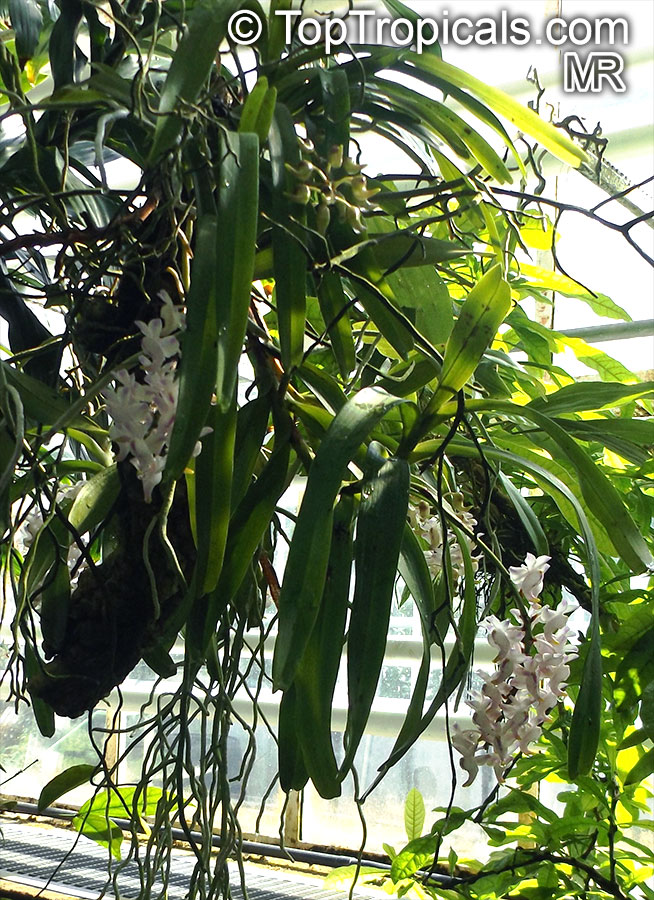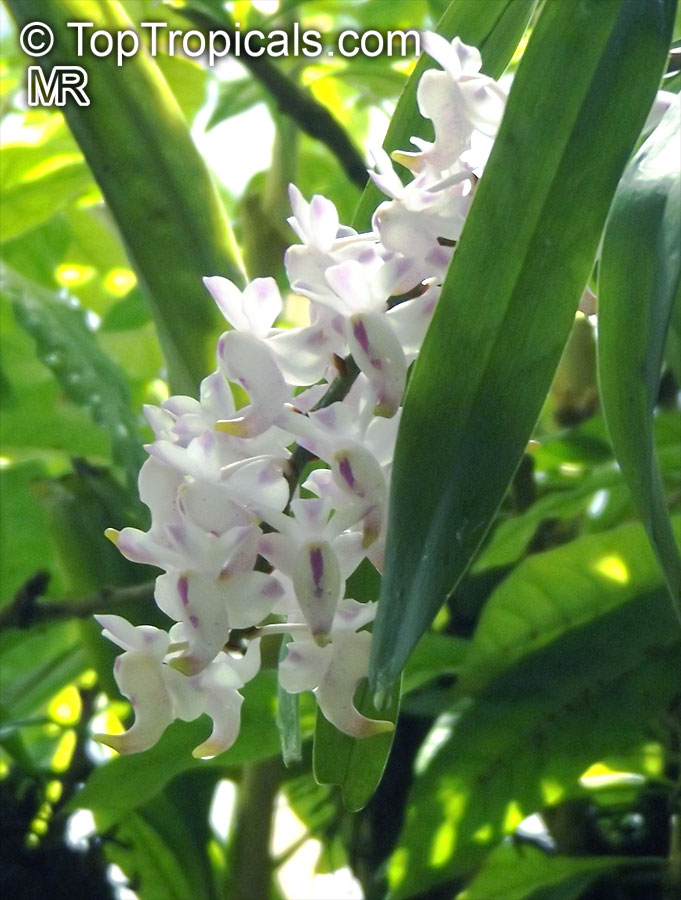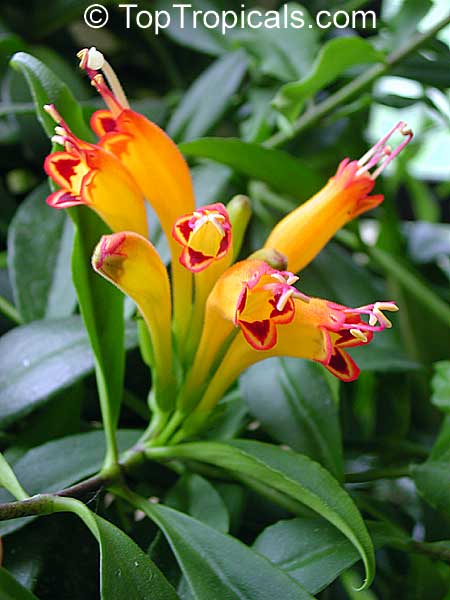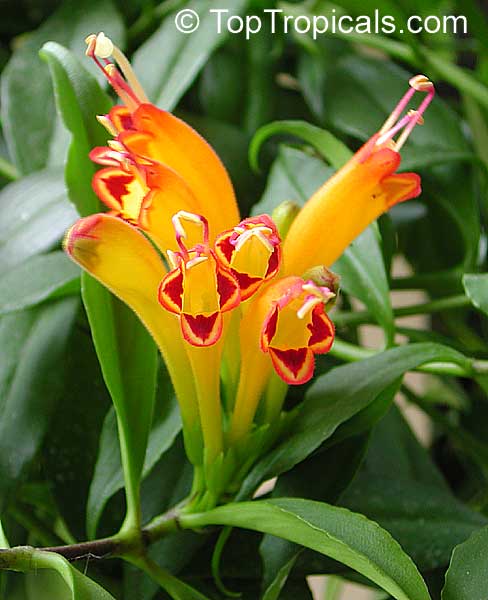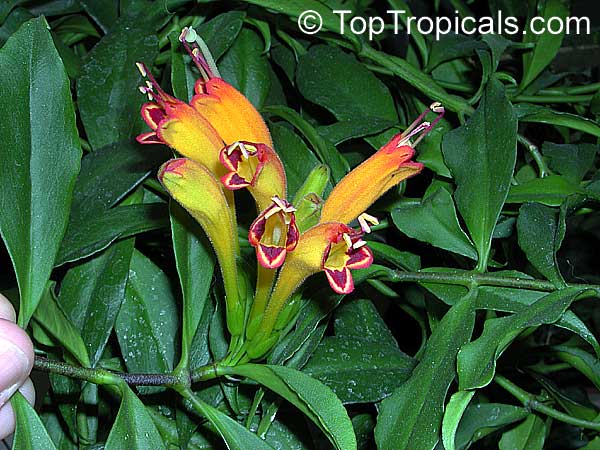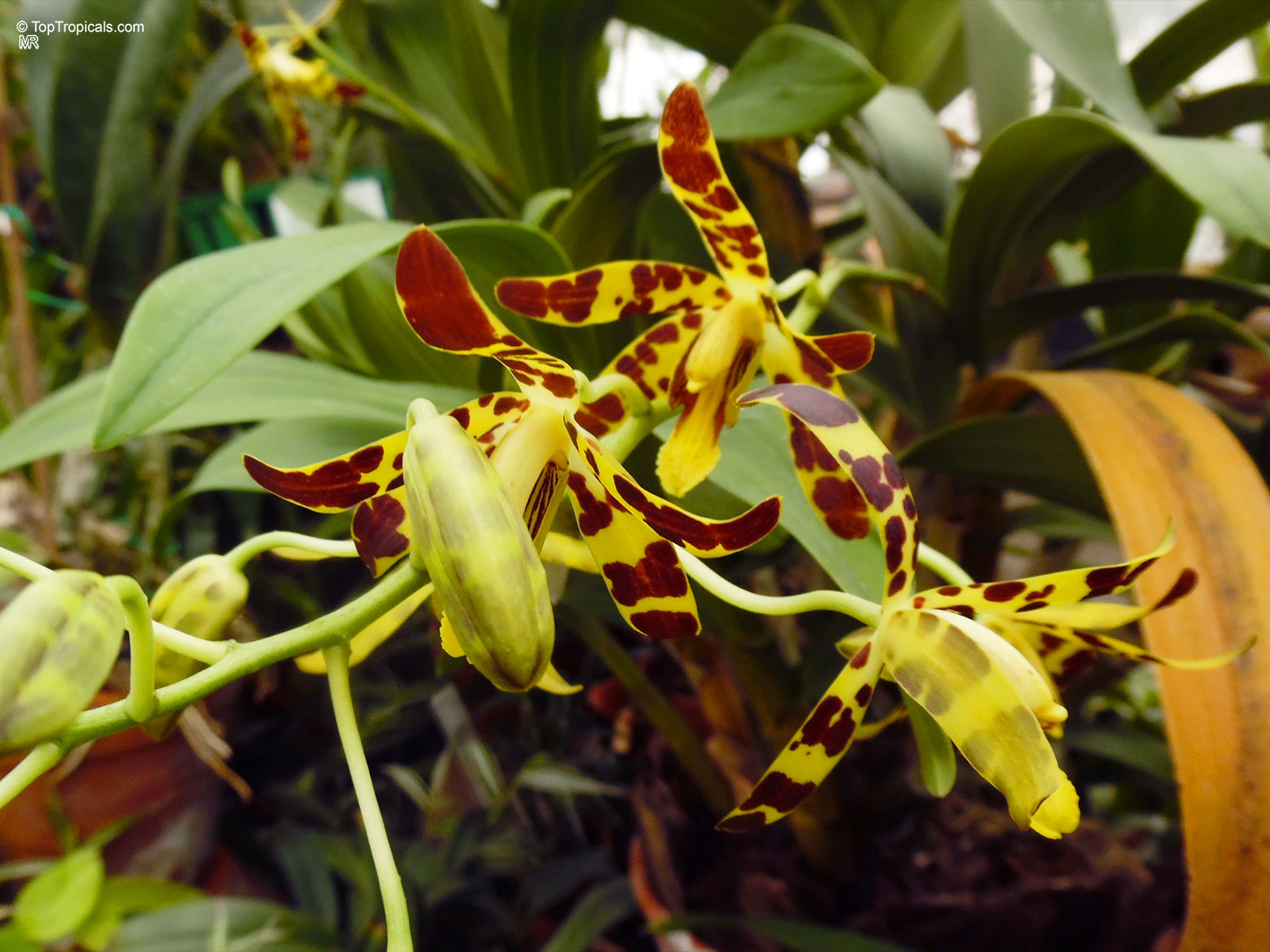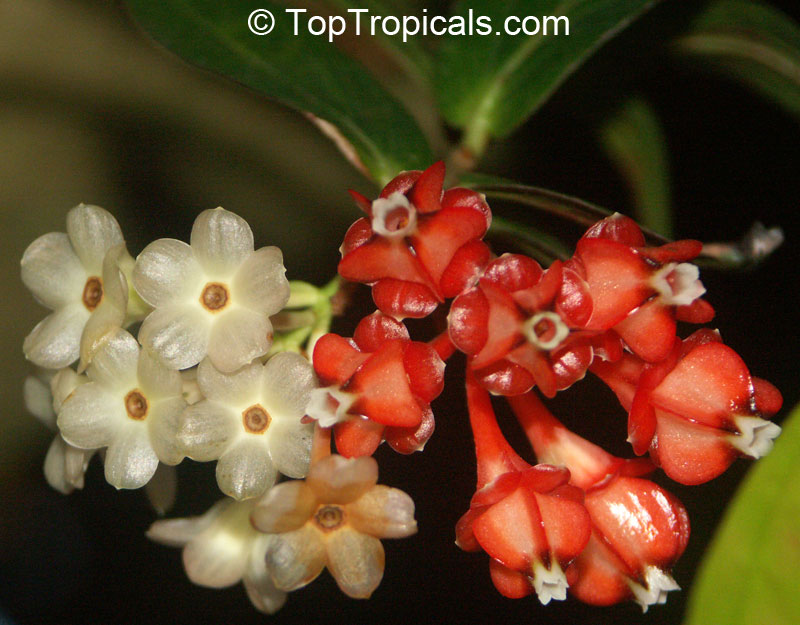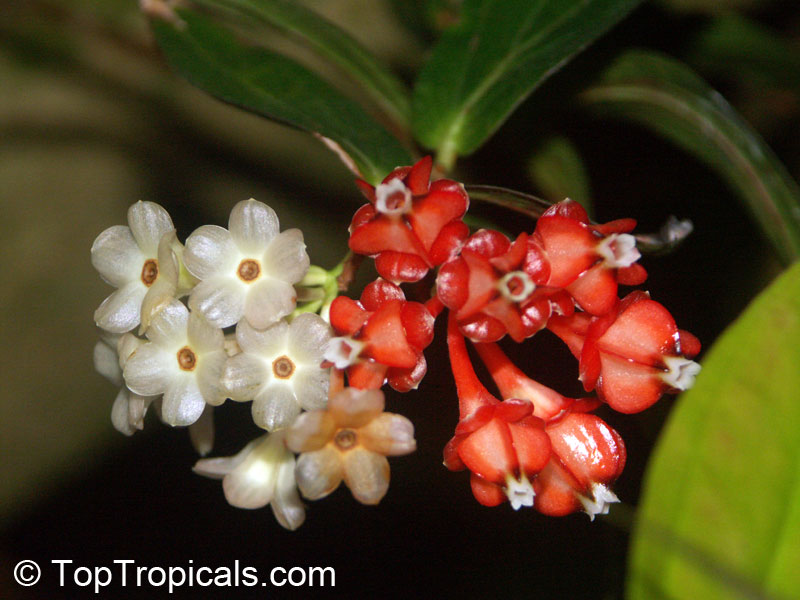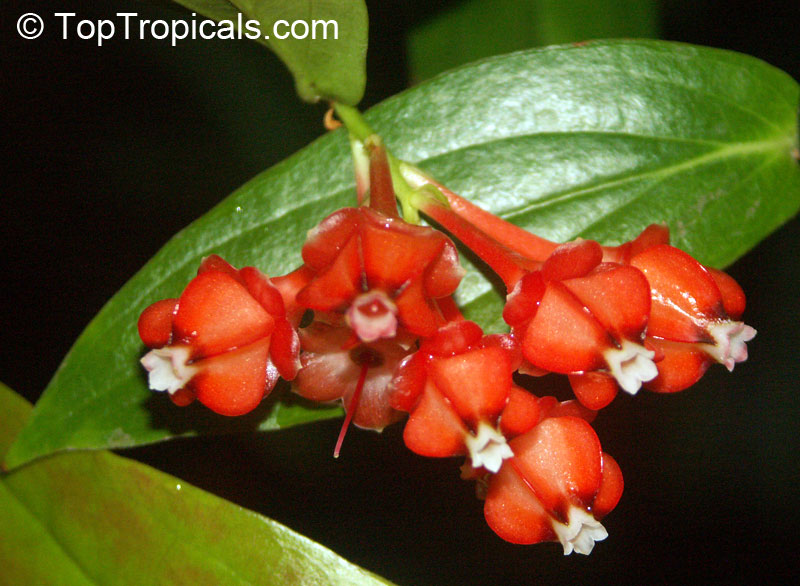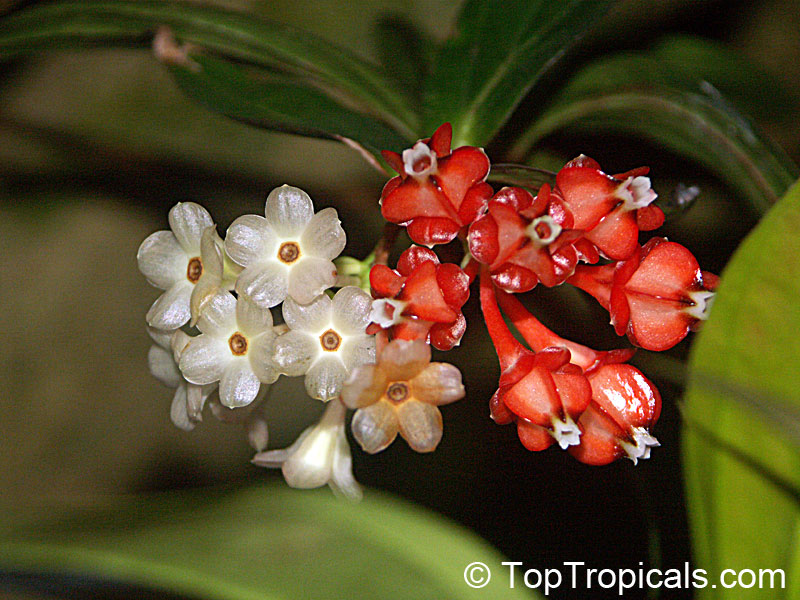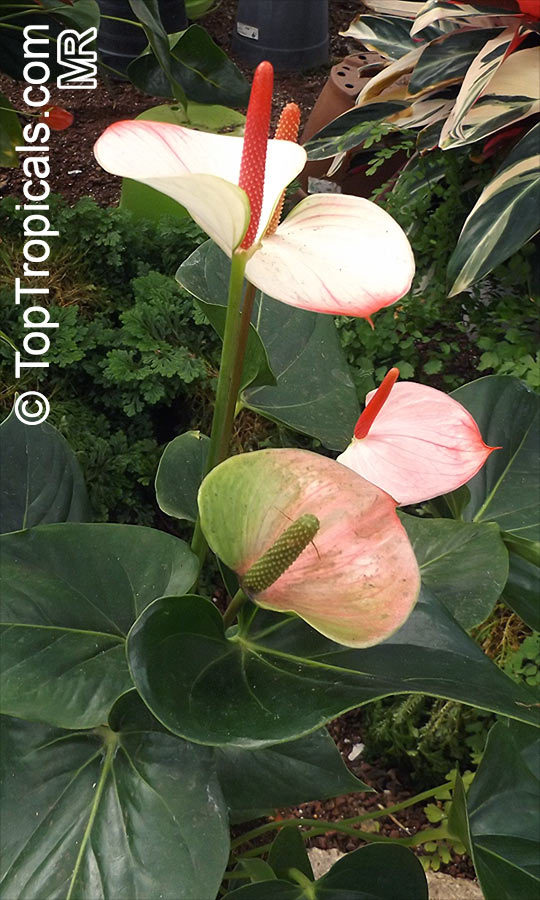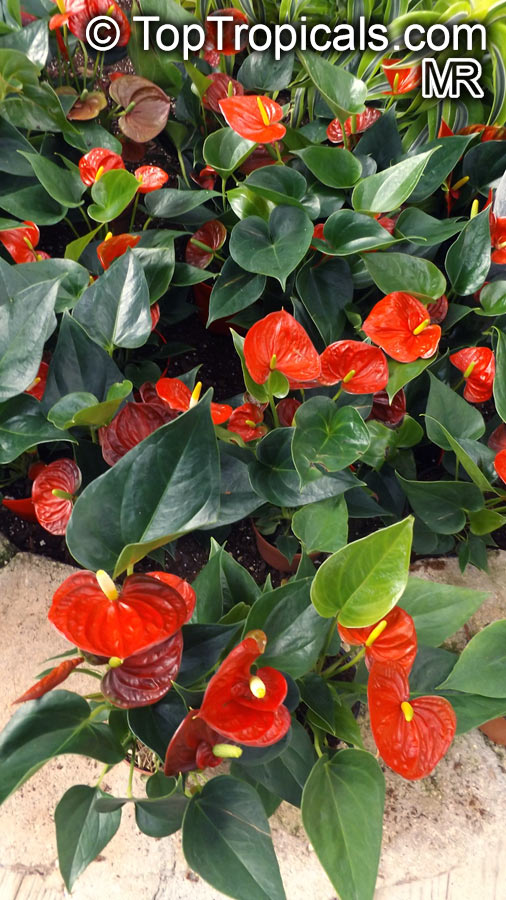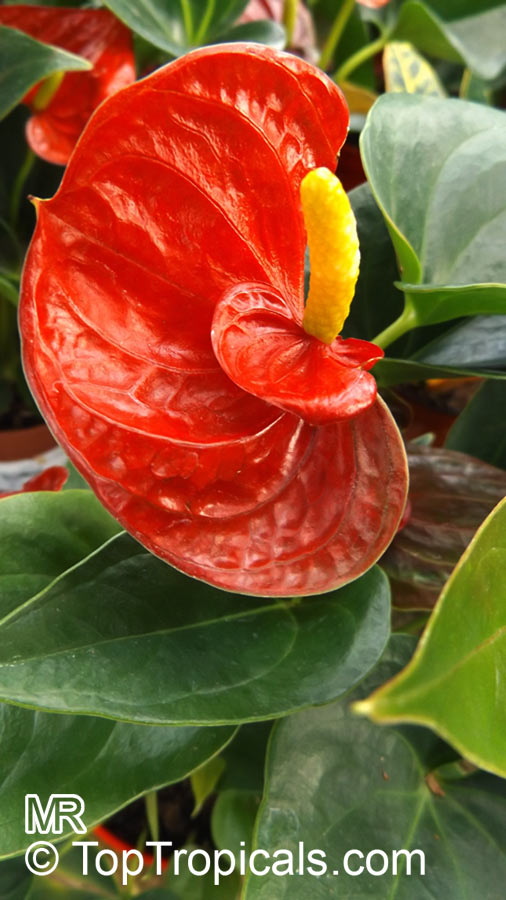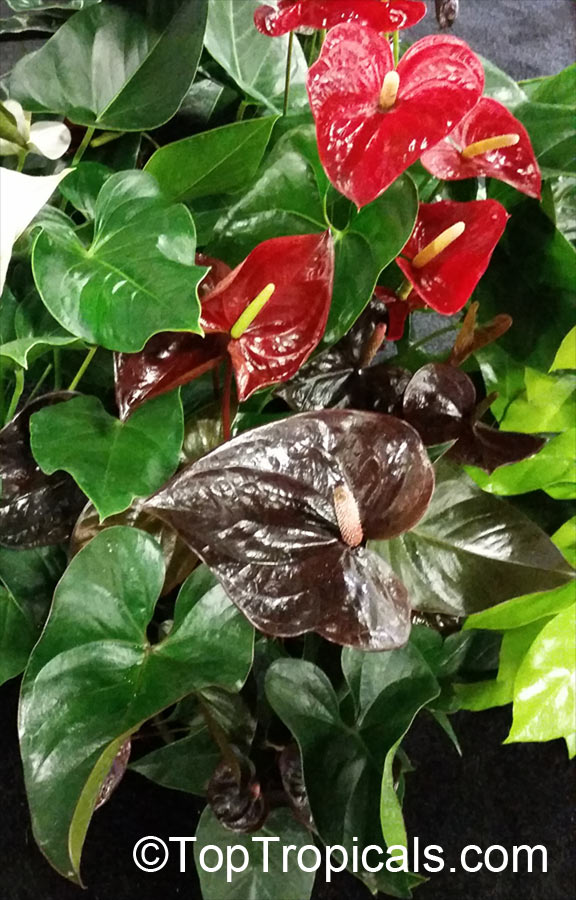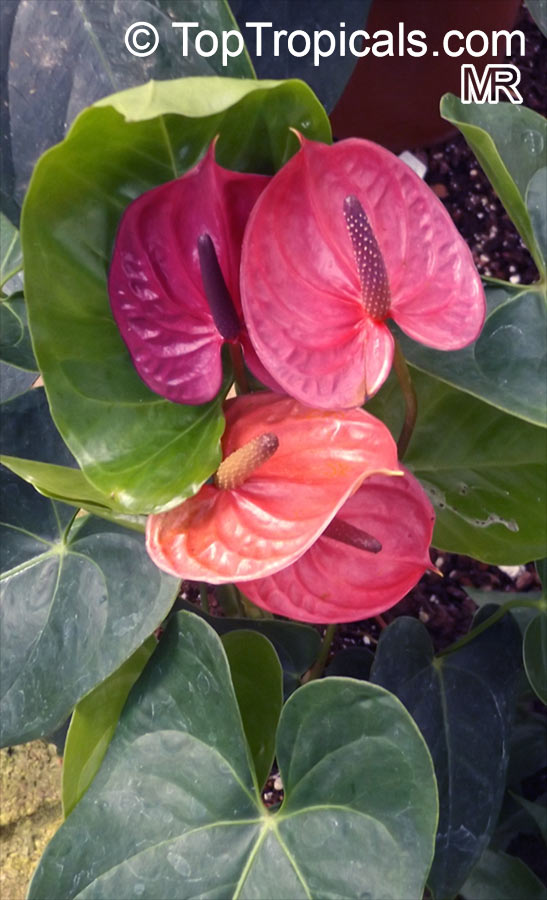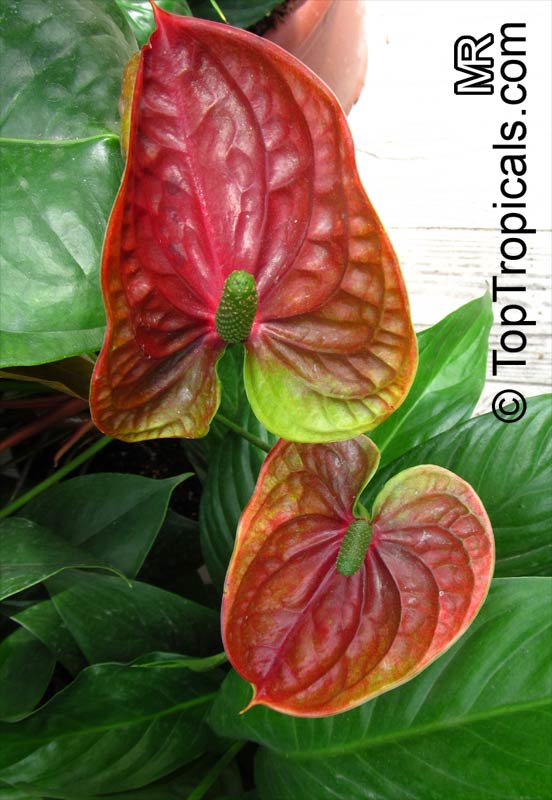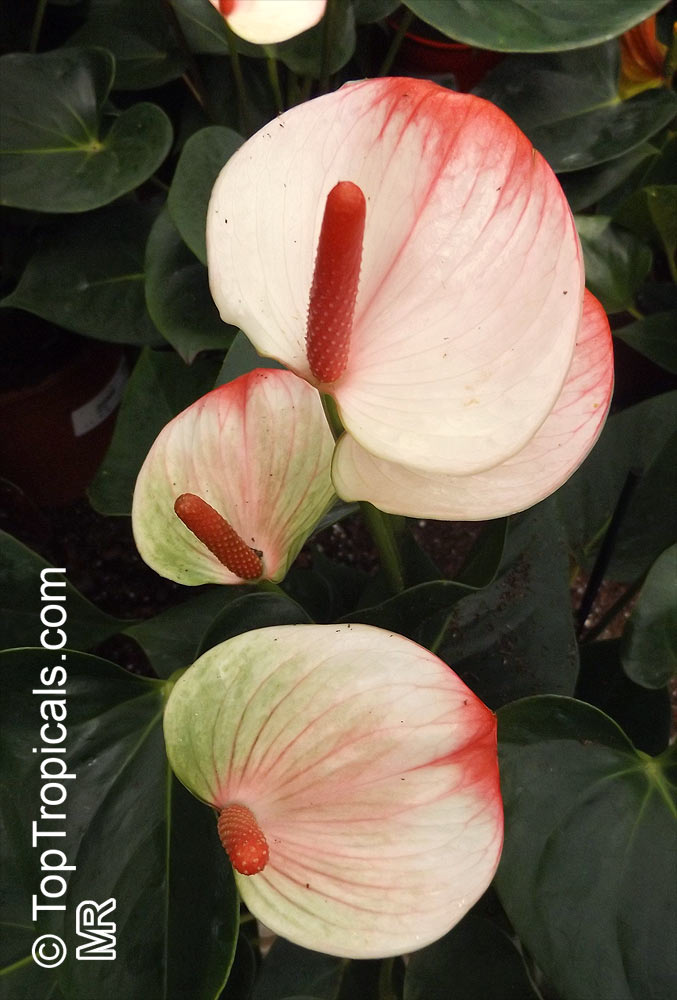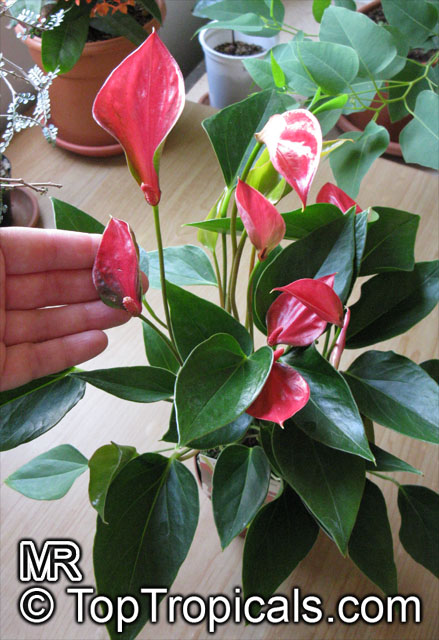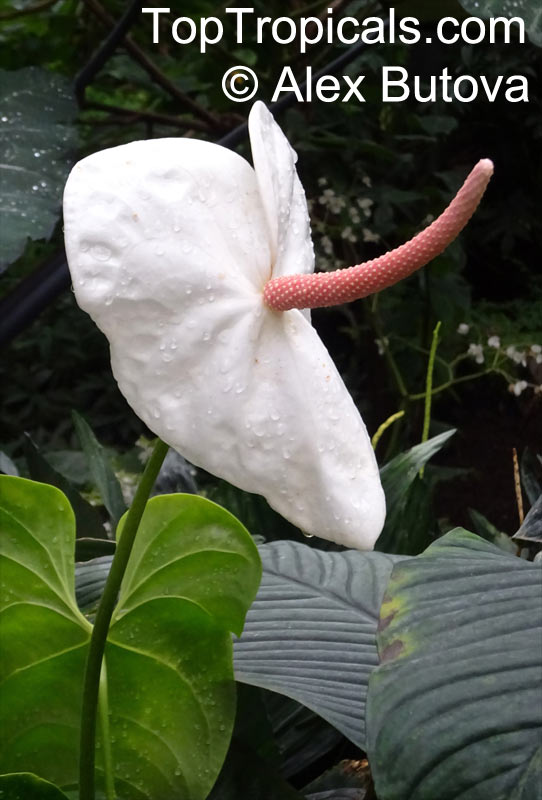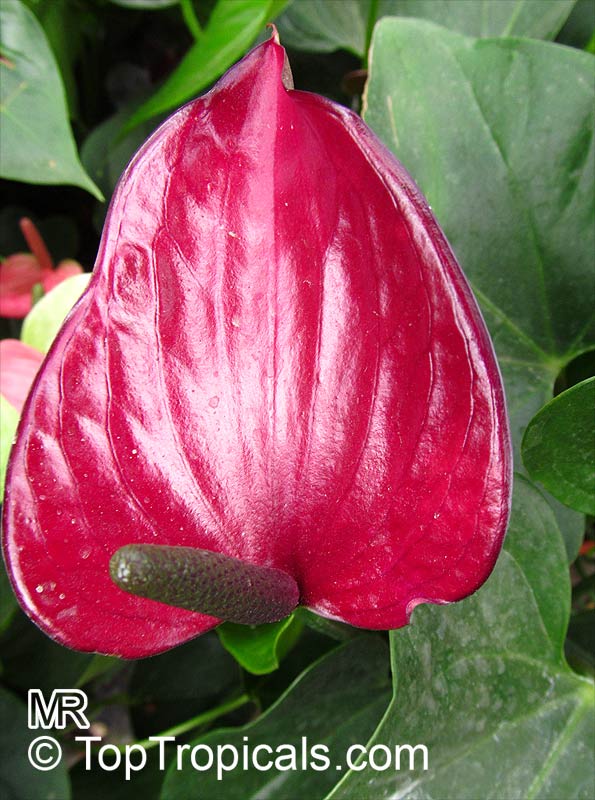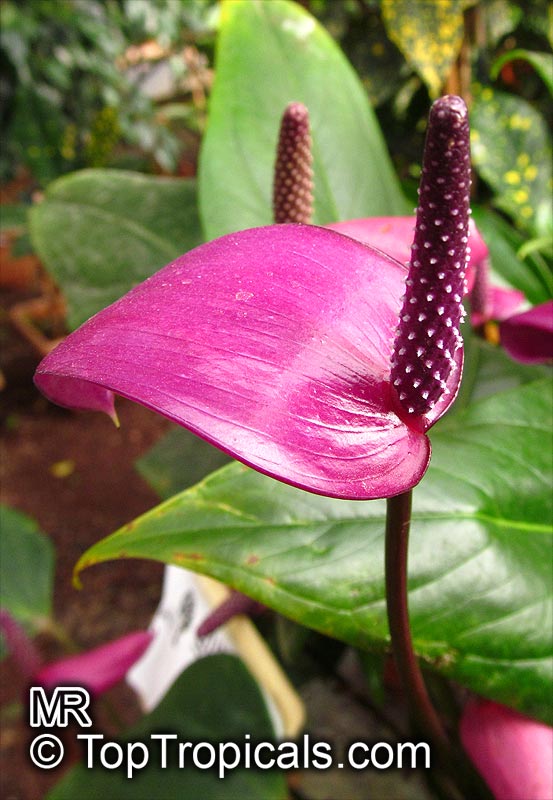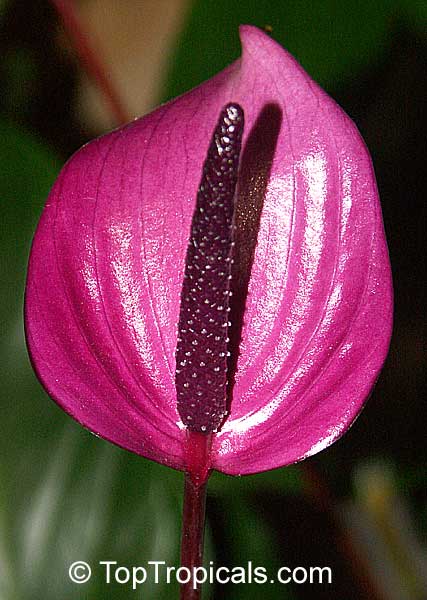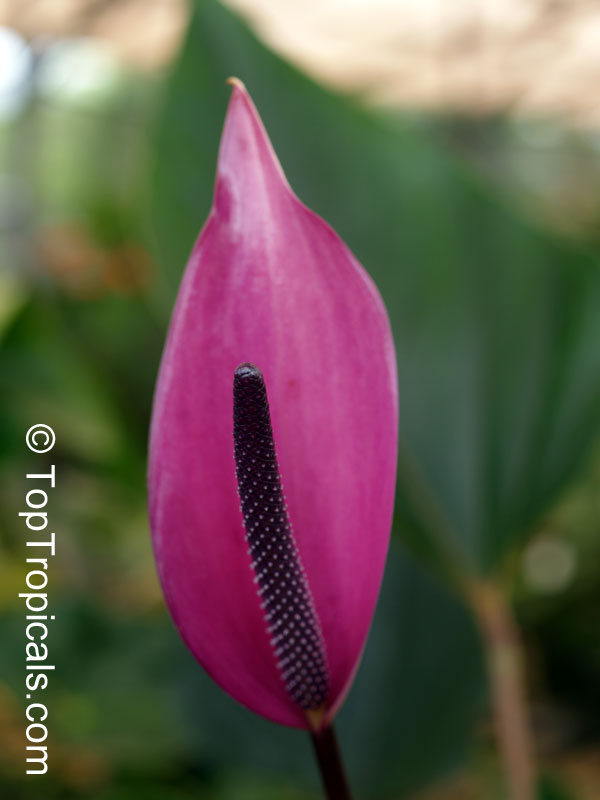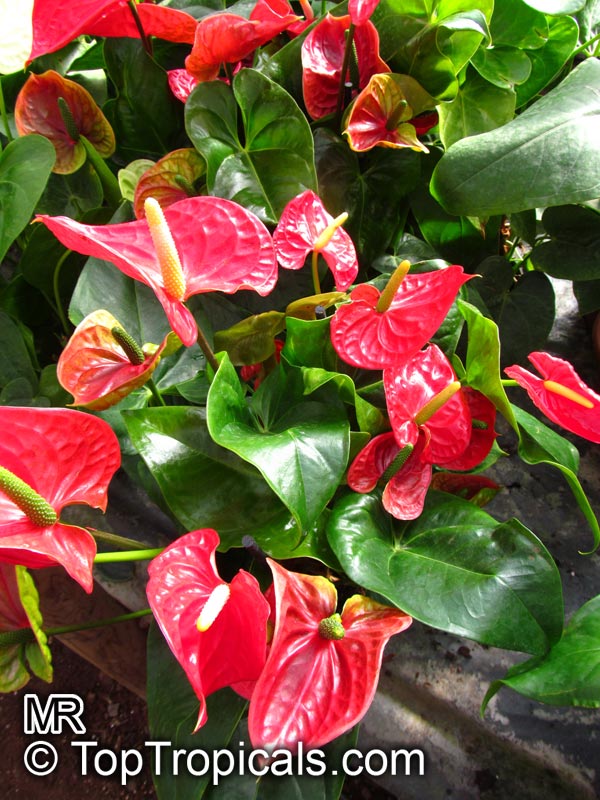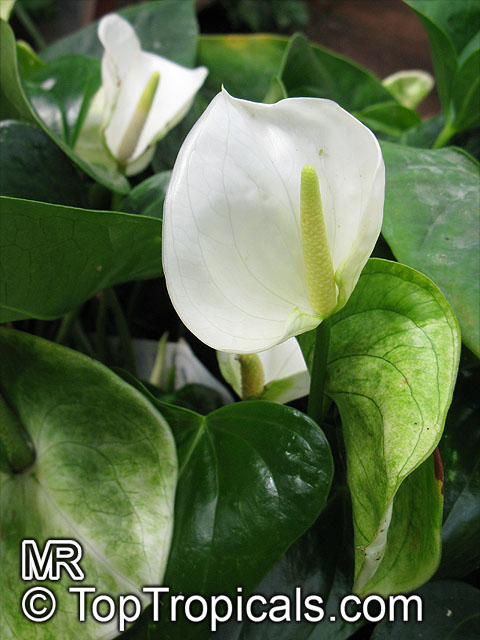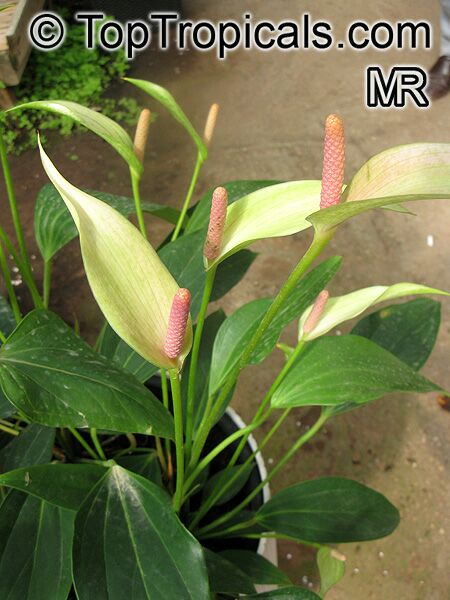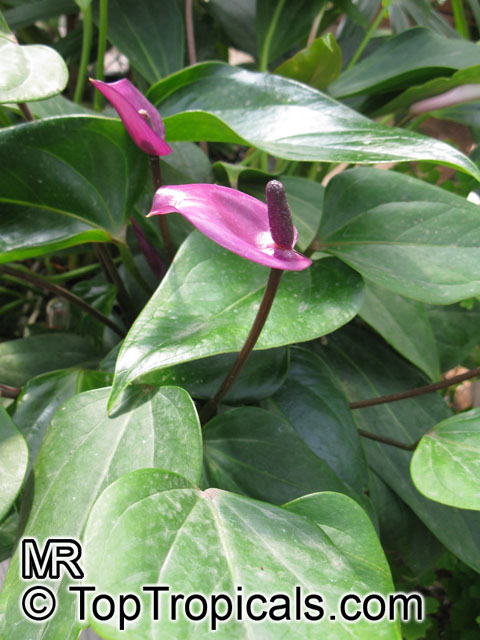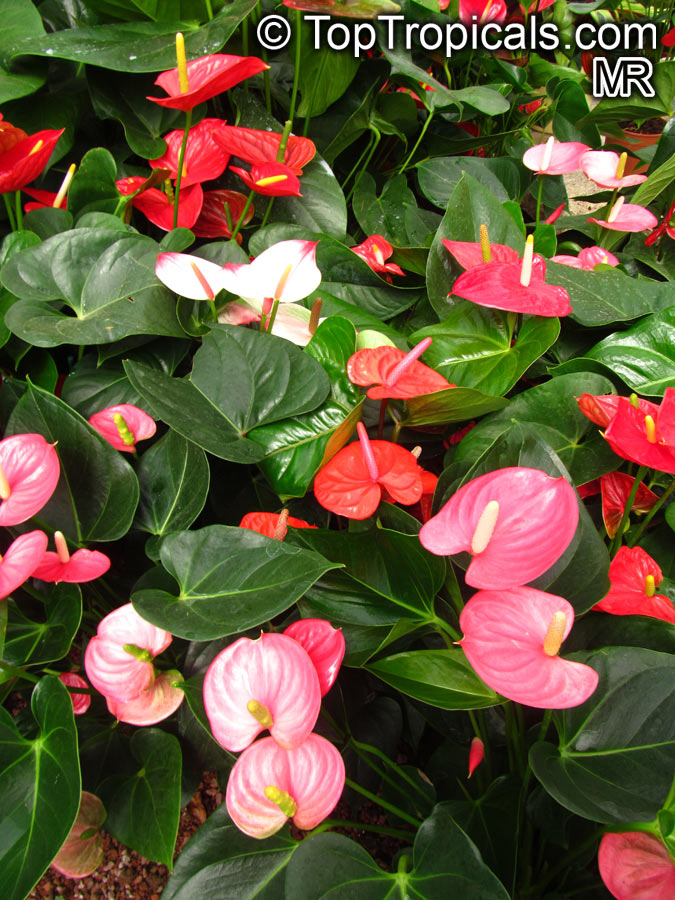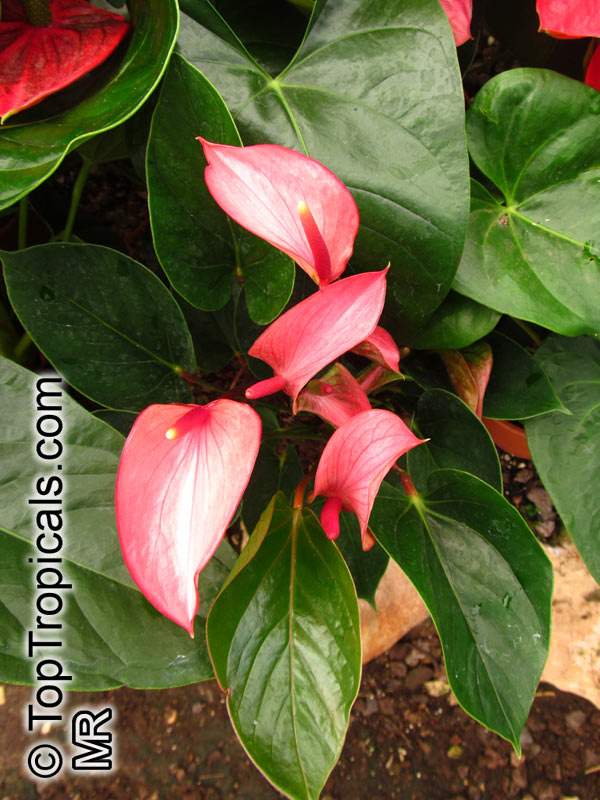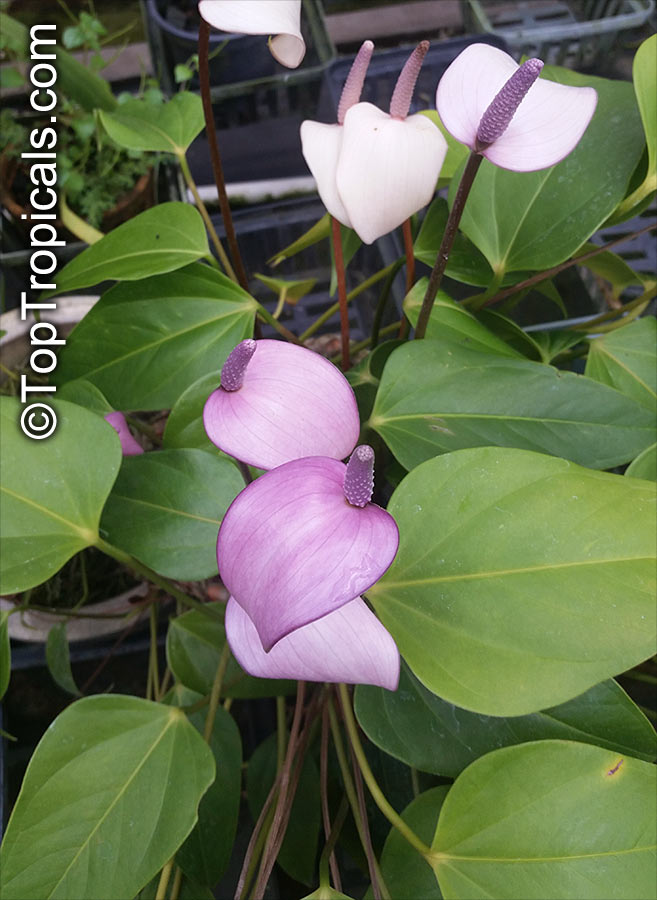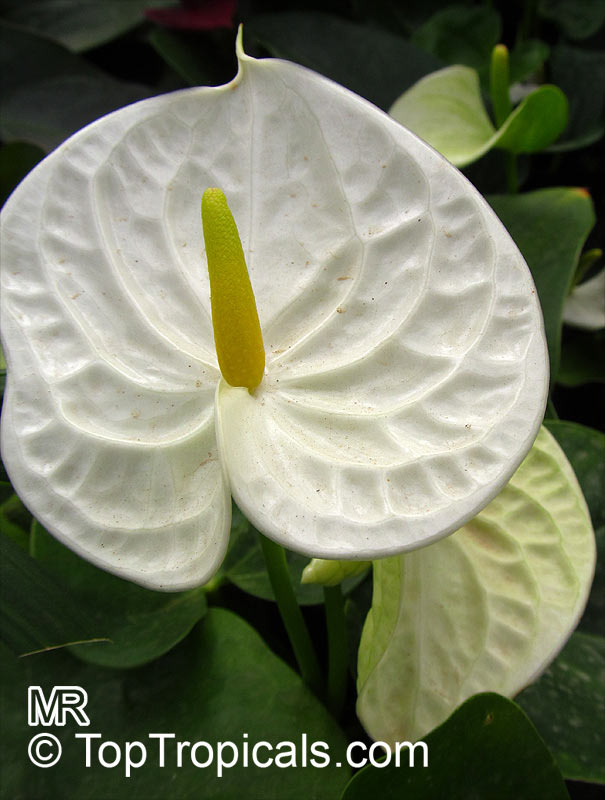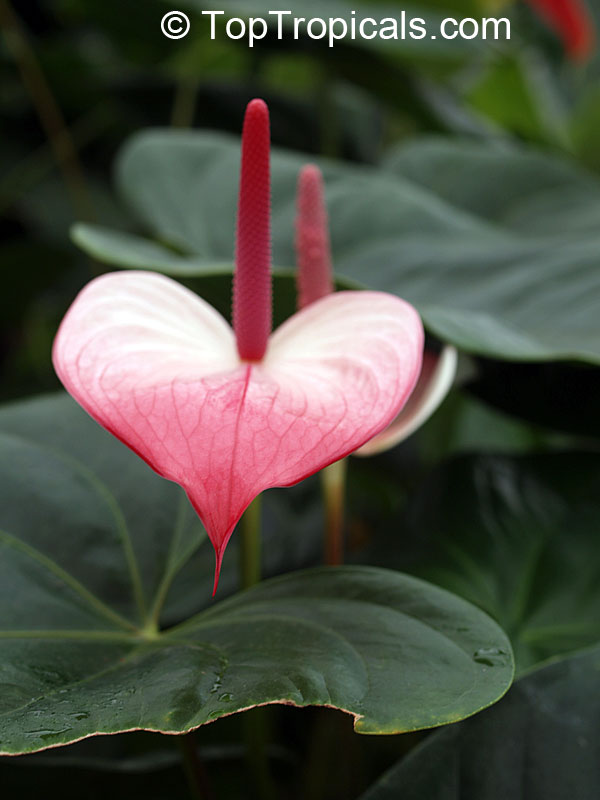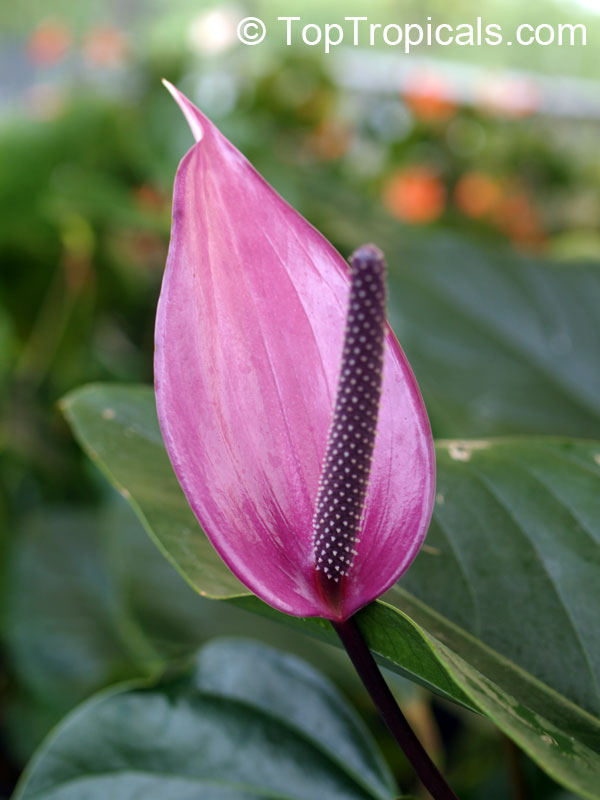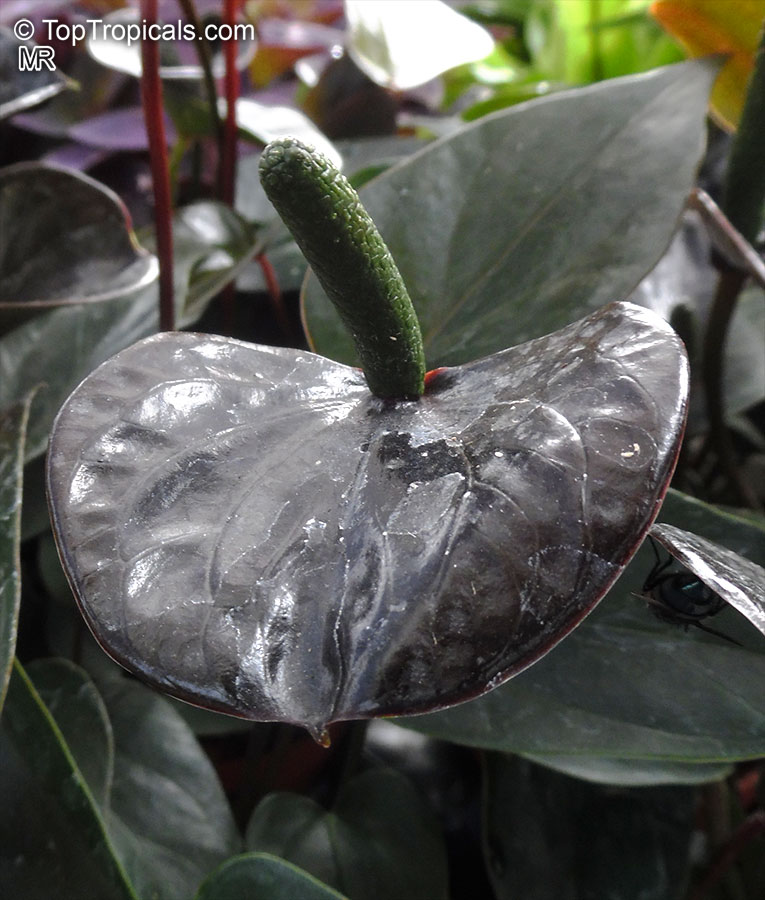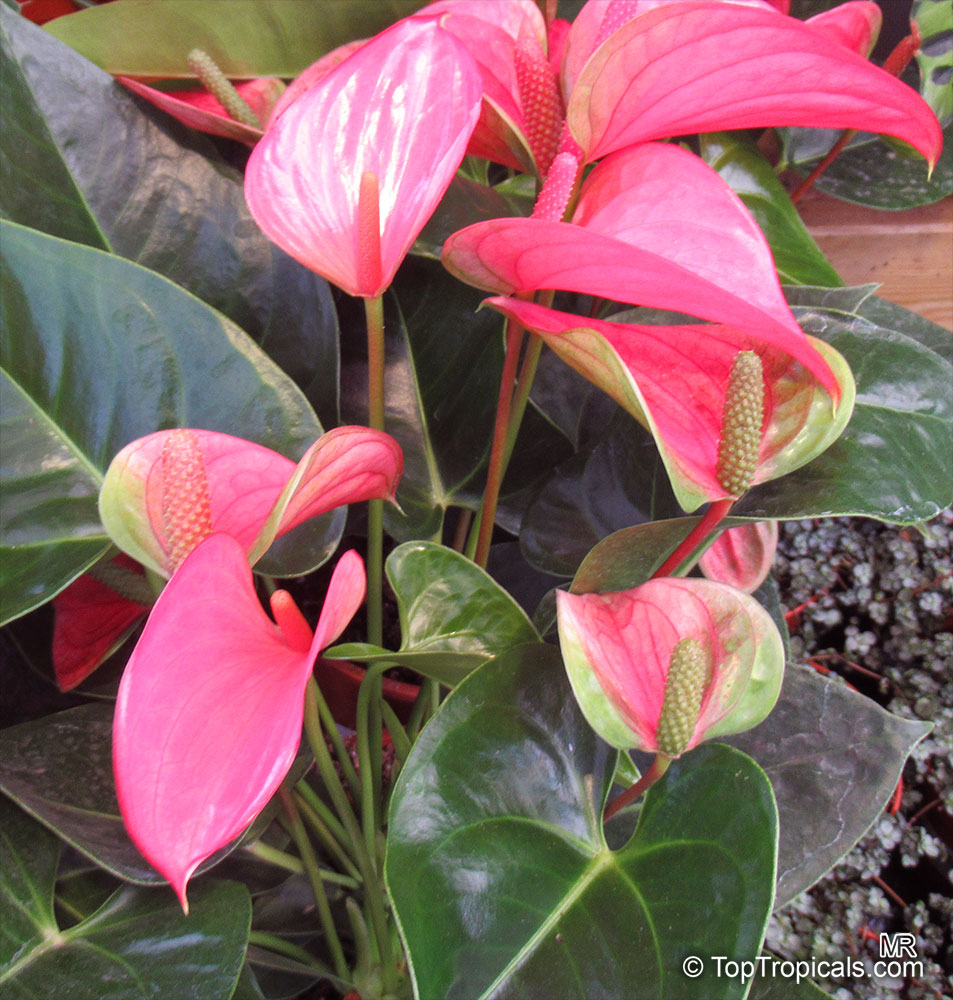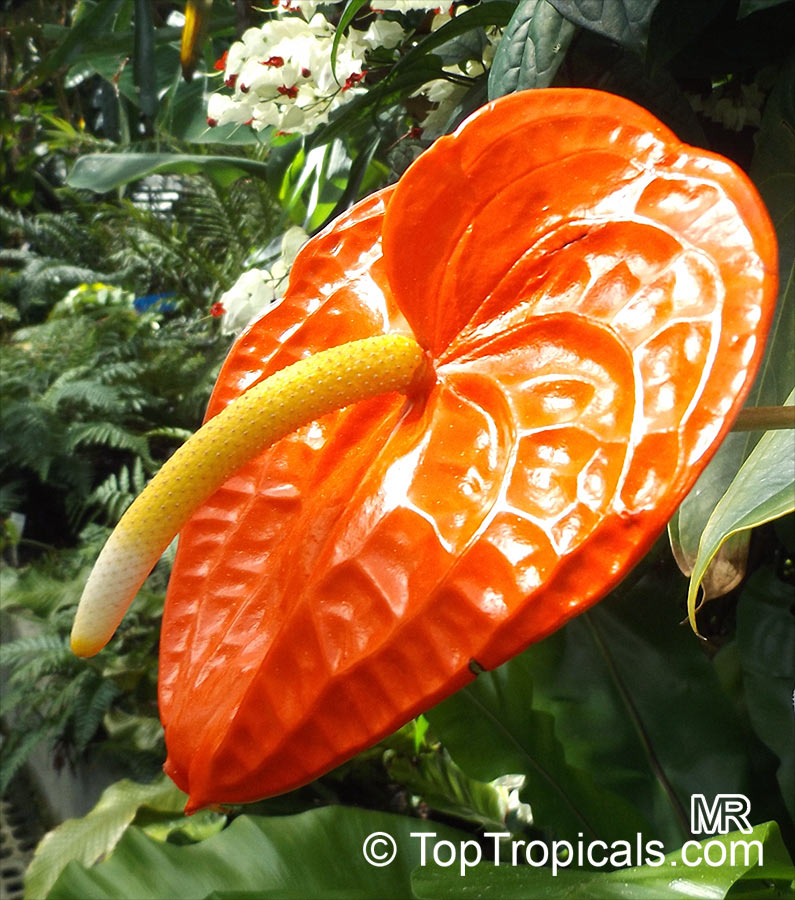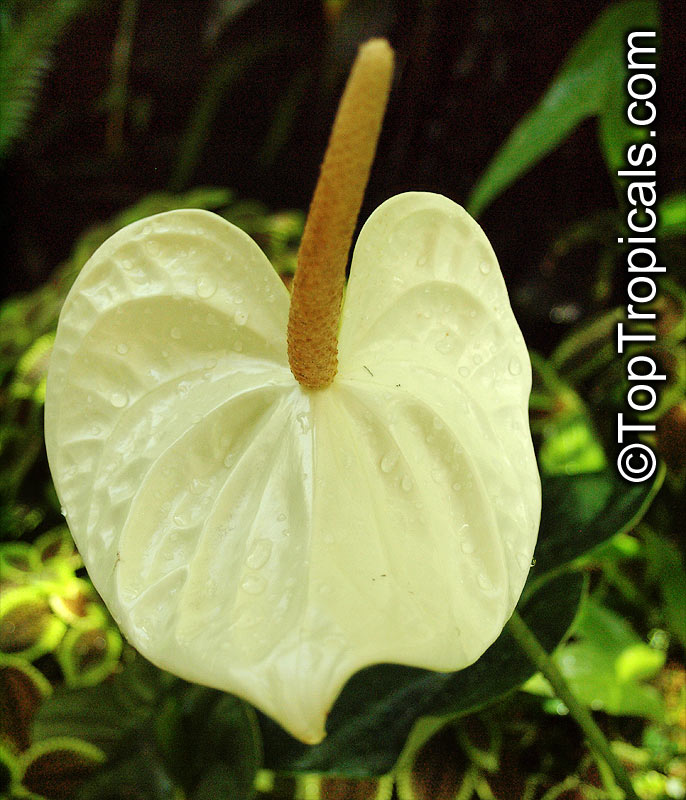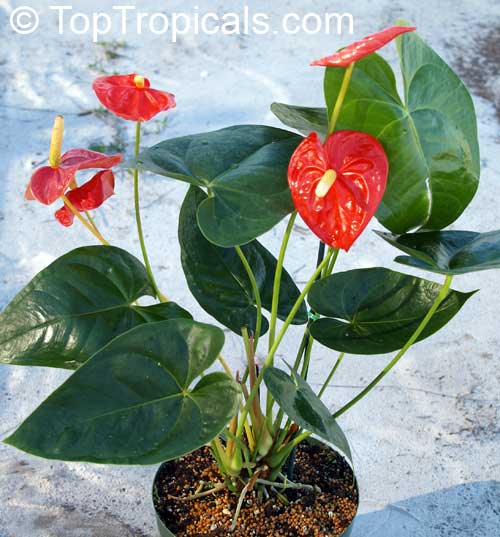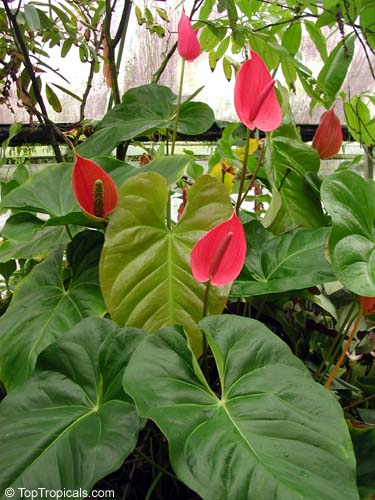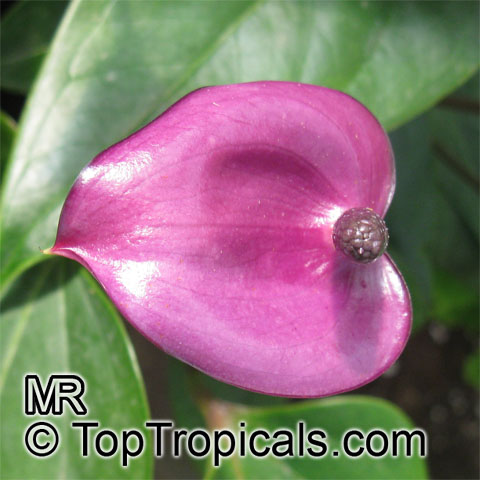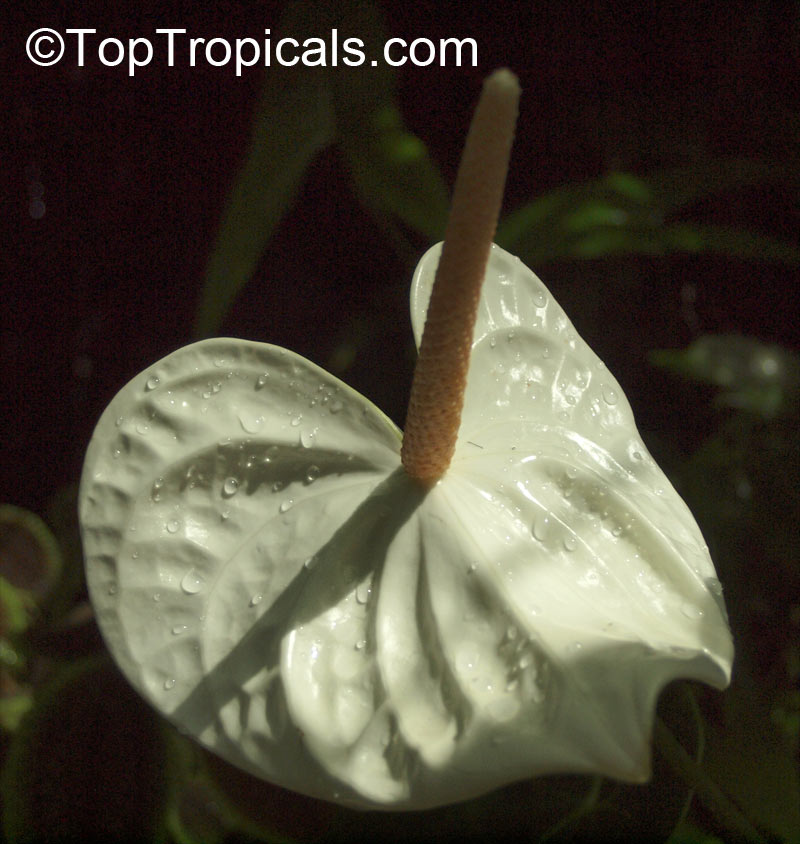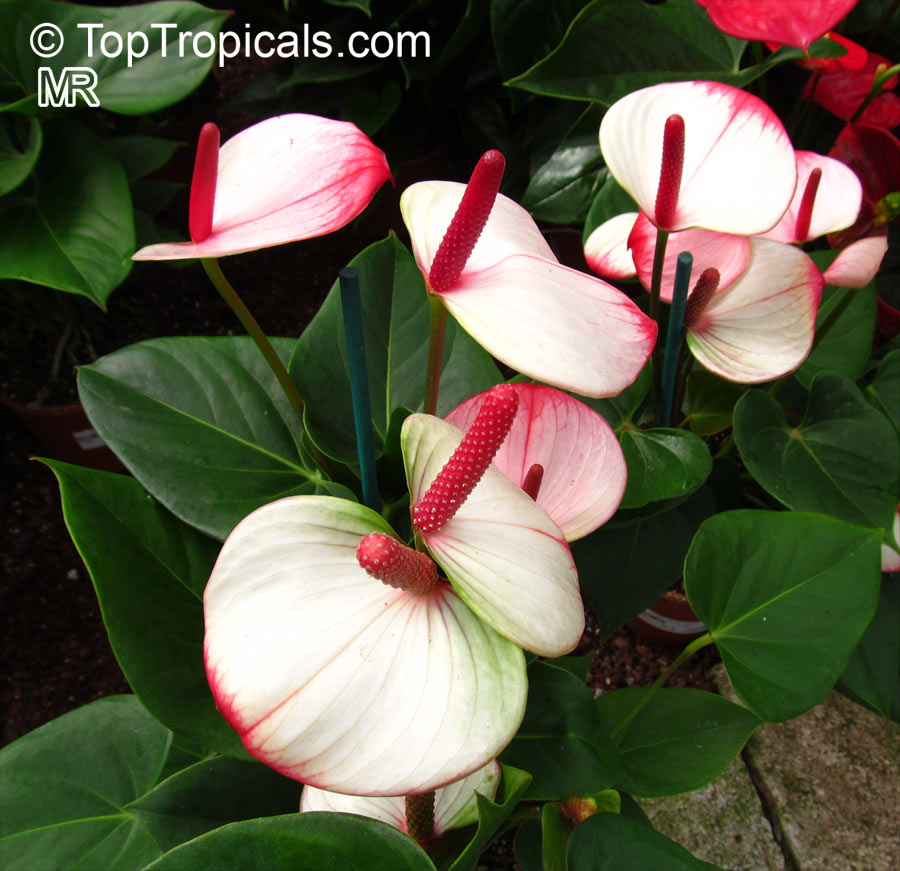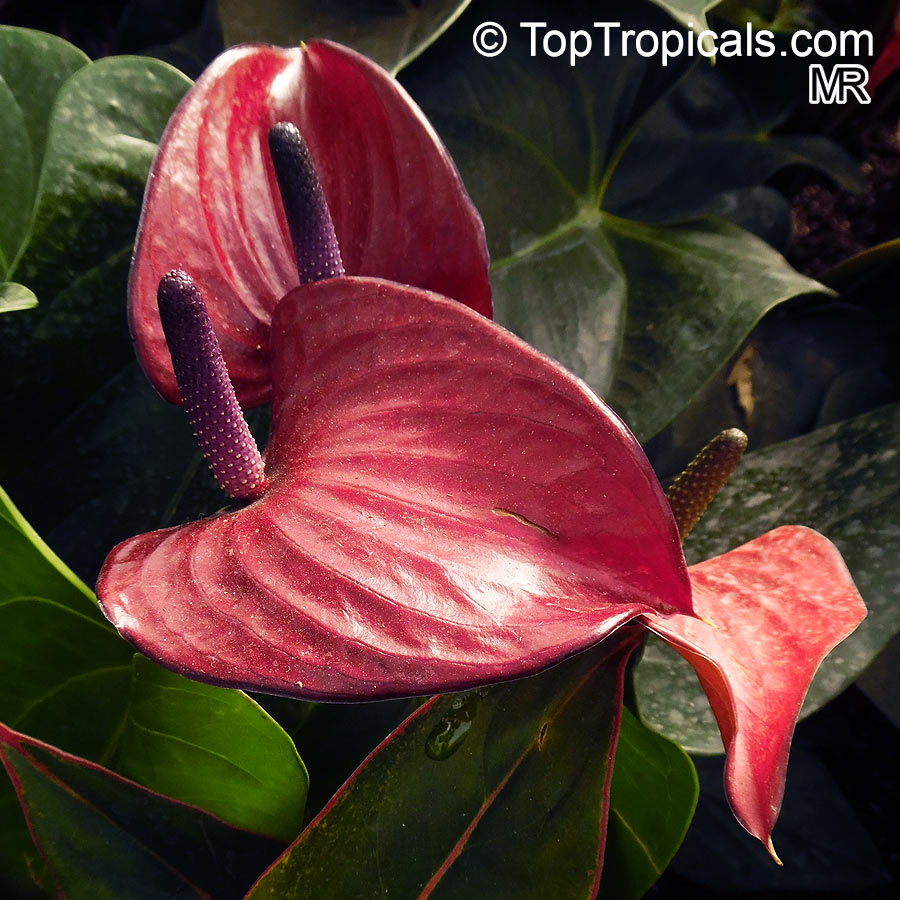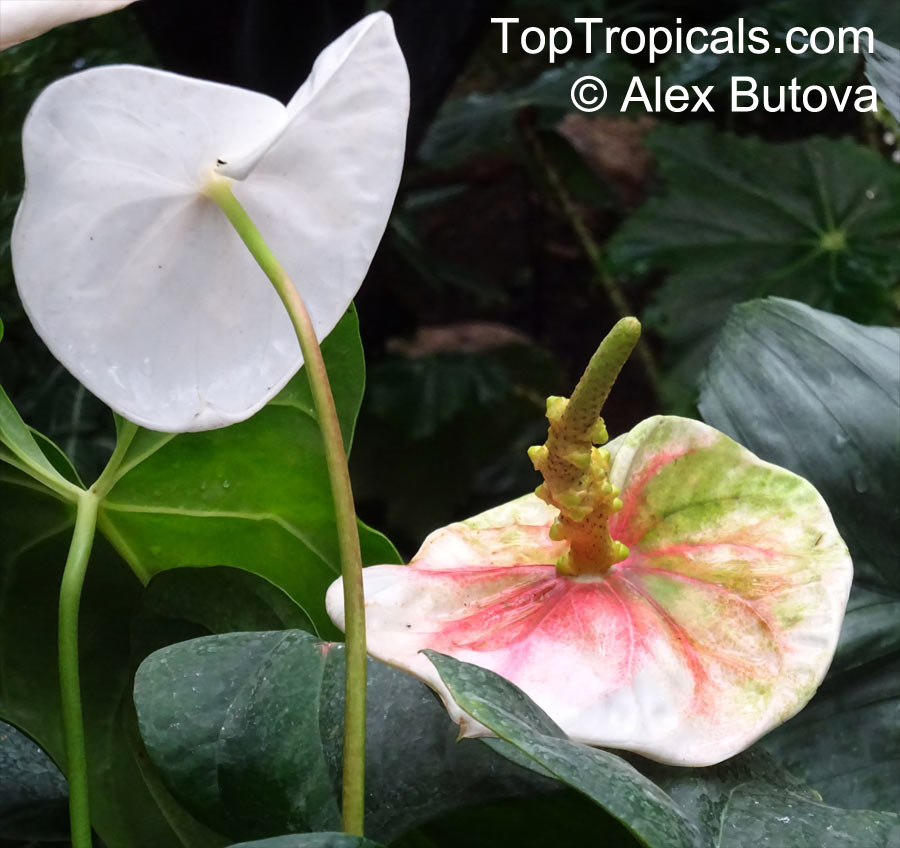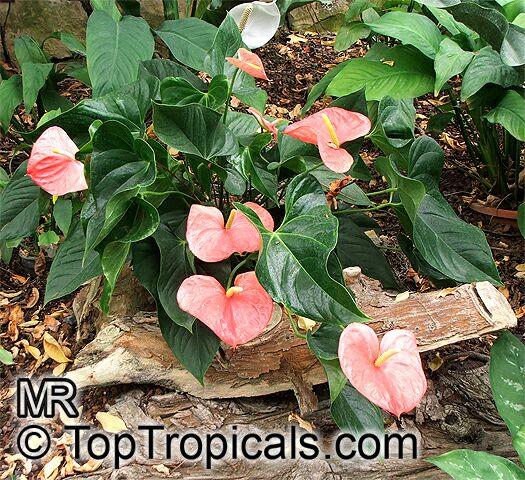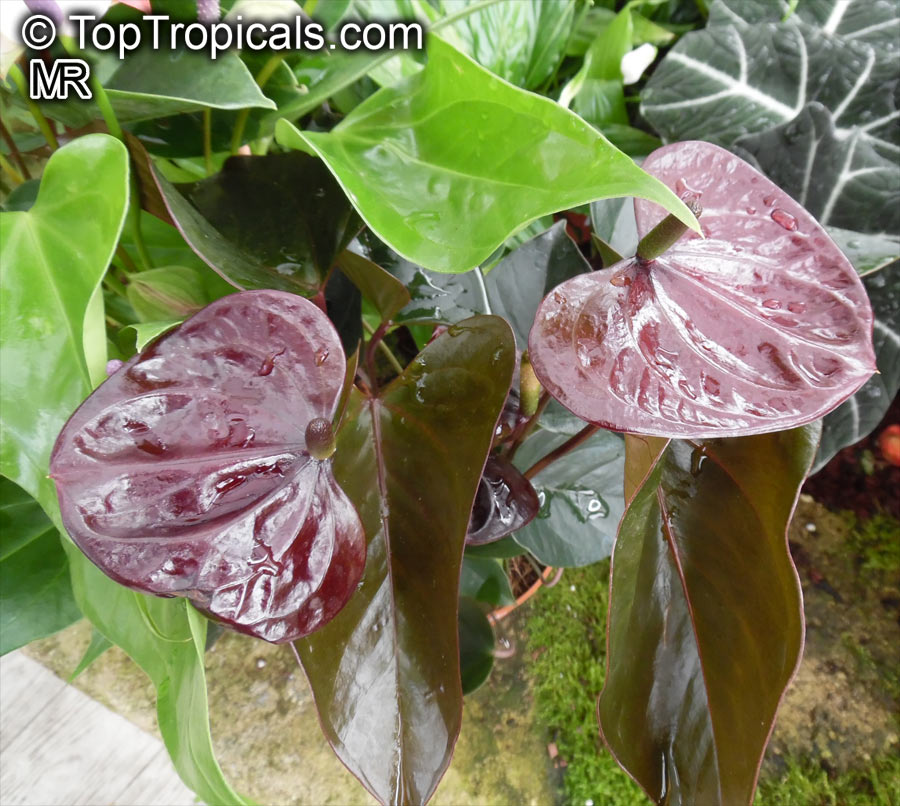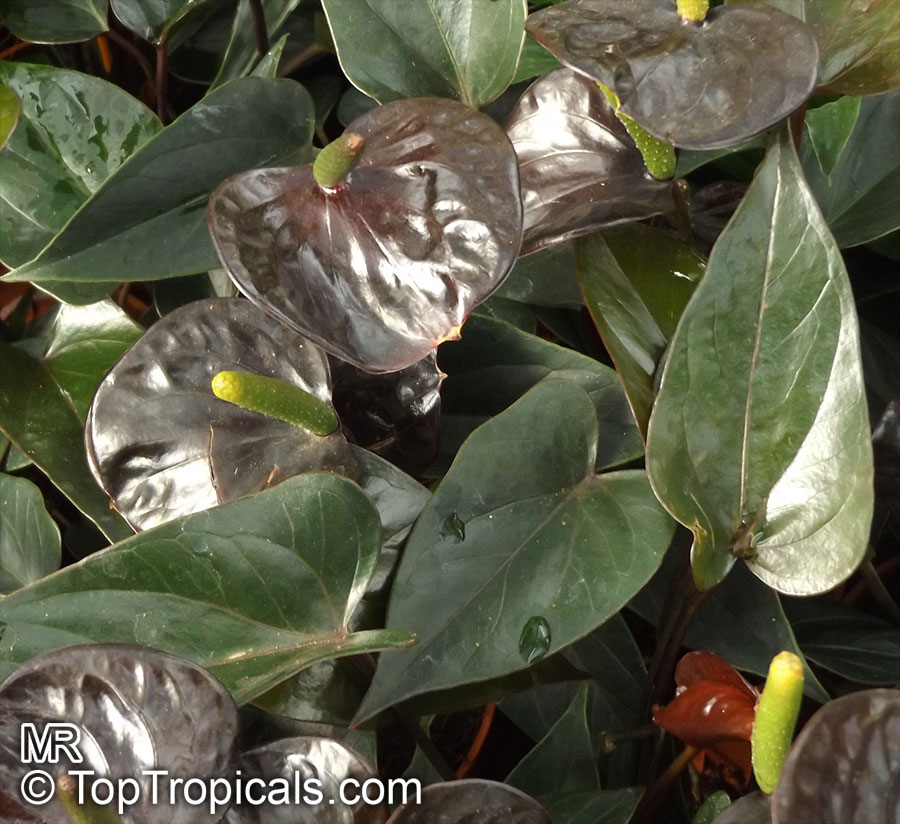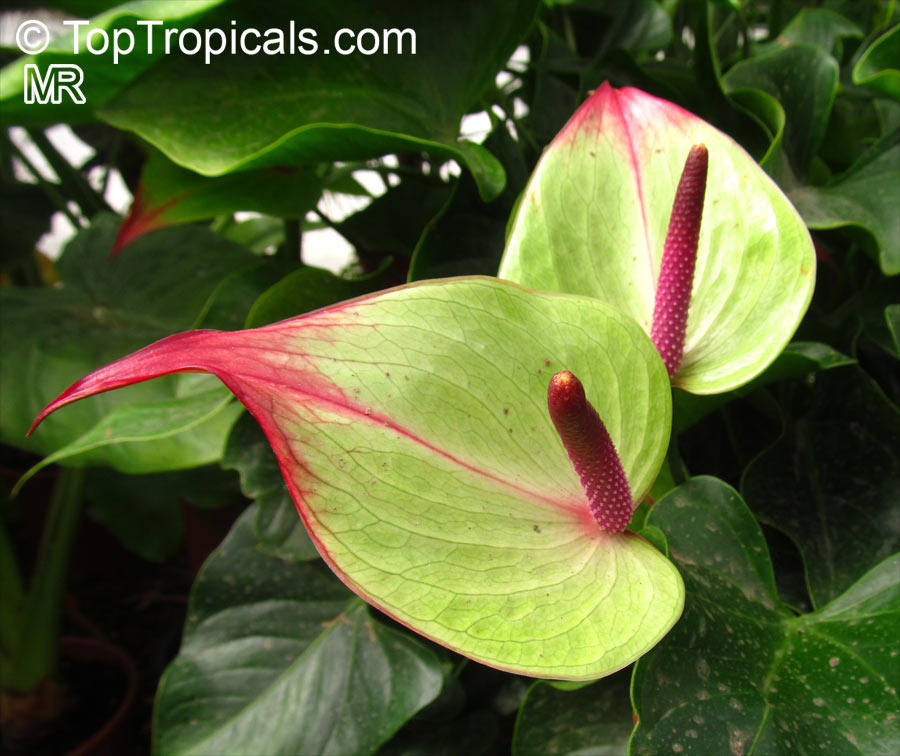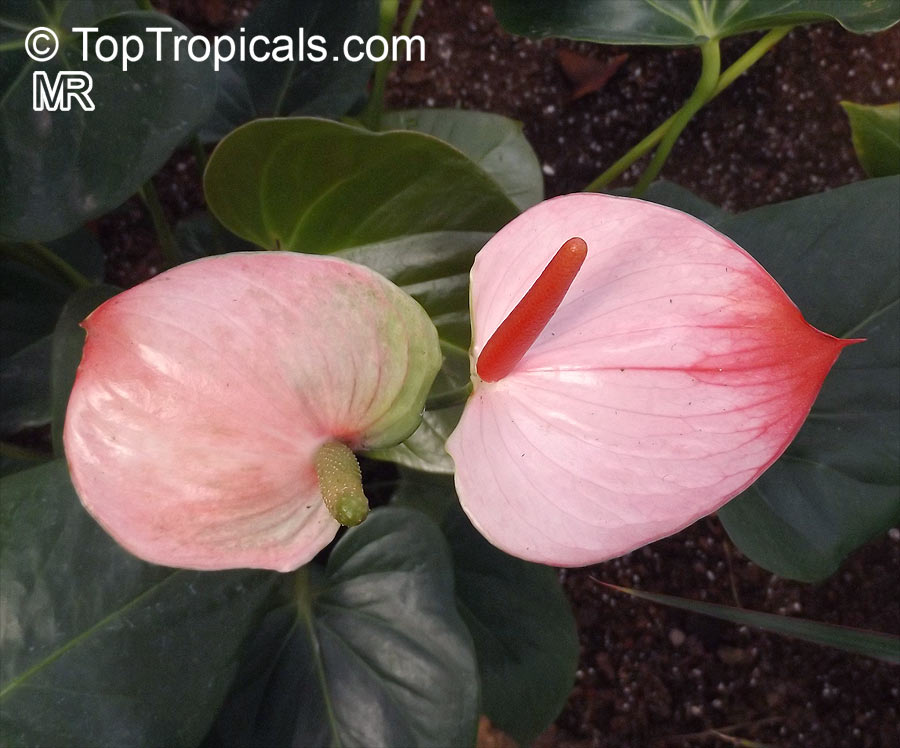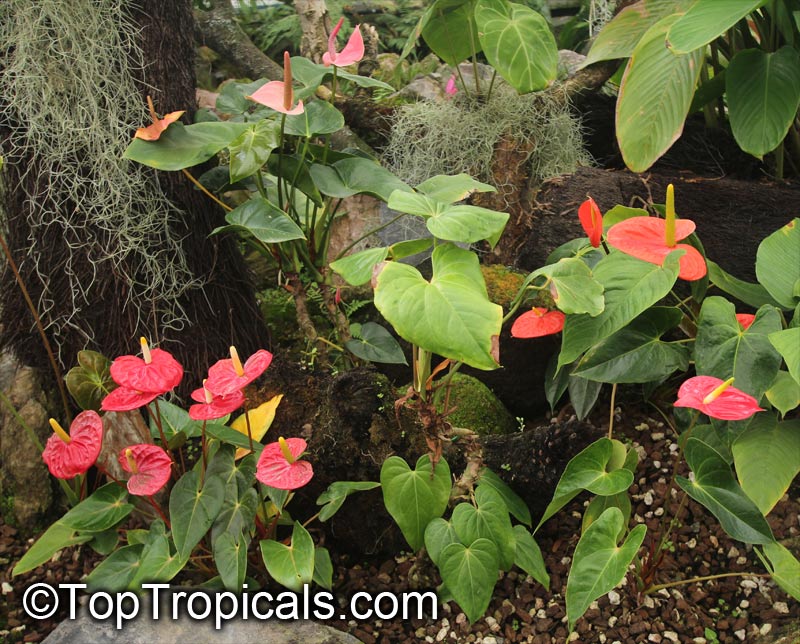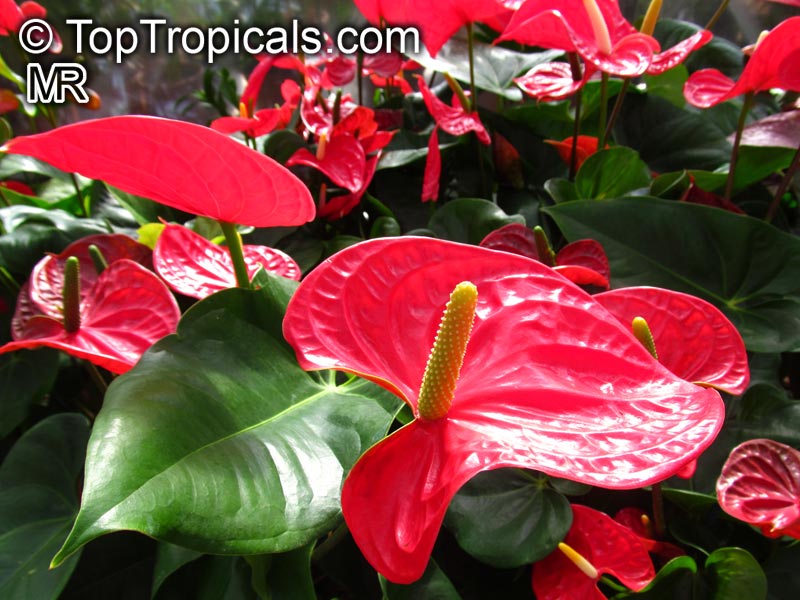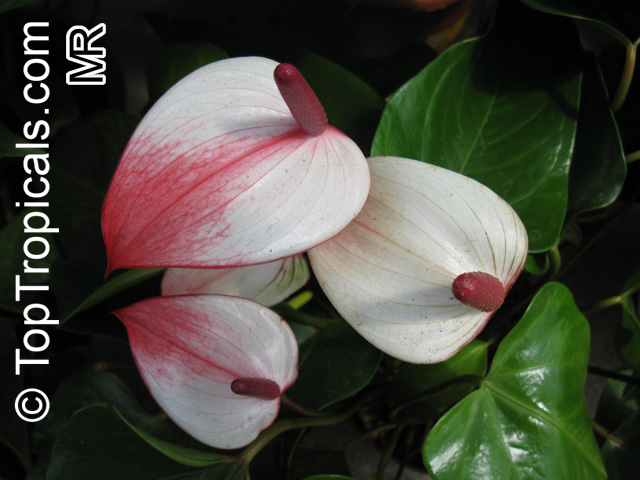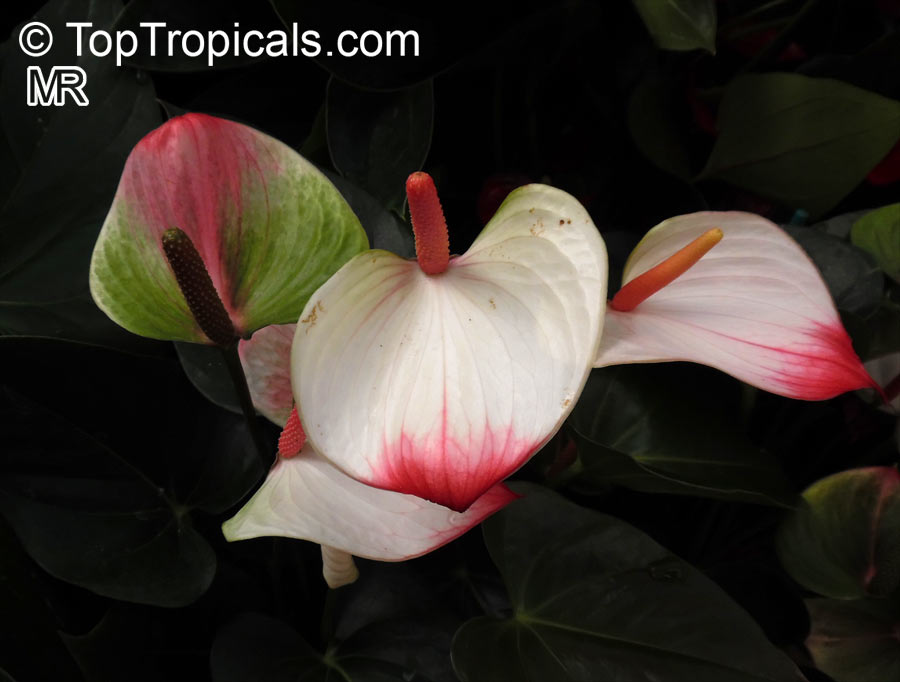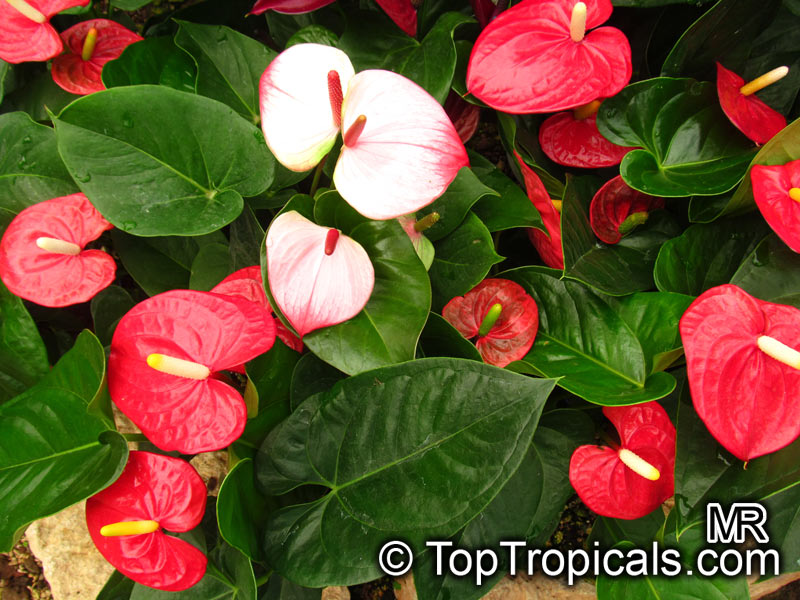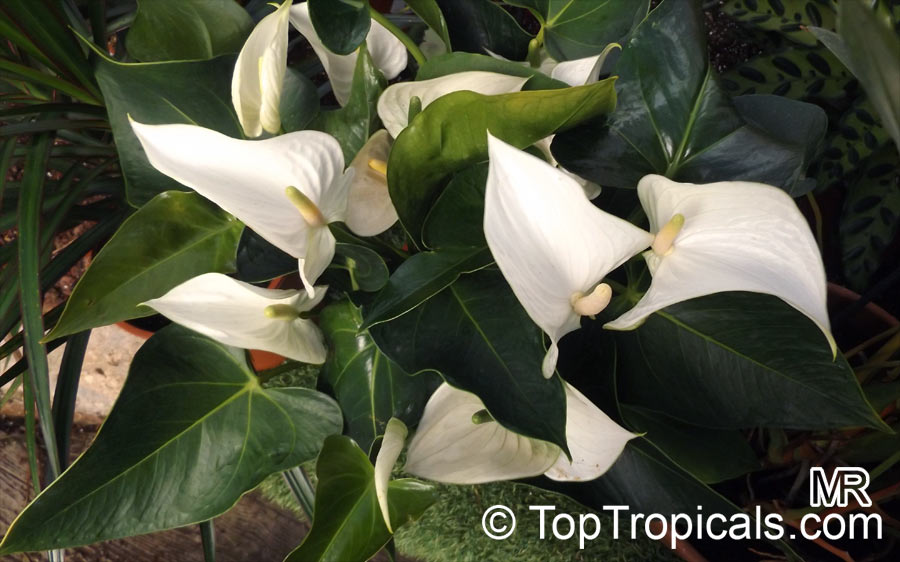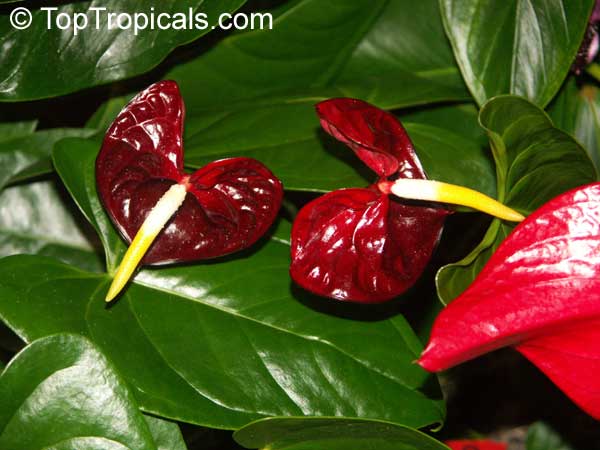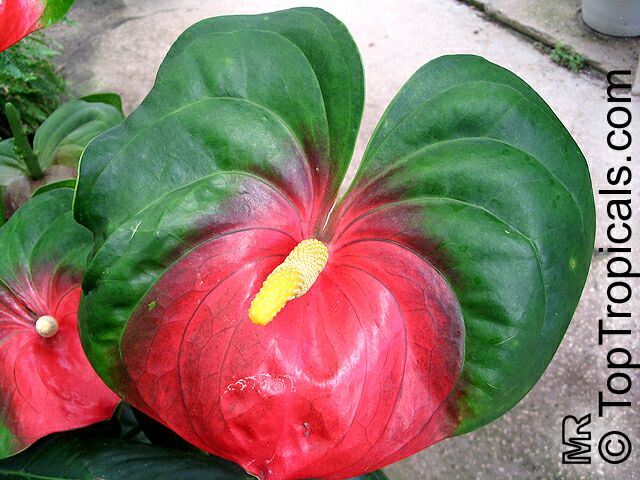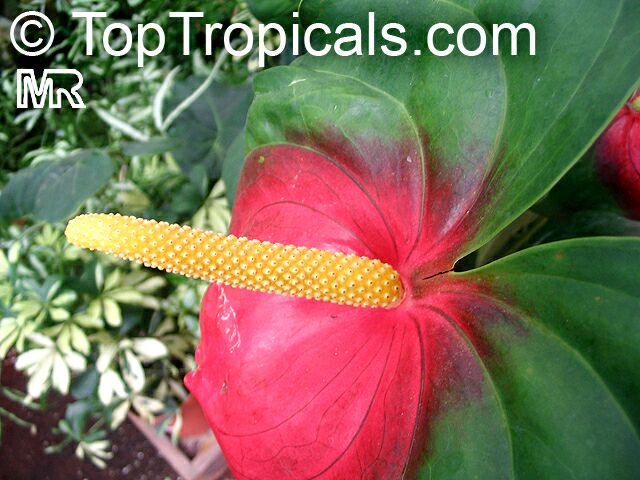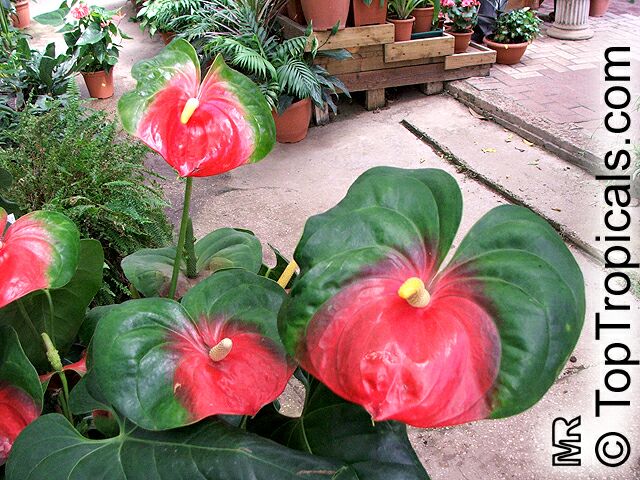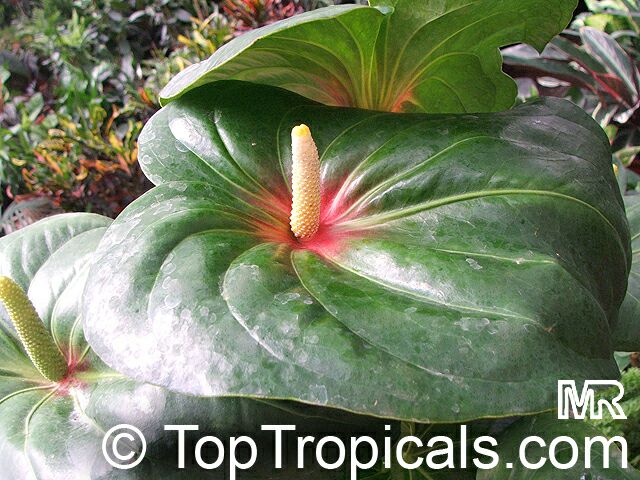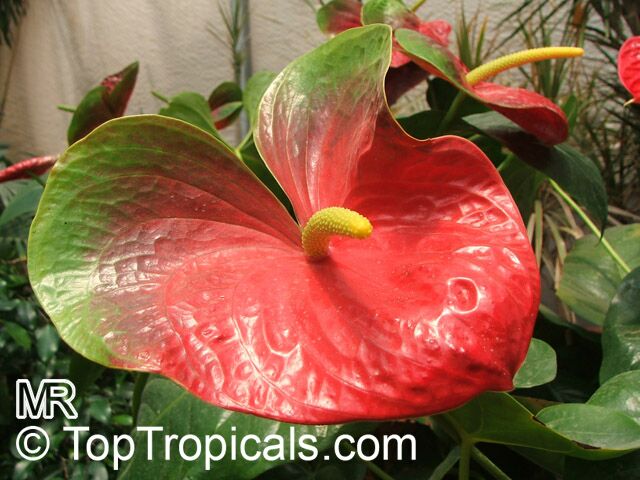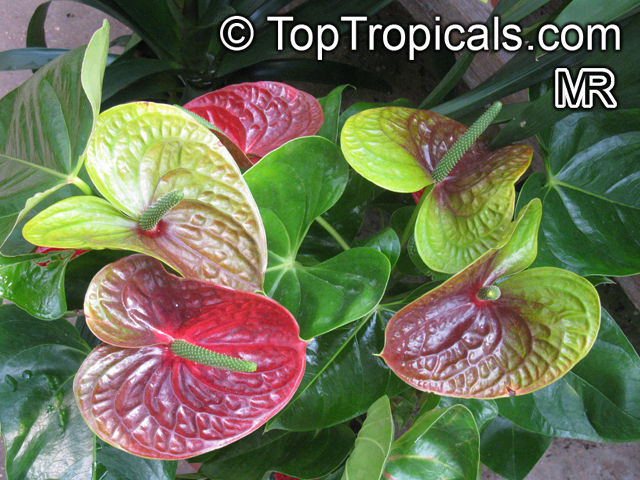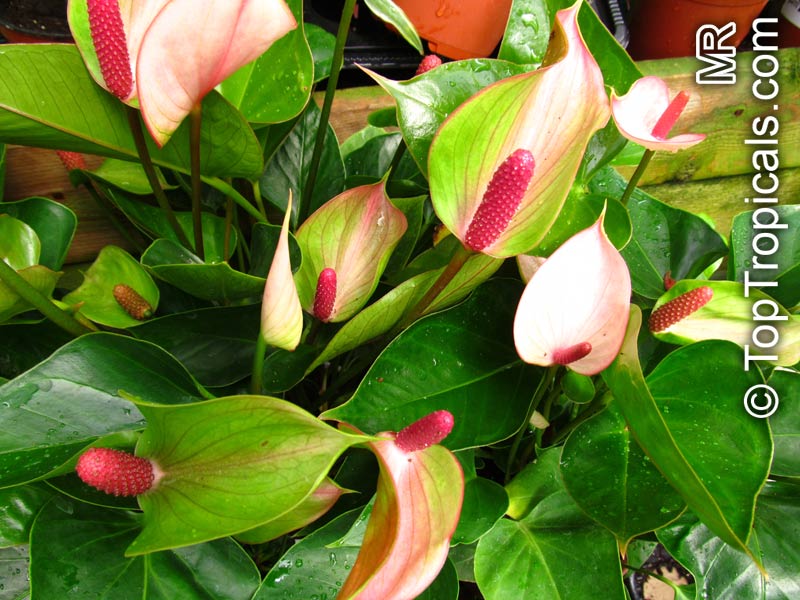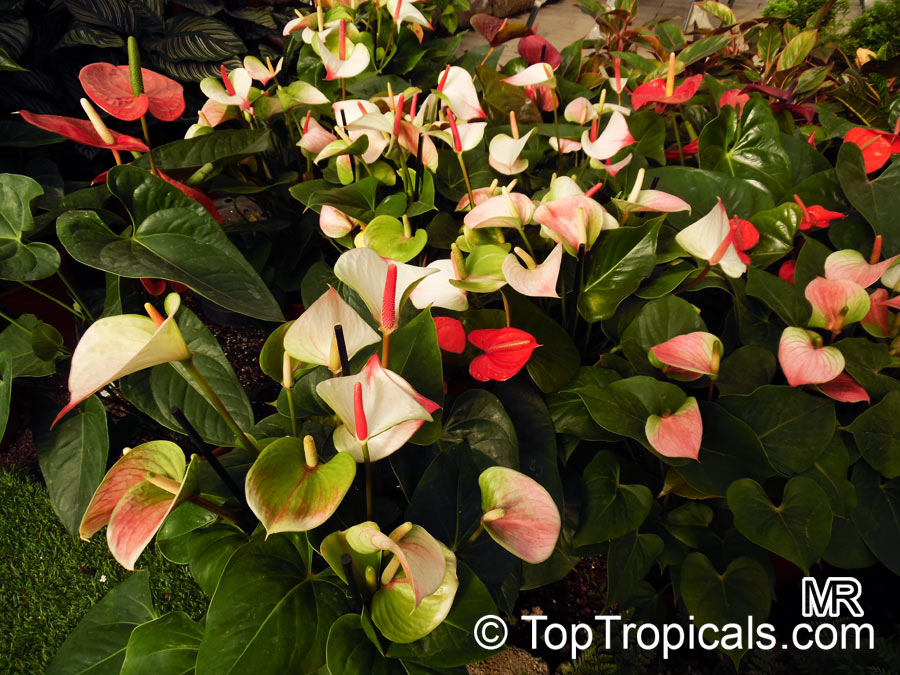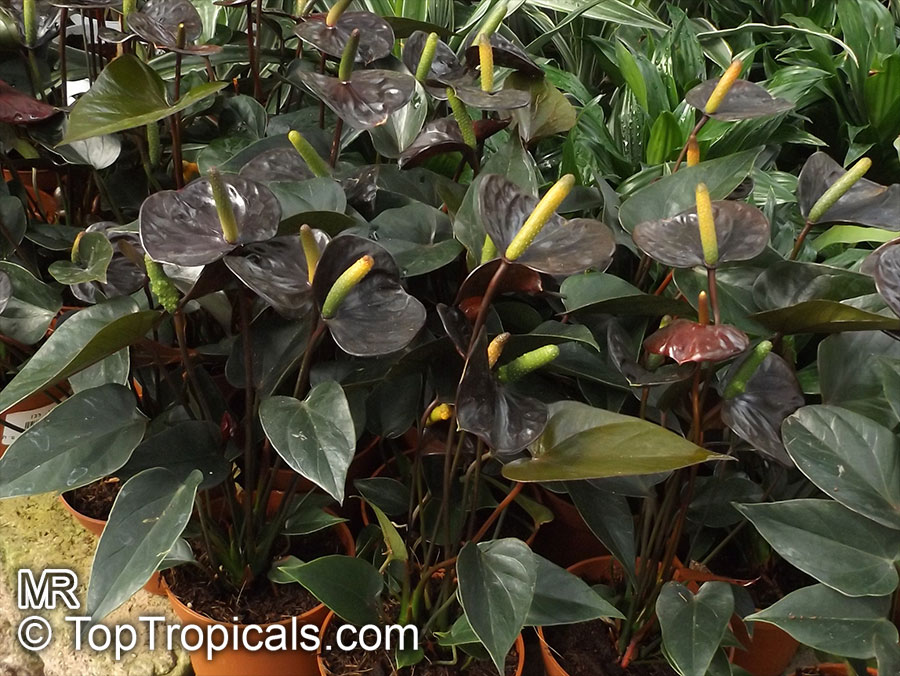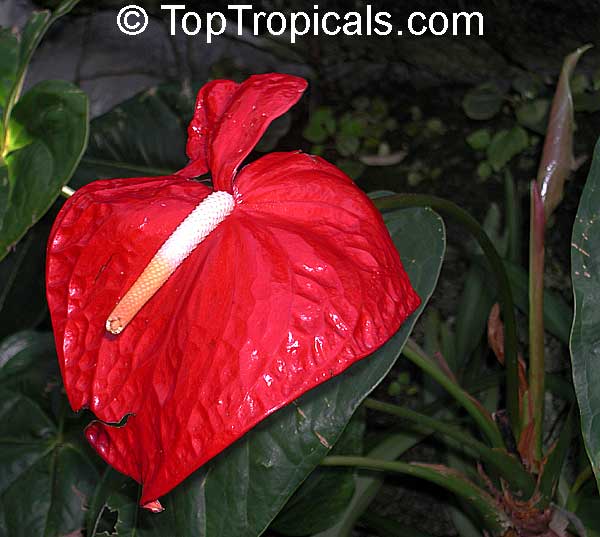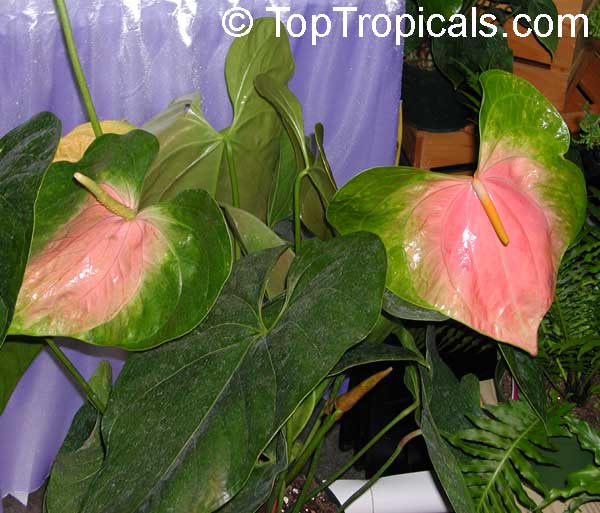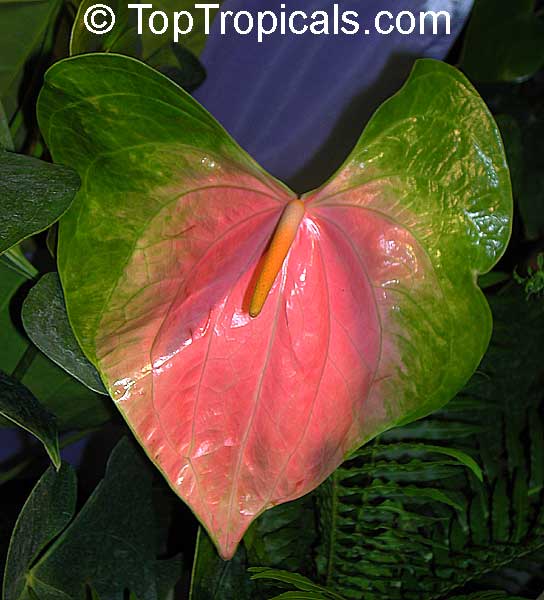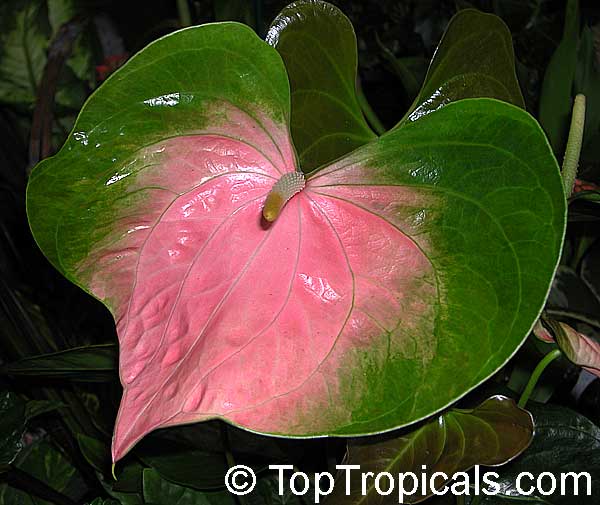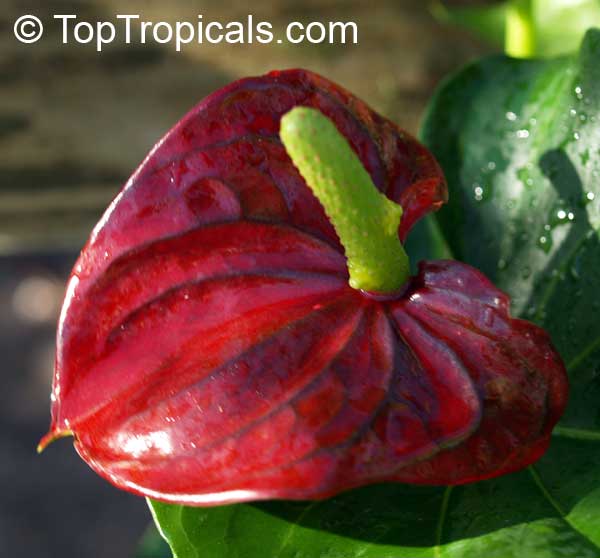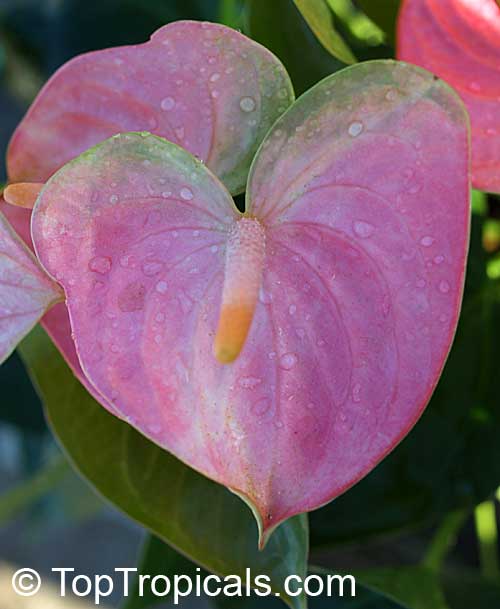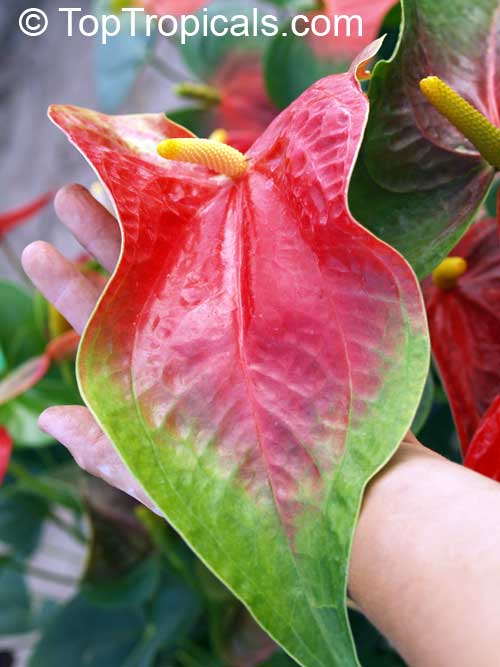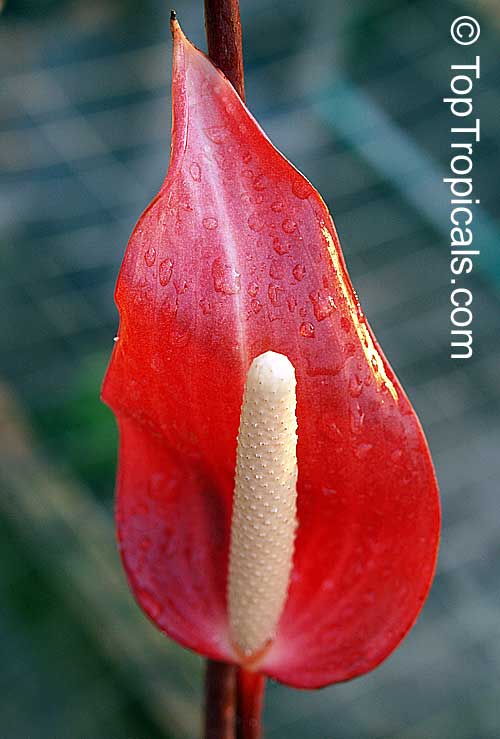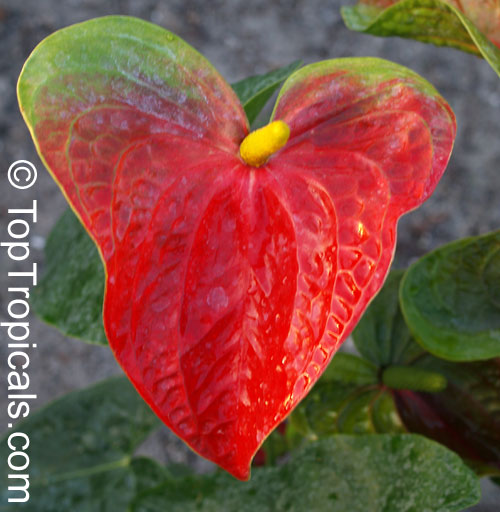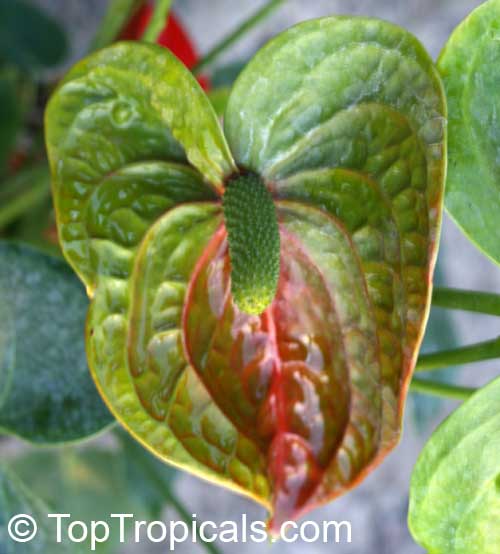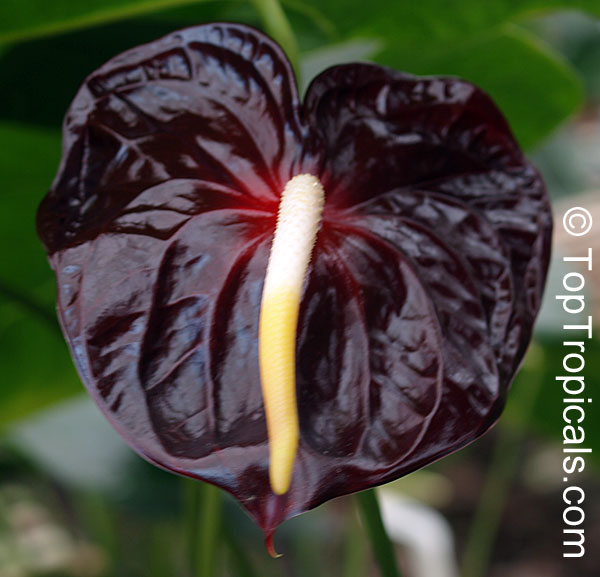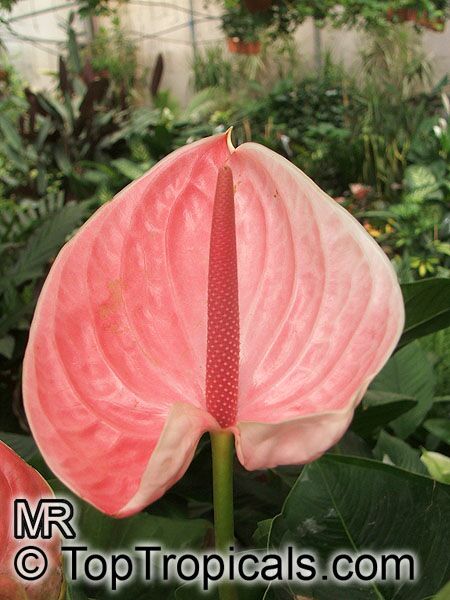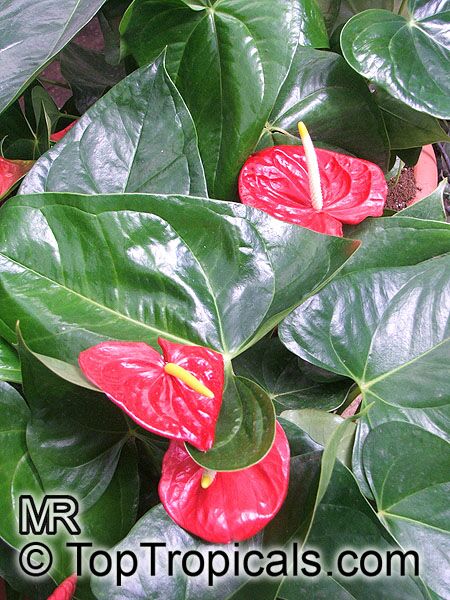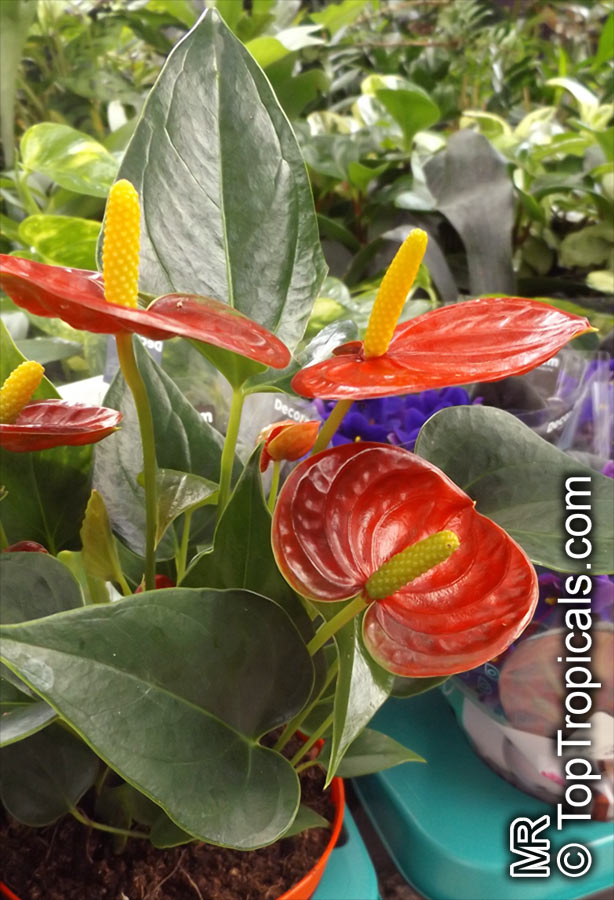Epiphyte plant - Search results
Top Tropicals Plant Encyclopedia
| Number of plants found: 230 | Next | 
|
Go to page: | 1 | 2 | 3 | 4 | 5 | Last |
Botanical name: Acanthostachys strobilacea
Common name: Pinecone Bromeliad
Family: Bromeliaceae
Subfamily: Bromelioideae
Origin: Brazil, Paraguay, Argentina






Native to Brazil, Paraguay, and Argentina, Acanthostachys strobilacea (Pinecone Bromeliad) is a small shrub that grows to reach 2-5ft in height. This attractive epiphyte requires a moderate amount of water and semi-shade to grow and thrive, making it the perfect plant for a hanging basket in a sunny or partially-shaded location. Its leaves are a deep green with gray scurf and spines, while its flowers range in color from yellow to orange.
Despite its exotic appearance, Acanthostachys strobilacea is low-maintenance, making it ideal for gardeners who don't have much time to spare on tending to their plants. In addition, it is drought-tolerant and can even thrive in xeriscaped environments.
For those who live in USDA Zone 9-11, Acanthostachys strobilacea is well-suited for growing in containers. The plant can be successfully grown in cold regions as long as its soil is kept moist. In cooler climates, the plant should be moved to a sheltered area during the winter months to ensure the soil does not become too cold and wet, as this could damage the roots. Furthermore, when growing in a pot, it is important to ensure the pot is well-drained and to water the plant regularly and deeply.
Overall, Acanthostachys strobilacea is a beautiful and exotic plant that is low-maintenance and drought-tolerant, making it a great addition to any sunny or partially-shaded garden. With the right care, it can thrive in its environment and bring a unique beauty to any garden.
Botanical name: Aechmea fasciata
Common name: Silver Vase
Family: Bromeliaceae
Origin: Brazil







Aechmea fasciata has silver/green bands, rose pink bracts and blue, purple or red flowers. It requires partial shade and a well-drained, but moisture-retentive soil. It can also be grown epiphytically, as, for example, with moss around its roots and wired to rough bark.
Botanical name: Aechmea sp.
Common name: Bromeliad
Family: Bromeliaceae
Subfamily: Bromelioideae
Origin: Tropical America









The Aechmea is very diversified, hardy, extremely popular, and very easily cultivated in the bromeliad family group. They range in sizes from a very tiny 6 inches, to more than 10 feet in height and 6 feet in diameter. Their foliage colors vary from lime green, yellow, red, burgundy, and black, and incorporates many patterns, spots, stripes, bands, silvering, shadings, and blotches. These patterns often vary form the top of the leaf to the bottom of it. The Aechmea family has large inflorescence and brightly colored, long lasting bracts that holds the magnitude of tiny flowers. Often the colorful berry-like fruits mature for a long time on the flower spike. It's a very healthy, cold and rot resistant plant to grow outdoors fixed in trees, walls, or, in pots in an orchid mix.
Adult plants need a sunny position to become red in the blooming period. In a luminous shade it flowers, but the leaves remain green. The rose bracts persist a long time, and if flowers are pollinated black pointed fruits will appear as shown in the picture. It's curious because, when the plant grows in very shaded locations the leaves become very long, to the point to seem a completely different plant and very elegant indeed, with no weak aspects. However, if it is gradually moved to full sun it blooms and the leaves become red.
Botanical names: Aerangis hariotiana, Microterangis hariotiana, Chamaeangis hariotiana
Common name: Hariot's Microterangis
Family: Orchidaceae
Origin: Comoros






Its flowers are irresistible to butterflies, moths, and hummingbirds. Aerangis hariotiana (Hariot's Microterangis) is an epiphytic plant native to Comoros, a set of islands off the coast of East Africa. The plant has ovate-lanceolate leaves and grows 2-5 ft tall. It prefers semi-shade, but can still thrive in bright filtered light.
Aerangis hariotiana will thrive in USDA Zone 9-11 and can be grown as a potted plant indoors in colder regions as long as it is given the appropriate amount of humidity, light and water. This plant does best in a light and airy potting mix with several handfuls of natural material such as fir-bark, perlite, and other ingredients, depending on the composition of your soil. It's important to keep the soil lightly moist, but not soggy.
Aerangis hariotiana also requires humidity and should have its roots misted regularly to prevent dehydration. Lastly, it is a good idea to use a balanced fertilizer at least once a year.
Besides its strongly night-scented, sherbet-orange miniature flowers, Aerangis hariotiana also attracts hummingbirds and butterflies, making it a great addition to any garden. Its blooms appear in late winter and early spring, making it an unusual addition to gardens in cold-weather regions. If you're looking for a unique statement piece to add to your garden, this small and prolific bloomer is sure to catch the eye!
Botanical names: Aerangis luteoalba, Angraecum rhodostictum
Common name: Beige Aerangis
Family: Orchidaceae
Origin: Central Africa





A small, usually pendulous, monopodial epiphyte that is almost stemless. The short stem is hidden by the basal sheaths of closely set leaves. The roots are often flattened, with thin velamen, are green when wet, and have emerald green tips. Aerangis luteo-alba var. rhodosticta has yellowish white flowers with a bright orange-red column.
Cultivated plants should be kept moist during periods corresponding to the wet seasons. They should be allowed to dry slightly between waterings during the dry seasons, but should never dry out completely or be left dry for extended periods.
Botanical name: Aerides odorata
Common name: Fragrant Aerides
Family: Orchidaceae
Origin: Indochina, Himalaya







This species is a large to giant sized, highly variable, hot to cool growing epiphyte. Like related genera, Aerides are best grown in open slatted baskets. Aerides species require ample water, every day in warm climates. 70% or higher relative humidity is beneficial although the plants can be grown lower. They require bright filtered light with some direct sunlight in the morning, semi-shade area placement is perfect.
Botanical name: Aeschynanthus speciosus
Common names: Basket Plant, Lipstick Plant
Family: Gesneriaceae
Origin: Southeast Asia








Aeschynanthus speciosus is a species of flowering plant native to tropical rainforests. It is known for its large, fleshy, dark green leaves and colorful flowers, which can be red, crimson, or vinous in color, with yellow or orange interiors.
In cold regions, this plant can be grown in containers and brought indoors during the winter. To prepare the pot, mix equal parts potting soil, peat moss, and perlite, and keep the soil moist. During the growing season, fertilize the plant every two weeks. In USDA Zone 9-11, it can be grown in full sun and should be watered once a week.
Aeschynanthus speciosus is an excellent choice for hanging or trailing plants, and is suitable for a greenhouse, sunroom, or conservatory. It thrives in high humidity and warmth, and requires strong, indirect light. As a groundcover, it can be planted up to two feet apart in shade or semi-shade. It blooms from late spring to fall.
Botanical name: Ansellia africana
Common name: Leopard Orchid
Family: Orchidaceae
Origin: South Africa
Hardiness: 50°F






Ansellia africana, also known as the Leopard Orchid, is a striking epiphytic orchid native to sub-Saharan Africa. It forms large clumps of tall, cane-like pseudobulbs with long, arching leaves, and produces numerous yellow flowers covered with bold brown or maroon spots that resemble the pattern of a leopard's coat. These showy blooms appear in branching sprays and make the plant one of the most distinctive African orchids. The species is highly regarded for its dramatic floral display and the ability to thrive in bright light, often growing high in trees in the wild.
In cultivation, Ansellia africana requires warm temperatures, abundant light, frequent misting to keep aerial roots hydrated, and good air movement to prevent rot. It benefits from regular watering during active growth but prefers a drier rest period after flowering. This orchid is not frost tolerant and should be grown in USDA Zones 10-11, with protection required if temperatures fall below 50 F. Large plants adapt well to baskets or open containers that allow their extensive roots to develop freely, and they reward consistent feeding with impressive floral displays.
Botanical name: Anthopterus wardii
Common name: Neotropical Blueberry
Family: Ericaceae
Origin: Panama, Columbia, Equador







Anthopterus wardii is an evergreen, herbaceous plant with a highly variable growth pattern. Growing to 2-5 ft tall, this small shrub is native to the forests of Panama, Colombia, and Ecuador.
The foliage ranges from bright green to a dark blue-green color and is generally glossy. It prefers full sun or semi-shade to flower prolifically and is also an ethnomedical plant. In a garden setting, Neotropical Blueberry should be planted in well-draining, acidic soil and given regular watering.
The primary draw of Anthopterus wardii is the beautiful off-white to white flowers which bloom from mid to late spring. The fragrant flowers are preferred by bees and hummingbirds for foraging, though the berries that follow are toxic to humans. It is suitable to be grown in USDA Zone 9-11, and may require winter protection in colder regions. It will do best in a planter with its root system kept moist, in order to protect it from freezing temperatures.
Anthopterus wardii is a low-maintenance plant with its care limited to keeping its soil moist, but not sopping wet or saturated. Pruning any weak or dead limbs will result in the most attractive appearance. It is able to adapt to almost any garden setting, making it a great addition to any outdoor spaces that enjoy partial sun and are located in the south.
Botanical name: Anthurium andraeanum
Common names: Flamingo Flower, Tail Flower
Family: Araceae
Origin: Ecuador and Colombia









There are hundreds of species of this genus, all members of the Araceae family. The majority are fairly nondescript and a few are grown for their handsome foliage. There are only two species which are generally grown for their flowers, Anthurium andraeanum and Anthurium scherzerianum. Both types are basically epiphytic and grown best in a mix of bark, perlite and fern fiber such as that used in orchids or bromeliads. They will grow in soil but rarely perform well in that medium. Anthurium andraeanum is the florist anthurium, a plant with red, white or pink spatches which have an artificial, plastic-like look. Give a moderately high light intensity but avoid direct sunlight during the spring and summer months when the sun is most intense. A high humidity is essential as is warm temperature, 70-75 days, 65 minimum at night. The potting mixture should be kept moist, but not soggy during the spring- summer period and allowed to dry slightly between waterings from late fall through winter. A feeding of weak manure water and a fish emulsion may be given every two weeks from late winter to mid summer.
Both species have a tendency to grow up out of the pot. The exposed aerial roots should be wrapped in moist sphagnum.
When the plant is eight inches or higher out of the pot it may be cut off at the base and repotted in fresh potting mixture. Plants will occasionally split and form pups. These can be divided when large enough. Plants are also propagated by stem cuttings and seed, both of which are extremely difficult without greenhouse facilities.
Real Hawaiian lava rock is hand selected to provide a happy home for Anthurium. With reasonable care your volcano bonsai should last for years. Place in a bright window or on a countertop without direct sun and just keep a small amount of water in the saucer/tray provided. Requires consistently moist soil.
| Next |  |
Use link to repeat this search:
https://toptropicals.com/cgi-bin/garden_catalog/cat.cgi?search_op=and&keyword_op=and&language=e&number=10&no_change_lang=1
&v1=eph&user=tt&sale=1&first=0
